It seems we can’t find what you’re looking for. Perhaps searching can help.


Blog

 2
2

 441
441

 0
0

 1
1
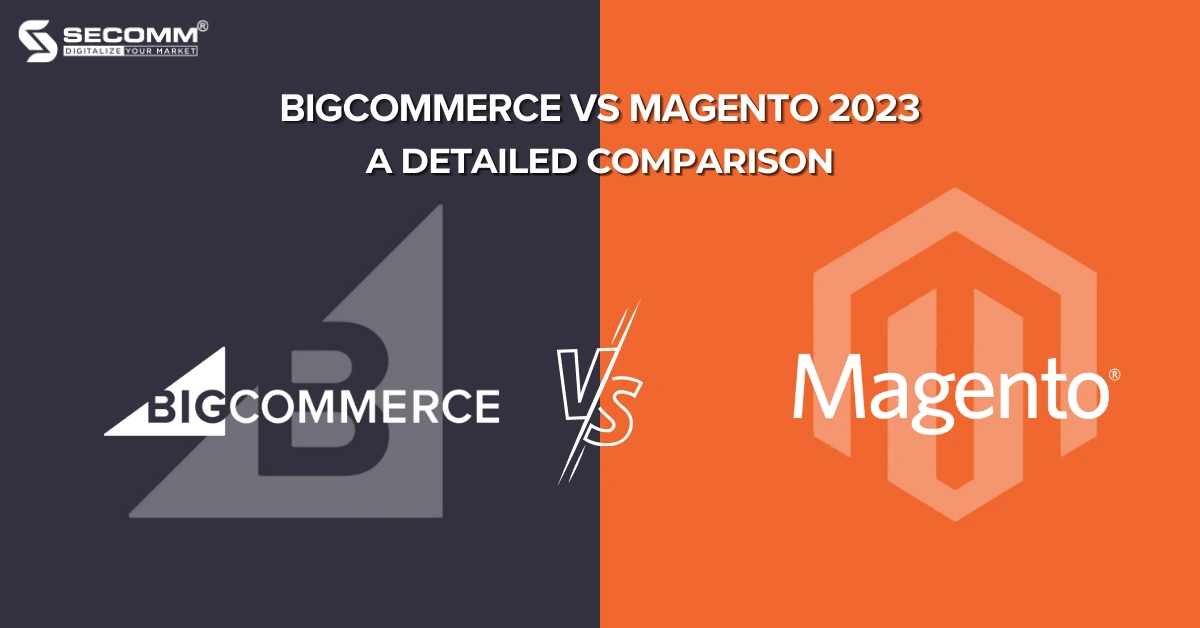
 2
2

 10,005
10,005

 0
0

 1
1
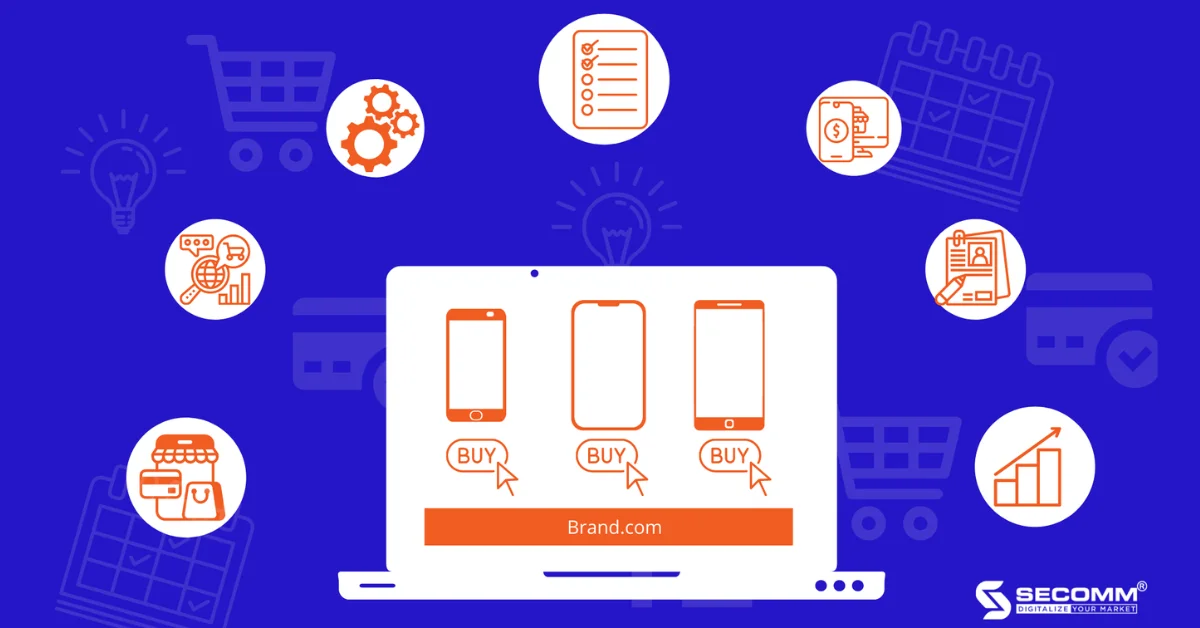
 2
2

 9,991
9,991

 0
0

 1
1
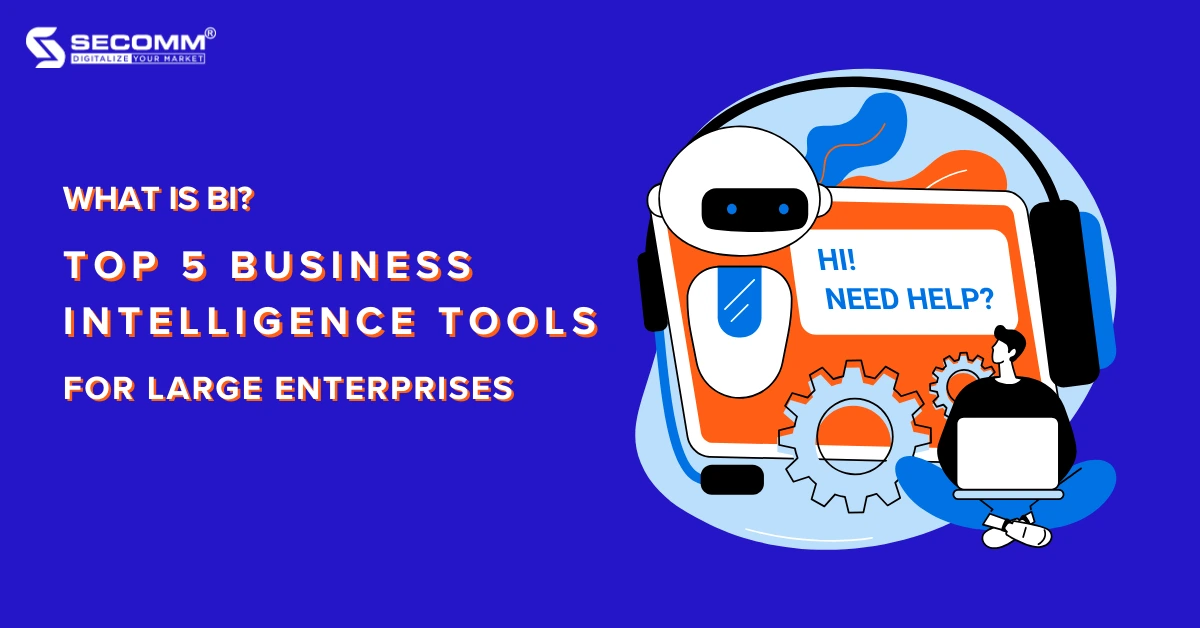
 2
2

 9,887
9,887

 0
0

 1
1
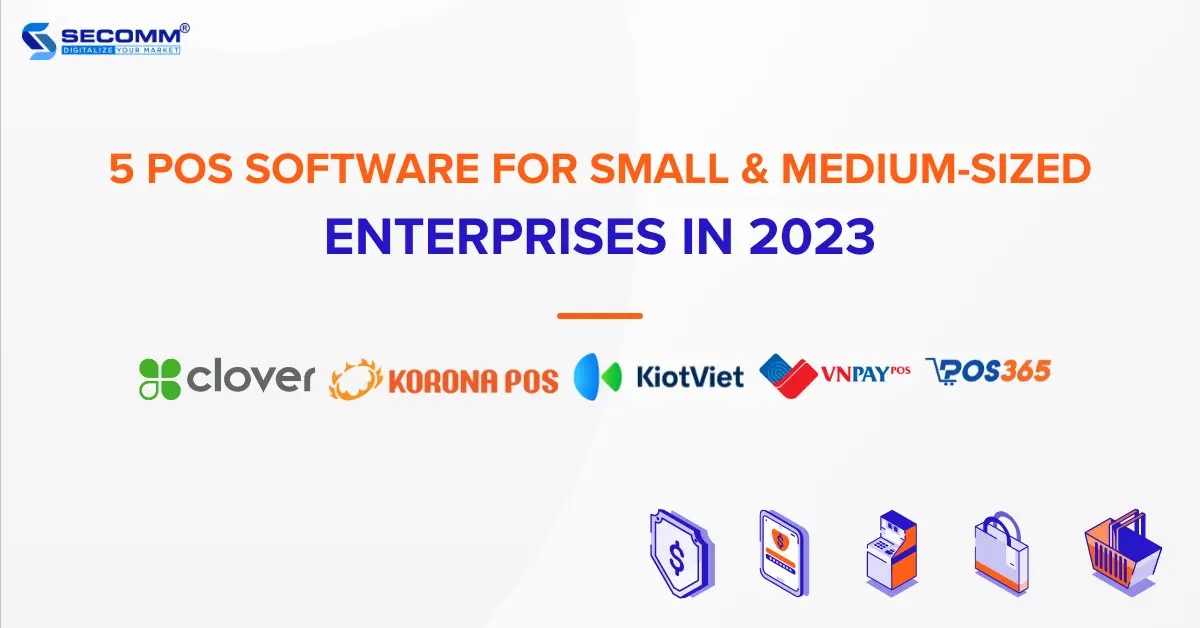
 2
2

 9,886
9,886

 0
0

 1
1




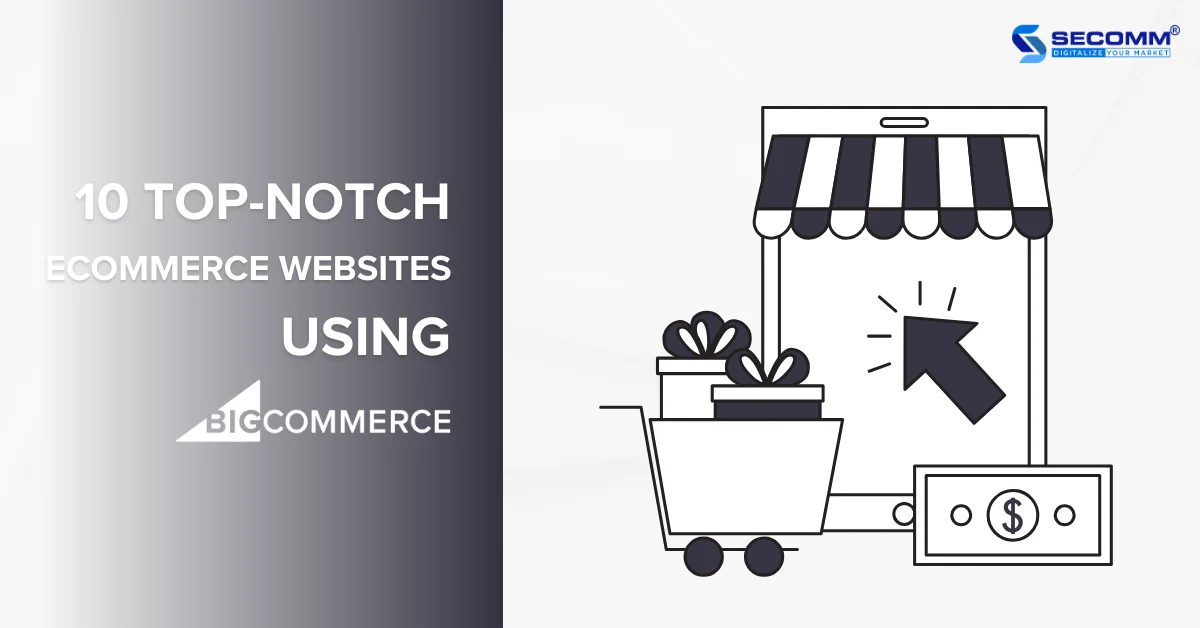
BIGCOMMERCE 2023: PRICING, FEATURES, PROS AND CONS
Table of Contents
BigCommerce is one of the most popular eCommerce website-building platforms today. Its flexibility, user-friendliness, cost-effectiveness, and a wide array of built-in tools and features make it a preferred choice for businesses of all sizes.
This article aims to clarify the definition of BigCommerce, its features, pros and cons to provide businesses with valuable insights into the multitude of platforms available for selection.
What is BigCommerce?
Established in 2009, BigCommerce is a user-friendly platform tailored for businesses of all sizes and technical expertise to start developing their own eCommerce websites. Over the years, BigCommerce has emerged as one of the most feature-rich platforms, encompassing all the essentials for website creation, search engine optimization, marketing, and more, all at a cost-effective implementation.
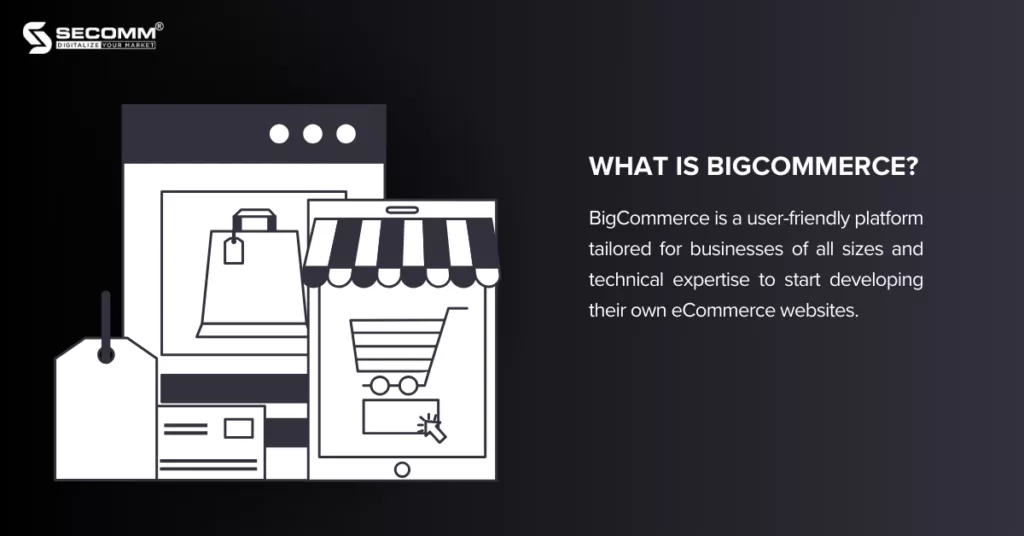
In addition, BigCommerce is known as a SaaS eCommerce solution, which means businesses subscribe on a monthly basis, and the platform takes care of hosting, maintenance, and system security matters.
BigCommerce Pricing Plans
BigCommerce provides three pricing plans tailored for small and medium-sized businesses (Standard, Plus, Pro), priced between $29 and $299 per month, each equipped with essential features. Moreover, the platform offers a customizable plan (Enterprise) for large businesses based on their deployment requirements.
The table below illustrates the cost variations among these four pricing plans and includes some relevant factors:
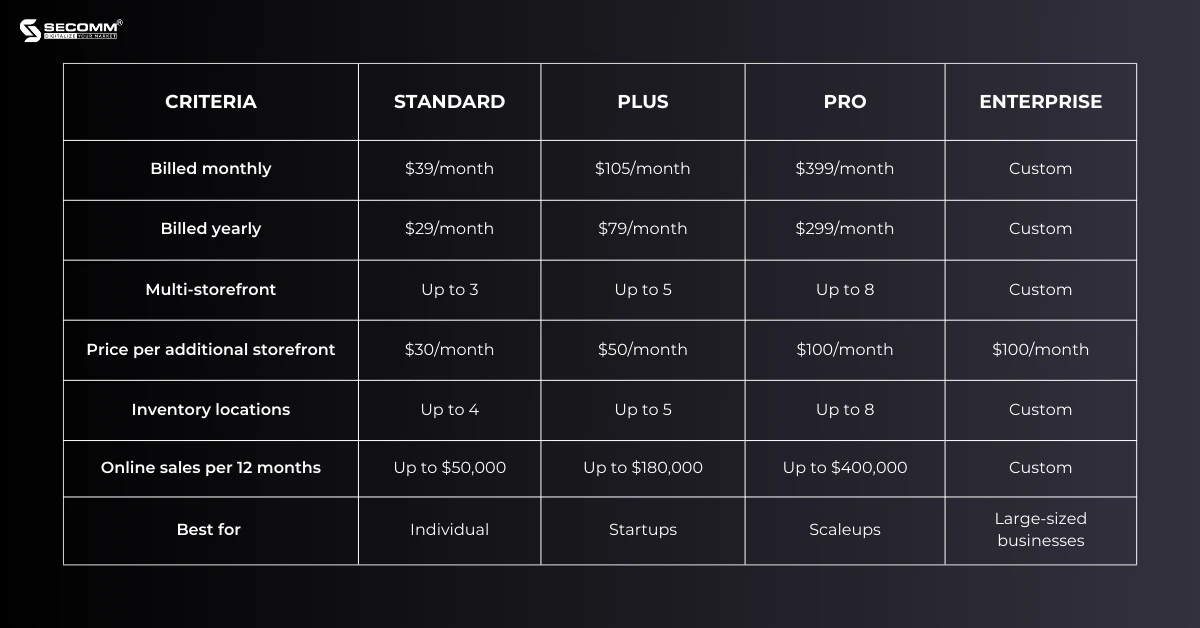
Despite several differences, all four packages share some common points:
- No transaction fee
- Unlimited bandwidth, products, file storage
- Unlimited staff accounts
- 24/7 customer support
- 12 free themes
BigCommerce Features
Included in all plans
Key features of BigCommerce, available in all four pricing plans, include:
- Point of Sale (POS): Seamless integration of online and offline sales with POS systems like Vend, Square, Clover, and more.
- Mobile-Responsive Design: Websites are designed to adapt and perform well on mobile devices.
- BigCommerce Mobile App: Manage orders, track customer journeys, and monitor performance via the user-friendly BigCommerce mobile app, downloadable from the App Store or Google Play.
- Single-Page Checkout: Simplify the payment process with a single-page checkout, reducing cart abandonment and boosting conversion rates.
- Promotions and Discounts: Easily create and manage coupons, discounts, and gifts without the need for third-party integrations.
- Built-In Blog: Improve SEO and engage customers with a built-in blog.
- Product Ratings and Reviews: Gather customer feedback to enhance products and services.
- Multi-Currency Support: Accept over 100 currencies and local payment methods.
- Professional Reporting Tools: Access professional analytics and reporting tools for performance evaluation and adjustment.
- Real-Time Shipping Quotes: Provide accurate shipping costs in real-time from various carriers.
- Free Site-Wide HTTPS & SSL: Ensure website security with free HTTPS protocol, creating a safe shopping environment for customers.
Features
The features available in the ‘Standard’ plan are consistent across all four pricing plans. However, there are some advanced features that are not included, and businesses may need to consider upgrading their plan to access these specific features. Here’s a breakdown:
- Plus:
In addition to the ‘Standard’ features, this plan offers:
- Cart abandonment features.
- Stored credit cards for future purchases.
- Customer groups and segmentation for pricing, product recommendations, targeted promotions, and personalized experiences.
- Top social & marketplace: Integration with top e-commerce platforms and social networks such as Amazon, Facebook, Instagram, etc.
- Pro:
The ‘Pro’ plan encompasses all ‘Standard’ and ‘Plus’ features, along with:
- Google customer reviews for collecting and showcasing customer feedback on Google.
- Advanced product filtering to enhance the shopping experience.
- Custom SSL integration with third-party SSL services.
- Enterprise:
Designed for large-scale enterprises, this top-tier package includes all features from the previous packages and introduces several advanced capabilities:
- Unlimited API calls, facilitating seamless data sharing between eCommerce websites and third-party applications without any limitations.
- Priority support with personalized assistance, including dedicated API support.
Pros of BigCommerce
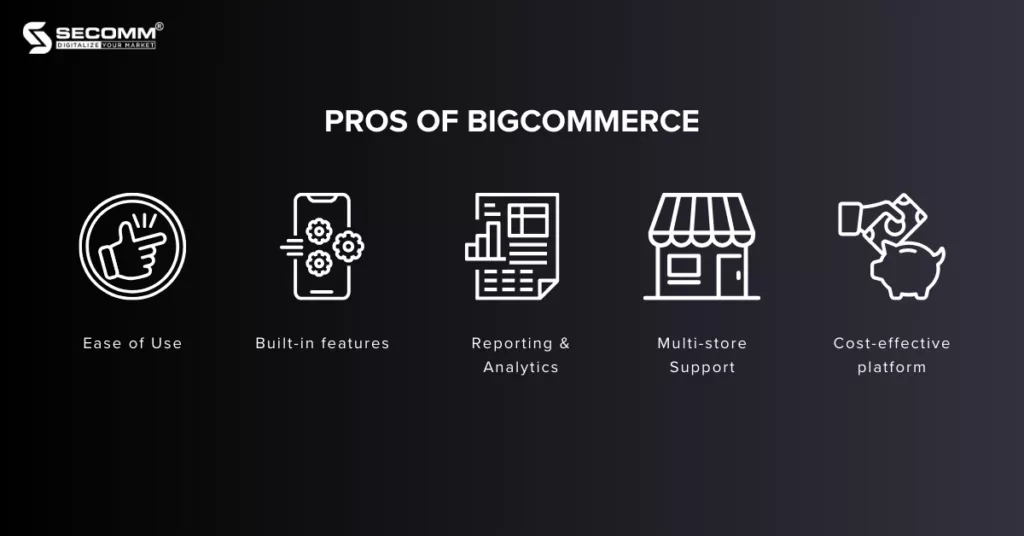
Ease of Use
BigCommerce, designed as a SaaS platform, boasts user-friendliness catering to both tech-savvy and non-technical users. It offers a wide range of themes to facilitate swift website development and provides an array of tools for executing promotional campaigns.
Built-in features
When compared to other SaaS platforms, BigCommerce stands out for its capacity to offer a comprehensive set of built-in features and tools across its pricing plans. This results in cost savings for businesses, reducing their reliance on third-party applications and plugins, which can often incur extra expenses. Moreover, these features have been fine-tuned to boost performance and streamline the eCommerce management process.
BigCommerce also provides its users with the BigCommerce mobile app, enhancing the convenience of managing, monitoring, and updating their eCommerce websites.
Reporting & Analytics
Unlike Shopify, which offers a range of reports and analytics based on the pricing plan chosen, BigCommerce provides professional-level reporting and analytics across all its solution packages. These encompass customer reports, sales reports, financial reports, marketing reports, and more. Moreover, for businesses in need of more extensive data capabilities, BigCommerce offers a wide app library for easy integration with third-party software
Multi-store Support
BigCommerce distinguishes itself from competitors by providing multi-store support across all of its pricing plans. This feature is especially advantageous for businesses that operate multiple stores or are active in various segments, such as B2B and B2C. With the Standard plan, a business can create up to 3 stores, while the Plus and Pro plans allow for 5 and 8 stores, respectively. In contrast, Shopify, a leading SaaS platform, offers multiple store capabilities exclusively through its Shopify Plus solution, which starts at a monthly cost of $2,000.
Cost-effective platform
Using BigCommerce helps businesses save costs in various aspects such as hosting, maintenance, updates, and security. BigCommerce handles these tasks, eliminating the need for additional expenses. Regardless of the chosen pricing plan, BigCommerce doesn’t impose transaction fees, provides unlimited bandwidth and file storage without extra charges, and permits the creation of an unlimited number of staff accounts.
In addition, compared to Shopify, where businesses may incur significant costs to integrate third-party apps and utilities for enhanced functionality, BigCommerce includes essential features tailored to each plan. This integrated approach results in significantly more cost-efficient operations.
Cons of BigCommerce
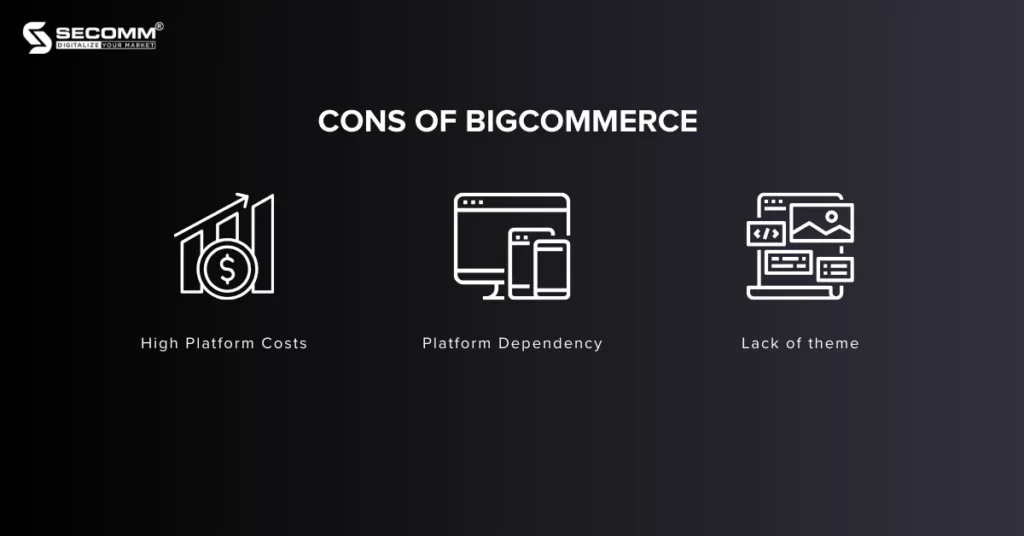
High Platform Costs
When compared to other SaaS platforms like Shopify or Squarespace, the cost of using the BigCommerce platform seems relatively higher.
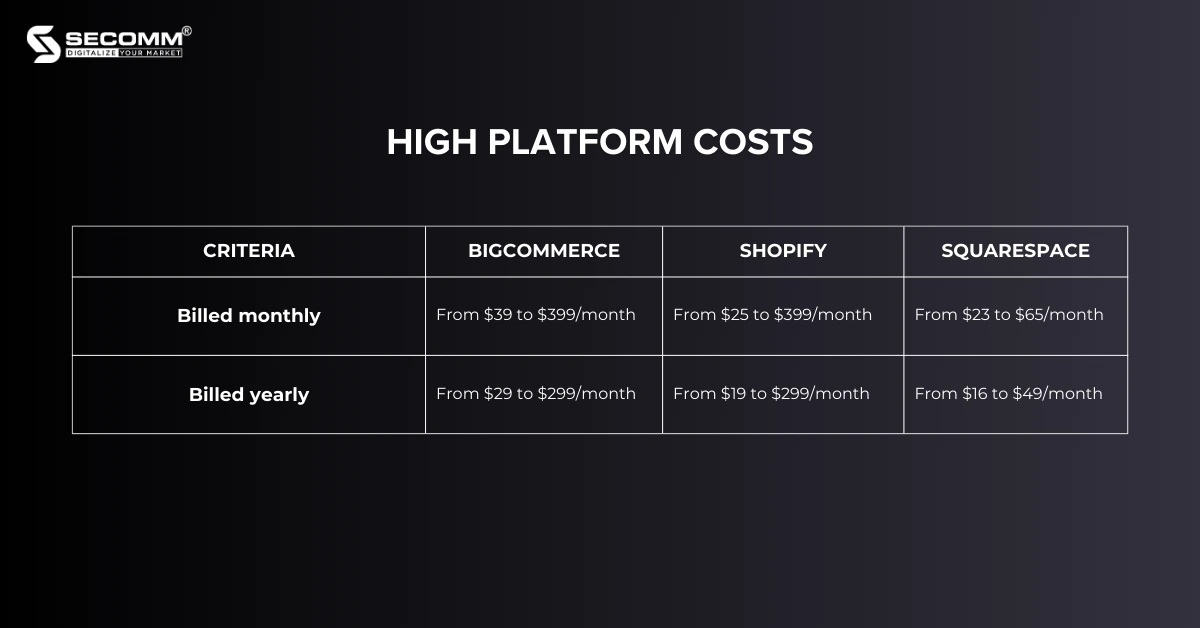
Plus, businesses must continue to pay this ongoing fee along with any charges for third-party services (if applicable) on a monthly basis, without ownership or control over the source code and system data.
On the other hand, open-source platforms such as Magento or OpenCart require businesses to make a one-time payment for both usage and service integration fees, granting them long-term ownership of the source code and system data.
Platform Dependency
Just like other SaaS eCommerce platforms in the market, BigCommerce retains ownership and control over the source code and data of the entire eCommerce website system.
In practical terms, this means that all of a business’s eCommerce data becomes closely tied to BigCommerce’s database. Therefore, if a business wishes to migrate to another platform in the future, it can only access CSV files containing a portion of its data.
Additionally, while it’s exceptionally rare, in the unlikely event that BigCommerce were to suddenly cease all operations, all data related to a business’s activities on this platform could potentially be lost.
Lack of theme
At the time of writing, BigCommerce provides users with a selection of 12 free themes and approximately 180 paid themes. This count is somewhat limited in comparison to other SaaS platforms like Wix or Squarespace.
The free themes come with modern and professional interfaces, suitable for businesses to start their eCommerce website journey. However, these themes are quite similar to each other, differing mainly in color schemes.
In reality, despite the claim of having 12 themes, users often discover only around 5-6 truly distinctive options.
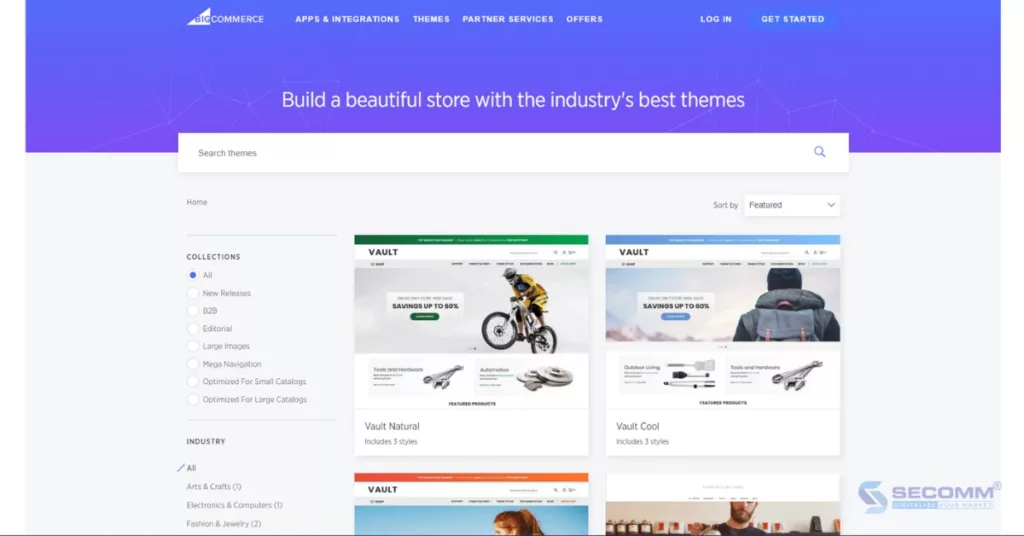
The paid themes, on the other hand, come with a price tag ranging from $195 to $395, and some of them may have similar designs.
However, BigCommerce offers a significant advantage: all the free and paid themes are visually appealing and highly responsive. This means that these themes can automatically adapt their layouts to suit various screen sizes, including smartphones, tablets, desktop computers, and more.
- Related content: 10 Top-notch eCommerce Websites Using BigCommerce
For many years providing eCommerce solutions for clients across the globe, SECOMM has observed a growing trend when it comes to eCommerce website development, particularly on the BigCommerce platform.
To gain a deeper understanding of BigCommerce and how to deploy it the right way, feel free to reach out to us or call our hotline at 02871089908 for free consultations.
 2
2

 7,560
7,560

 0
0

 1
1

5 POS SOFTWARE FOR SMALL & MEDIUM-SIZED ENTERPRISES IN 2023
Table of Contents
Point of Sale (POS) is a system employed by businesses to handle sales transactions, monitor inventory levels, manage customer relationships, generate revenue reports, and conduct business analysis, among other functions. By implementing POS, businesses, particularly SMEs, gain a comprehensive understanding of their operational activities and streamline their management processes.
In this article, SECOMM will evaluate and compare the five most widely-used POS software solutions among small and medium-sized enterprises, including Clover, KORONA POS, KiotViet, and POS365.
Clover
Clover is a POS software developed by Clover Network Inc, aimed at offering an integrated solution for handling sales and payments for both small and medium-sized businesses. Clover provides POS solutions across various industries, including restaurants, services, retail, and more. Specifically, the costs associated with implementing Clover’s POS for retail SMEs are categorized into three primary packages:
- Starter: $799 + $14.95 per month (One-time payment option available) or $60 per month (Monthly payment option) – This package includes an 8″ merchant-facing POS.
- Standard: $1,799 + $49.95 per month (One-time payment option available) or $135 per month (Monthly payment option) – This package includes a 14″ merchant-facing POS
- Advanced: $2,398 + $64.90 per month (One-time payment option available) or $185 per month (Monthly payment option) – This package includes a 14″ merchant-facing and a handheld POS.
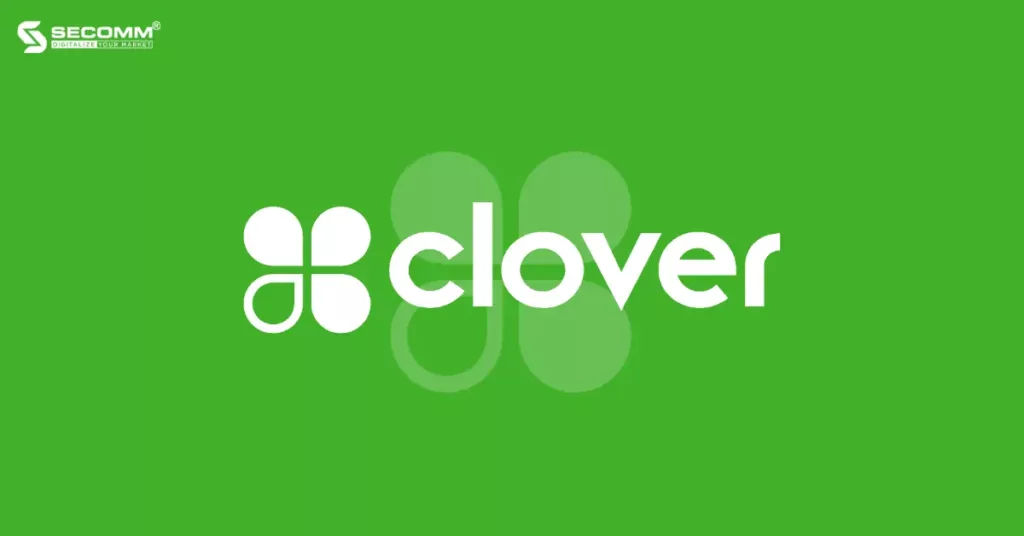
Pros
Ease of Use: The Clover interface is intuitive and user-friendly, making it easy to navigate on the touchscreen and access system functions.
Customization: Users have the flexibility to tailor the interface and configure the system to meet their individual needs. This includes modifying screen layouts, customizing function buttons, and setting options to align with specific business operations.
Offline Support: Clover is equipped to function offline, a valuable feature in the event of an internet connection disruption. Transaction data is securely stored and automatically synchronized once connectivity is restored, ensuring uninterrupted business operations.
Cons
High Initial Costs: Clover carries a higher initial price tag compared to alternative POS solutions, particularly for businesses choosing the comprehensive payment package. This may pose a barrier for smaller businesses operating with limited financial resources.
Invoice Formatting Limitations: Clover has some limitations regarding invoice formatting and customization, which can pose challenges for businesses with specific requirements for invoice formats and content. For example, adding special liquor consumption taxes, collecting stamps on invoices for grocery stores, and so on.
Rely on the Clover Ecosystem: Clover POS functions optimally within the Clover ecosystem and may not seamlessly integrate with diverse management systems such as CRM, ERP, etc., offered by different brands.
Korona POS
KORONA POS is a retail system developed by KORONA, intended to assist in sales management, payments, and inventory control for small and medium-sized businesses.
Currently, KORONA POS offers a range of solution packages for businesses to select from:
- Core: $59 per month – Suitable for small businesses or individuals managing a single store.
- Advanced: $69 per month – Geared towards small and medium-sized businesses handling a single store and inventory tracking.
- Plus: $89 per month – Ideal for small and medium-sized businesses managing multiple stores and keeping track of inventory.
- Enterprise: Custom Quote – Tailored for medium-sized businesses with specific customization requirements.
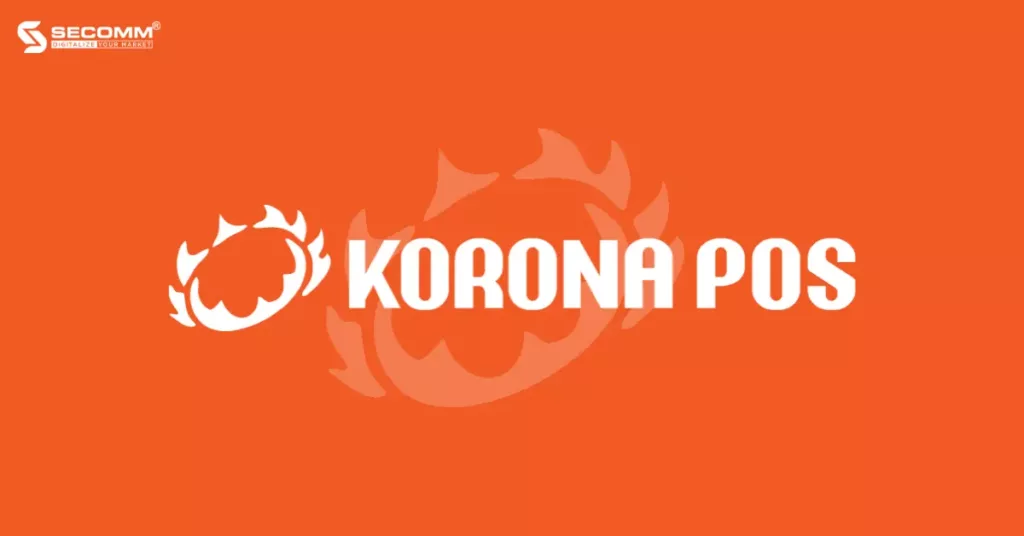
Pros
User-Friendly Interface: KORONA POS boasts a straightforward and user-friendly interface, ensuring ease of use even for employees lacking prior experience with POS systems.
Regular Updates and Upgrades: KORONA POS offers frequent updates and improvements to enhance its features and resolve issues, all while ensuring uninterrupted daily business operations.
Cross-Platform Compatibility: KORONA POS is compatible with multiple platforms, including desktops, laptops, tablets, and smartphones. This flexibility enables sales staff to process transactions and manage sales from virtually any location.
Cons
Internet Required: KORONA POS relies on a continuous internet connection to operate. Disruptions in the network connection can lead to interruptions or even render transactions and management tasks impossible.
Vendor Risk: When businesses adopt KORONA POS, they become reliant on the vendor for system maintenance and upgrades. Any issues or service deviations from the vendor can have an impact on the business’s operations.
POS System Migration Challenges: If a business has been using a different POS system and intends to switch to KORONA POS, the transition process can be intricate and may require a significant investment of time, effort, and resources to migrate all data effectively.
KiotViet
KiotViet is a business management and retail point-of-sale system catering to retail stores and restaurants. KiotViet provides an array of sales management features and tools, encompassing payment processing, inventory control, customer management, order handling, delivery, reporting, and business analysis.
KiotViet offers three options for implementing their POS system:
- Support: 200,000 VND per store per month – Ideal for small businesses, startups, or online retailers.
- Professional: 270,000 VND per store per month – Tailored for professional business models.
- Premium: 370,000 VND per store per month – Suited for businesses with multiple sales channels or a larger staff.
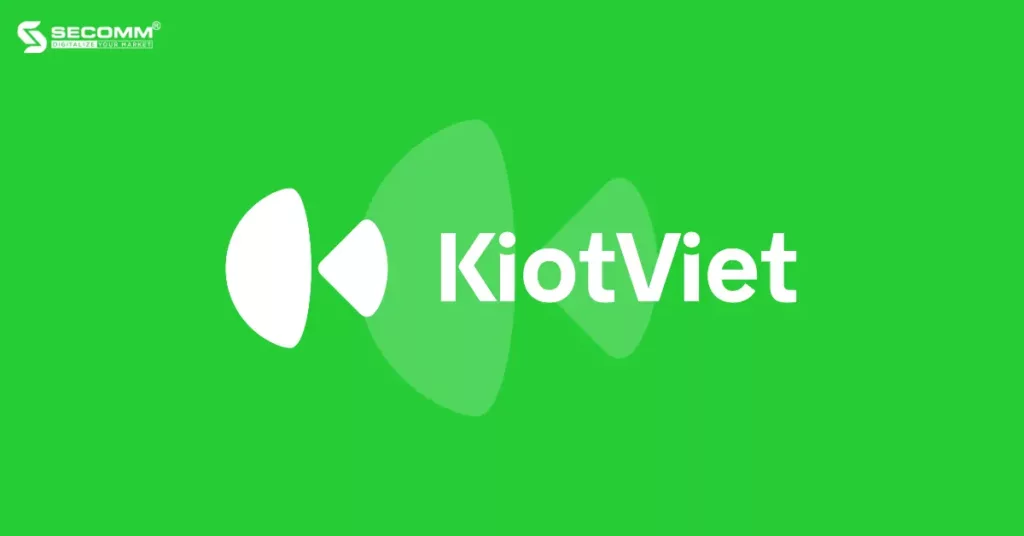
Pros
Ease of Use: KiotViet has a user-friendly interface with tailored support for Vietnamese users, eliminating the need for extensive technical expertise during setup and operation.
Seamless Integration: KiotViet offers flexible integration with various peripherals like printers, barcode scanners, payment devices, and other applications such as inventory management, HR management, and financial systems. This results in a comprehensive POS system for effective business management.
Efficient Inventory Management: KiotViet facilitates efficient inventory management, simplifying the process of updating product information and merchandise categories. Therefore, businesses can maintain control over inventory levels, monitor stock movements, and ensure on-time product availability.
Cons
License fee: KiotViet necessitates monthly or yearly license fee, which may pose challenges for small or recently formed businesses operating with limited funds.
Limited customization: While KiotViet provides some customization options, the capacity for complex customization to cater to individual business requirements may be limited.
Limitations in Niches Industries: KiotViet primarily targets retail and restaurant businesses, which implies that certain features or management procedures may not be well-suited or could be restricted for niche industries such as electronics, pets, agriculture, and others.
VNPAY-POS
VNPAY-POS, an ‘All-in-one’ solution developed by VNPAY, consolidates numerous features into a single device to comprehensively fulfill a business’s sales and payment management requirements.
VNPAY currently extends two primary options to businesses and organization using VNPAY-POS:
- Free service usage for businesses/organizations with payment fees exceeding 275,000 VND/month. For payments lower than this threshold, a flat fee of 275,000 VND/month/machine is applicable.
- Device rental is available at an affordable rate of just 165,000 VND/month. Businesses/organization achieving payment volumes surpassing 30,000,000 VND/month/machine qualify for free device rental.
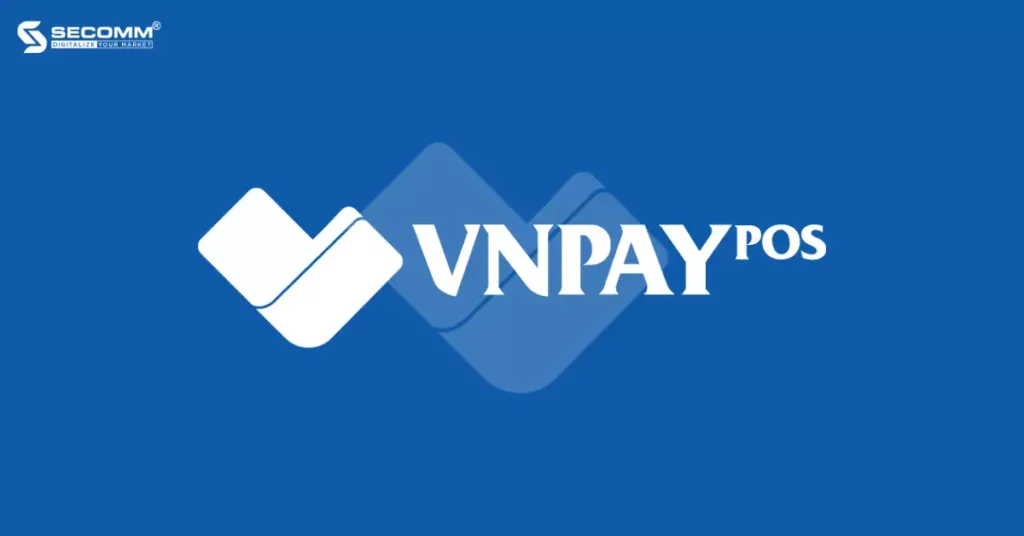
Pros
Diverse Payment Methods: VNPAY-POS allows businesses and individuals to accept payments from customers using a range of electronic payment methods, including e-wallets, bank cards, QR codes, and bank transfers.
Appealing Incentives and Comprehensive Support: In addition to its core features, the solution offers advanced functionalities like support for 0% installment plans, cross-selling services, quick and professional 24/7 registration assistance.
Optimized Sales and Business Management: A VNPAY SmartPOS device goes beyond payment processing, performing various tasks such as digital menu display, item selection, order placement, invoice printing, sales management, data extraction, and more. This streamlines operational costs for businesses.
Cons
Ongoing Costs: VNPAY POS may entail increasing monthly ongoing costs or transaction charges for payment processing, potentially straining businesses with limited financial resources.
Feature Limitations: In comparison to certain other POS systems, VNPAY-POS has limitations in its feature set, particularly in tailoring solutions to meet the specific needs of individual businesses.
Hardware Compatibility: VNPAY-POS mandates specific hardware prerequisites for operation, such as tablets or mobile devices supported by VNPAY. This could necessitate an initial investment for adopting VNPAY-POS.
POS365
POS365 is a cloud-based POS system developed by 365 Technology Corporation. POS365 provides a comprehensive solution for retail businesses, restaurants, cafes, and related industries.
Currently, POS365 offers three packages for businesses:
- Basic: 1,650,000 VND for 12 months – Designed for businesses looking to experience the product.
- Popular: 3,300,000 VND for 2 years with an additional 1-year free – Tailored for SMEs.
- Lifetime: 6,600,000 VND for a lifetime – Intended for businesses already familiar with POS365.
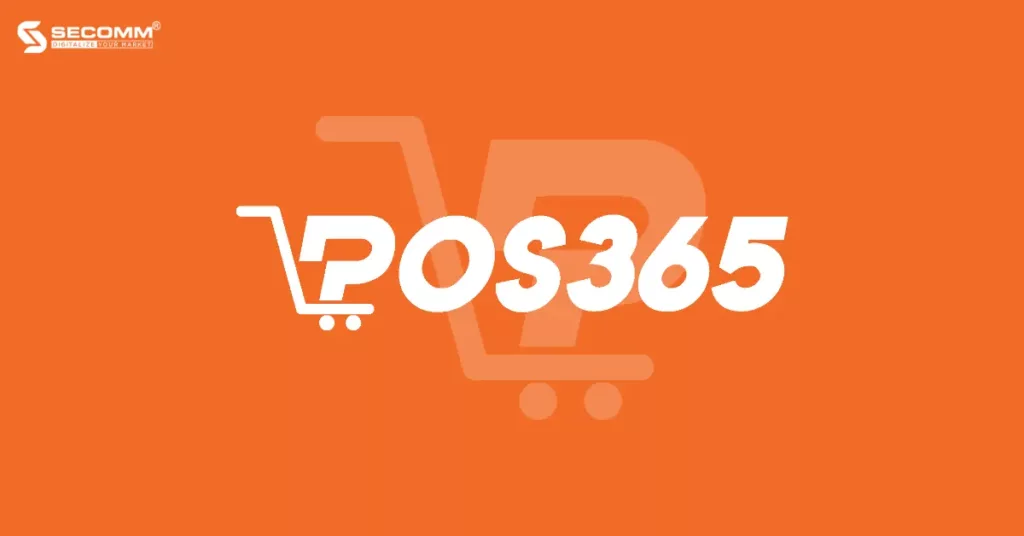
Pros
Vietnamese business-friendly: POS365 has a modern interface that’s easy to navigate, with features thoughtfully tailored to Vietnamese business practices.
Diverse Features: POS365 offers a comprehensive set of sales and business management tools, encompassing inventory control, order processing, warehouse management, customer relations, staff oversight, and business reporting.
Multi-Branch Management: POS365 facilitates the management of multiple branches and sales points through a unified system, simplifying business expansion and operation oversight.
Cons
Limited customization: POS365 comes with certain limitations regarding customization and specific business requirements adjustments. This can pose challenges for businesses with unique needs or customization preferences.
Internet required: POS365 relies on a stable internet connection to function. If there’s an internet disruption, payment processing and business management may experience interruptions.
Limited security: Because POS365 is an online system, there’s a higher risk of cyberattacks or data breaches. Businesses need to implement appropriate security measures to safeguard customer information and business data.
Related content: Top 5 best POS software for large-scale enterprises in 2023
Above is a brief overview of 5 POS software solutions widely used by SMEs to enhance business efficiency. Businesses need to consider various factors to select the most suitable POS system.
 2
2

 9,886
9,886

 0
0

 1
1
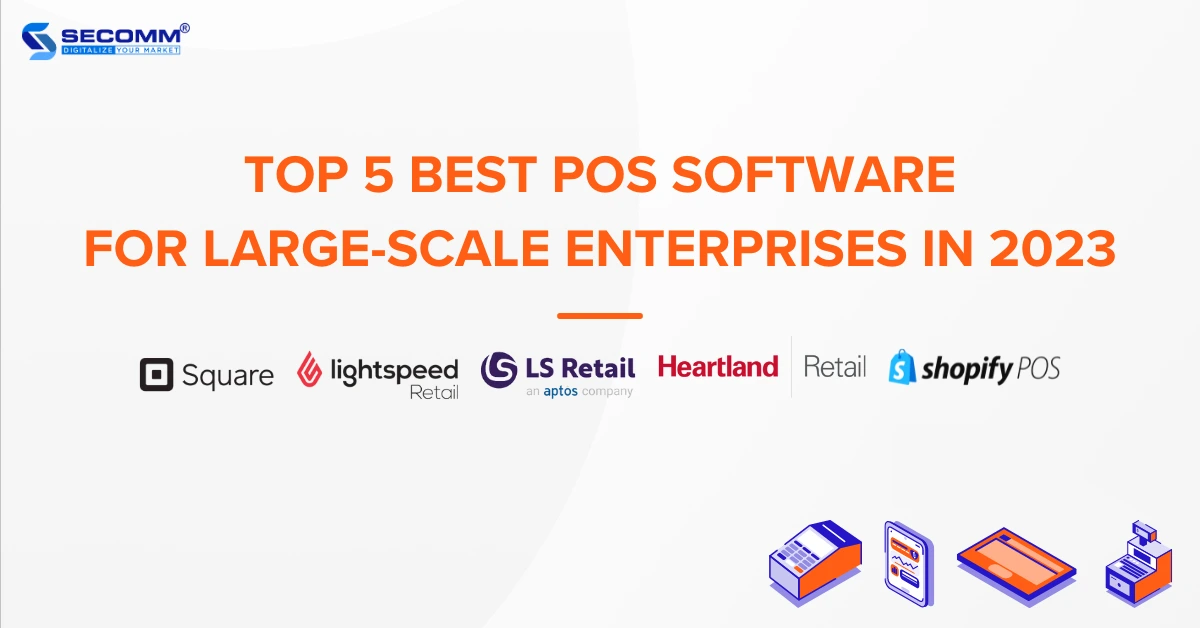
TOP 5 BEST POS SOFTWARE FOR LARGE-SCALE ENTERPRISES
Table of Contents
Much like searching for the right eCommerce platform that fits a business model, the quest for a suitable POS system can be equally challenging, especially for large enterprises.
In this article, SECOMM will delve into the top five widely favored POS software solutions by large corporations today, including Square, Lightspeed Retail, LS Retail, Heartland Retail, and Shopify POS.
Square Point of Sale
Square POS, developed by Square, is a highly favored POS system among many international large-scale enterprises due to its cost-free setup. However, Square applies fees for each transaction executed on the POS, amounting to 2.6% and 10 cents for every tap, dip, or swipe. For the ‘Buy Now, Pay Later’ payment scheme, the fees are 6% and 30 cents. Furthermore, Square provides a tailored POS package for businesses generating revenue exceeding $250,000.
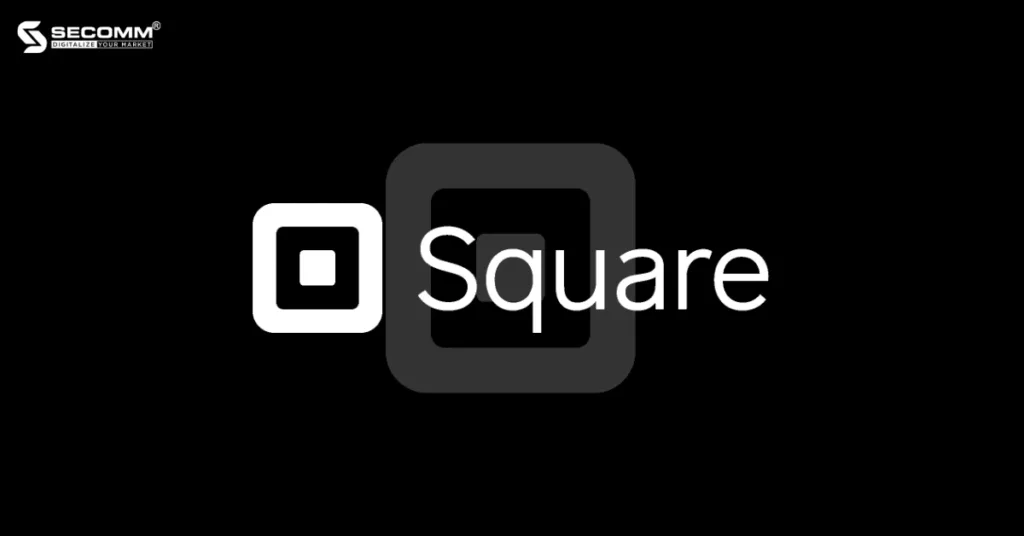
Types of POS system: Tablet-based POS system, Mobile POS system, Cloud-based POS system.
Pros
It’s free: Square software is completely free to use, without any charges for setup or monthly licenses.
It’s User-Friendly: Square offers a straightforward and intuitive user interface, making it easy for users to quickly adapt to and utilize the system effectively.
It’s flexible: Square empowers businesses to execute sales transactions from virtually anywhere using mobile devices like smartphones or tablets. This flexibility enables businesses to reach and serve customers at any time and place.
Cons
Costs Increase with Each Transaction: Square applies transaction fees (2.6% + 10 cents) to every payment processed. While its fee structure is relatively competitive, businesses with substantial sales volumes may find these fees impacting their overall profitability.
Limited Hardware Compatibility: Typically, POS systems are designed to work seamlessly with hardware provided by Square. This means that businesses might encounter challenges when attempting to utilize hardware from alternative suppliers or integrate with existing brand-specific POS systems.
Feature Constraints: Square does have some feature limitations compared to other POS systems. For instance, functionalities like multi-store management, membership card integration, or compatibility with various other business management software may be limited.
Lightspeed Retail
Lightspeed Retail is a tailored POS solution crafted for businesses operating across diverse industries. It earns praise for its wide-ranging features, high level of customization, and its seamless integration capabilities with various applications and services.
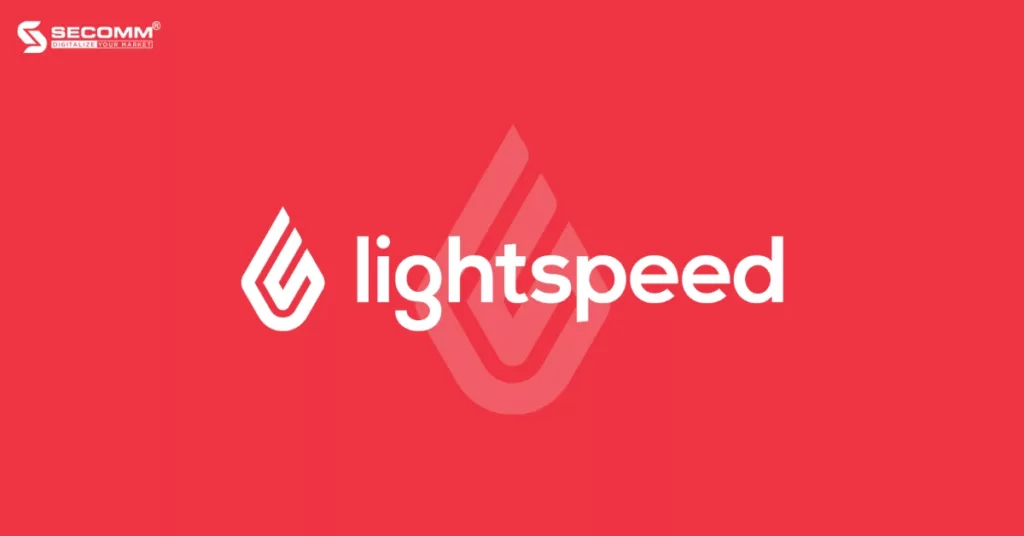
Types of POS system: Tablet-based POS system, Mobile POS system, and Cloud-based POS system.
Pros
Multi-Industry: Lightspeed Retail is specifically crafted to cater to a wide array of industries, including retail, restaurants, coffee shops, spas, salons, and more. This versatility positions Lightspeed as a multifunctional solution across various sectors.
Integration and Scalability: Lightspeed seamlessly integrates with numerous other applications and services, encompassing inventory management systems, online ordering platforms, integration with online sales channels, and much more. This flexibility enables businesses to scale and tailor the system to meet their unique requirements.
Customer Support: Lightspeed earns accolades for its top-notch customer support, offering assistance through phone, email, and online channels. The friendly and professionally trained support team is adept at resolving a multitude of issues.
Cons
High Costs: Lightspeed is associated with a higher price point in comparison to several other available POS solutions in the market.
Complex Initial Setup: The initial setup and configuration of Lightspeed can prove intricate for users lacking prior tech experience. Accurate installation, coupled with appropriate configuration, is essential to guarantee stable operation.
Internet Required: As an online POS system, Lightspeed relies on a consistent internet connection for optimal performance. Any disruptions or instability in the internet connection can lead to transaction processing issues and hinder system access.
LS Retail
LS Retail stands as a top-tier provider of POS and ERP software grounded in the Microsoft Dynamics platform. It is meticulously tailored to oversee the entirety of business operations across diverse sectors, including retail, restaurants, hotels, pharmacies, and gas stations.
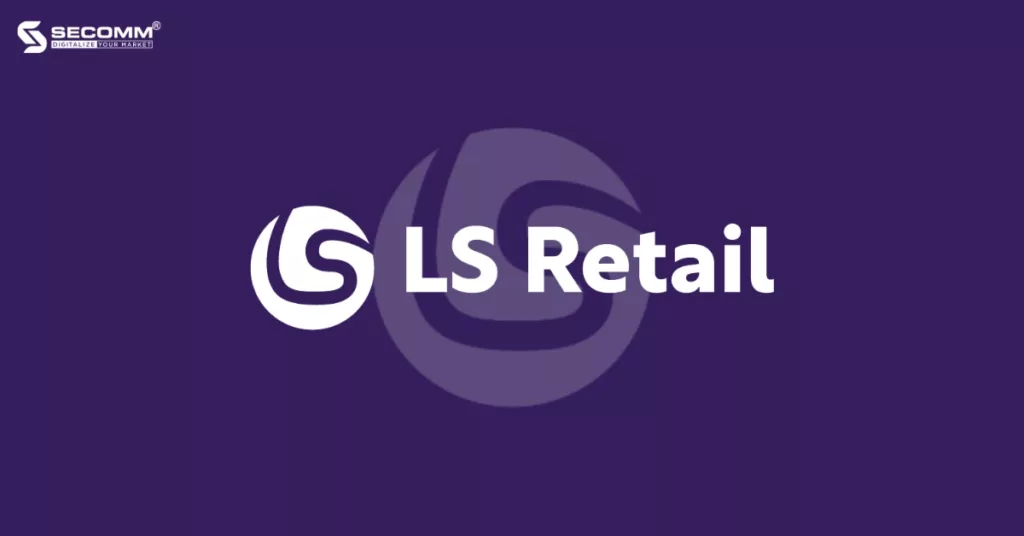
LS Retail extends three solution packages for businesses to select from:
- LS Express: Priced at $99 per month, this solution caters to small-scale businesses.
- LS Central: Offering a comprehensive POS and ERP solution for businesses (Development costs vary based on project complexity).
- LS First: Strategically designed for large corporations, with a particular emphasis on the restaurant industry (Development costs vary based on project complexity).
Types of POS system: Tablet-based POS system, Mobile POS system, and Cloud-based POS system.
Pros
Holistic Management: LS Retail offers an integrated POS and ERP solution, facilitating the synchronization of business data and more efficient management across both systems.
Multi-Channel Sales: LS Retail supports a diverse array of sales channels, encompassing traditional brick-and-mortar stores, eCommerce websites, and mobile point-of-sale (mPOS) kiosks. This broadens business horizons, reaching a larger pool of potential customers.
Efficient Inventory Management: LS Retail delivers real-time inventory management algorithms, empowering businesses to govern stock levels, item locations, and optimize procurement processes. This results in reduced shortages and excess inventory, ultimately enhancing operational efficiency.
Cons
High Costs: As LS Retail is a comprehensive POS and ERP solution, both ownership and maintenance costs may be considerably high for businesses.
Technical Expertise Required: Implementing LS Retail mandates that your business’s workforce possesses specialized technical skills and undergoes dedicated training
Dependency on Microsoft Dynamics: LS Retail is built on the Microsoft Dynamics platform, meaning the implementation and enhancement of the LS Retail system hinge on the evolution of Microsoft Dynamics, influencing bug fixes and the incorporation of the latest updates to some degree.
Heartland Retail
Heartland Retail is a cloud-based point-of-sale (POS) platform tailor-made for retail businesses.
As of now, Heartland levies a fee of $89 per month per point of sale for their POS software. Furthermore, this platform provides payroll services starting at $89 per month for 1-5 employees and payment processing services with a cost of 2.6% per successful transaction, alongside 10 cents for each tap, dip, or swipe.
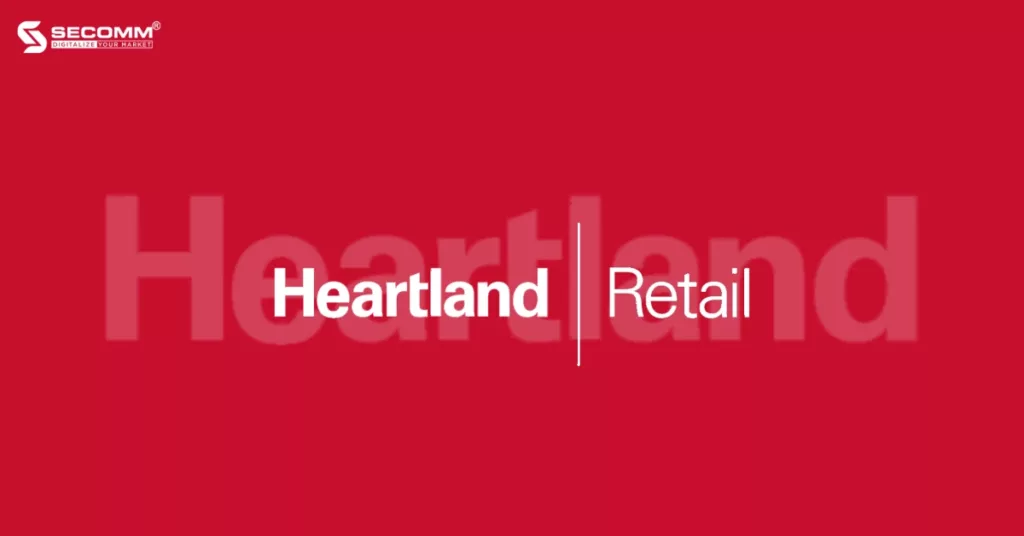
Type of POS system: Cloud-based POS system
Pros
User-Friendly Interface: Heartland Retail boasts a user-friendly and intuitive interface. Sales staff can easily navigate between functions, process payments, and engage with customers effortlessly.
Smart Reporting and Analysis: Heartland Retail offers sophisticated analytical tools and reporting capabilities, empowering businesses to gain a deeper insight into their performance and consumer trends.
Integration with Auxiliary Systems: Heartland Retail is equipped to seamlessly integrate with various auxiliary systems, including accounting, human resources management, and customer relationship management (CRM) systems. This integration facilitates the creation of a comprehensive information system, enhancing the efficiency of different departments within the organization.
Cons
Inefficient Customer Support: Numerous customer feedback reports cite limitations in customer support, with varying response times from Heartland Retail’s support team and inconsistent answers or solutions. This can pose difficulties for businesses requiring swift assistance or specific solutions.
Multi-Store Management Constraints: Heartland Retail lacks robust and flexible multi-store management features for companies operating beyond the U.S., as the company’s primary headquarters is exclusively located in the U.S.
Limited New Features and Updates: Heartland Retail doesn’t frequently introduce new features and updates, unlike some other POS systems. This limitation may hinder the adoption of the latest technologies and trends in the industry.
Shopify POS
Shopify POS is a POS solution designed by Shopify, catering to businesses utilizing their platform and seeking sales management software to effectively manage their business affairs. The usage cost for Shopify POS amounts to $89 per month per location, with a reduced rate of $79 per month per location for businesses opting for an annual subscription.
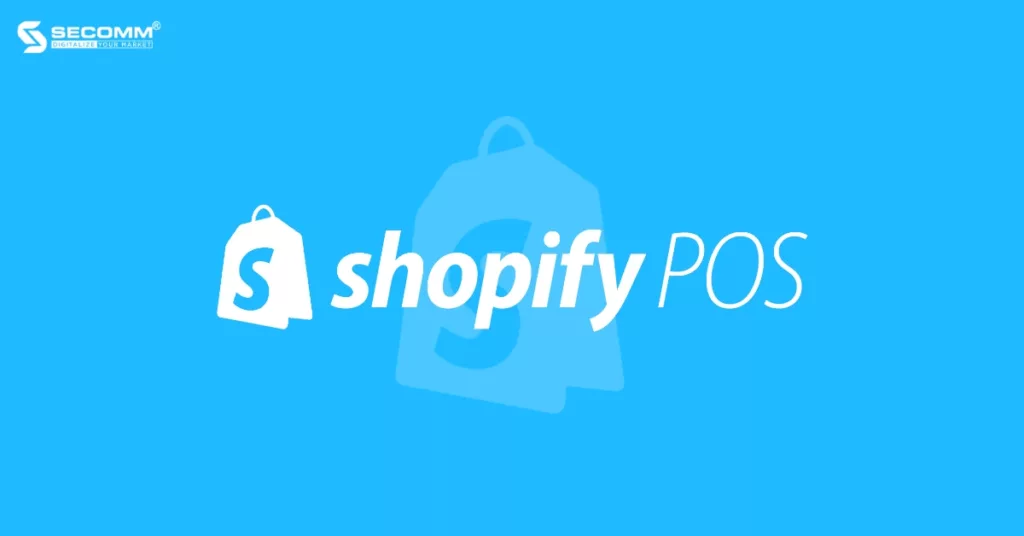
Pros
Ease of Use: Shopify POS boasts a straightforward and friendly admin interface, designed for quick staff adaptation, reducing training time, and minimizing data entry errors.
Seamless Integration with the Shopify Platform: It smoothly integrates with eCommerce websites built on the Shopify platform, enabling businesses to efficiently manage both physical and online stores from one centralized platform, resulting in time and resource savings.
Customization: Shopify POS enables businesses to customize the interface, product labels, invoices, and create brand introduction pages for brick-and-mortar stores, among other features.
Types of POS system: Tablet-based POS system, Mobile POS system, Cloud-based POS system
Cons
Exclusive to the Shopify System: Since this software is built by Shopify, it can only be integrated with this platform.
Complexity with Multiple Stores: While Shopify POS offers multi-store management capabilities, handling and configuring various stores can become intricate as the number of stores grows. Businesses must invest sufficient time in meticulous management, maintenance, and information updates for each individual store.
High Transaction Fees: When using Shopify POS, businesses are required to pay transaction fees (ranging from 2.4% to 2.6%) for each transaction. These fees can add up, especially for businesses with a large volume of transactions.
Above is a brief comparison of five POS software systems widely used by many large businesses to enhance the efficiency of their operations. Businesses need to consider various factors to select the most suitable POS system.
 2
2

 16,222
16,222

 2
2

 2
2
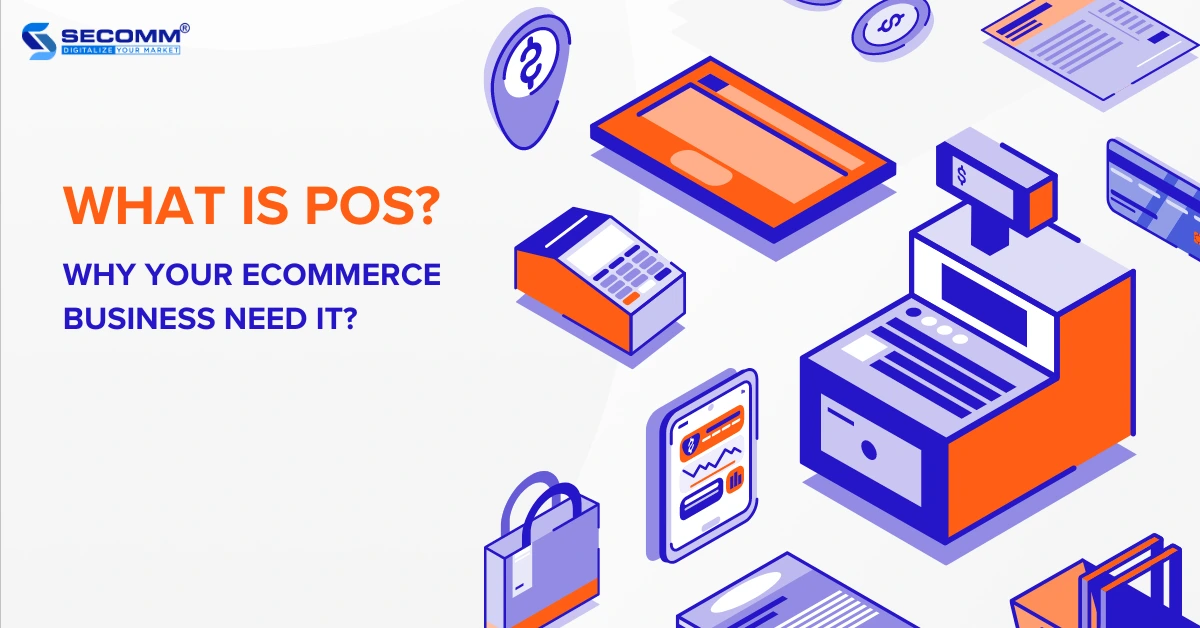
WHAT IS POS? WHY YOUR ECOMMERCE BUSINESS NEED IT?
Table of Contents
The Point of Sale (POS) software system stands as a crucial management system for all types of enterprises, be it online, offline, or O2O (online to offline) businesses.
What is POS?
POS or Point of Sales is sales management software that empowers businesses to efficiently monitor all their business activities, anytime and anywhere. In essence, POS is a complete system comprising both hardware and software components, or it can be as straightforward as a point-of-sale device, such as a computer, tablet, smartphone, receipt printer, and so on.
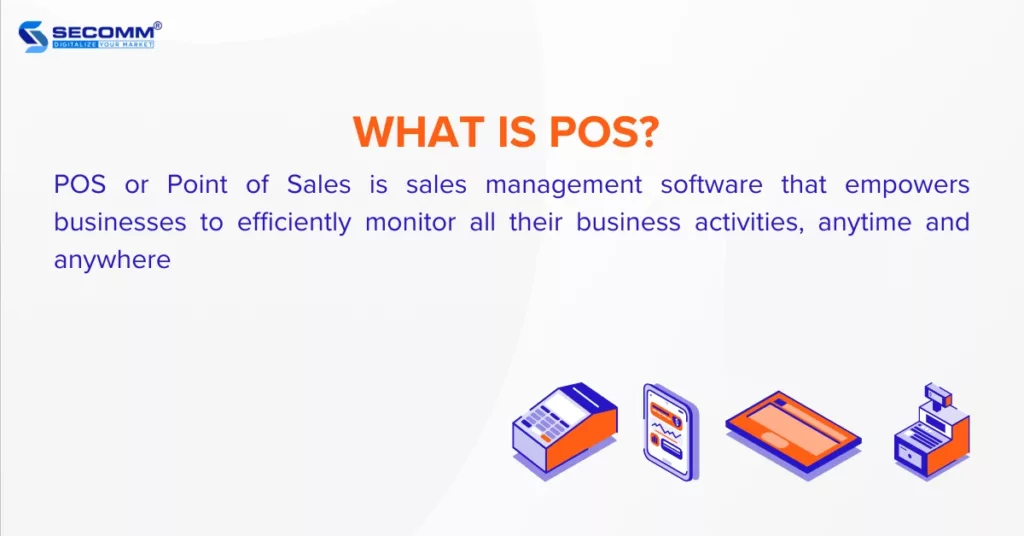
With its robust management capabilities, POS helps businesses oversee and process sales transactions, calculate payments, generate invoices, manage inventory, handle customer relationships, and deliver crucial insights regarding sales performance.
Types of POS system
There are four main types of POS systems that businesses commonly use today, including Legacy POS system, Tablet-based POS system, Mobile POS system and Cloud-based POS system.
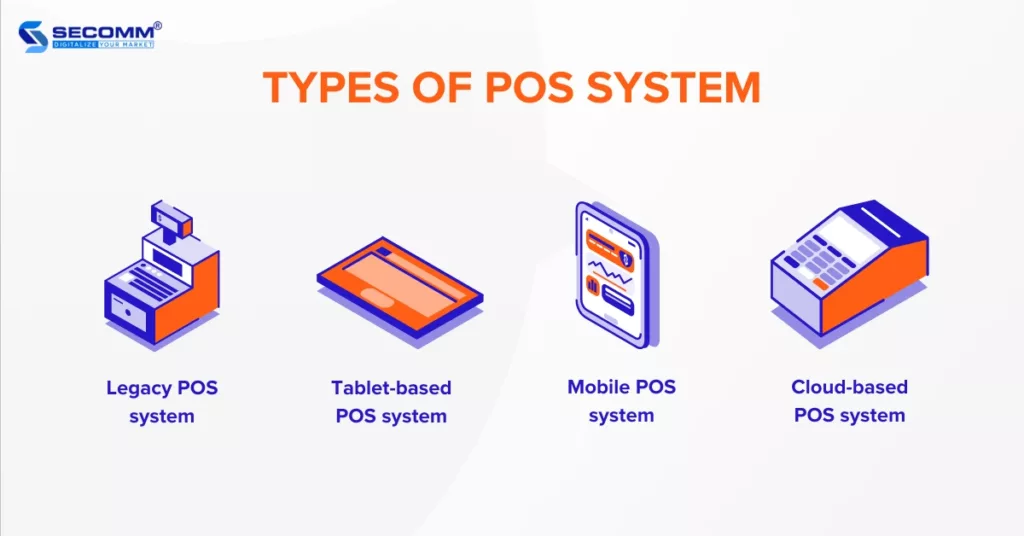
Legacy POS system
The Legacy POS system, also known as on-premise POS, is a type of point-of-sale system that relies on conventional hardware and software to handle sales transactions and manage local data. This means that all transactions and information are stored on a single device, with businesses only able to access the data from that specific device.
As a result, traditional POS systems often require installation and configuration at each individual point of sale, and they typically lack remote accessibility. This can slow down the integration process with eCommerce systems.
For example, some legacy POS systems include Aloha, Oracle MICROS, Squirrel Systems, and more.
Tablet-based POS system
A Tablet-based POS system is a type of POS system that employs tablets as the main devices for processing sales transactions, rather than relying on conventional computers or standalone POS equipment.
Due to its reliance on hardware that is familiar to many, integrating this POS system with eCommerce platforms and training staff tends to be more straightforward compared to legacyPOS systems.
Examples of well-known Tablet-based POS systems include Lightspeed POS, Square, Shopify POS, and others.
Mobile POS system
A Mobile POS system is a type of POS that employs mobile devices like smartphones, tablets, or wearable devices for handling sales transactions. This allows sales staff to move freely within the store or conduct transactions directly at the customer’s location.
This functionality enables sales associates to access product details and customer records via the Mobile POS system, facilitating inventory checks and offering personalized recommendations to customers. Just like Tablet-based POS systems, integrating and training staff to use Mobile POS systems is generally uncomplicated.
Some widely used Mobile POS systems include Lightspeed POS, Clover, Square, and others.
Cloud-based POS system
A Cloud-based POS system leverages cloud computing technology to store and process sales data. Instead of keeping data on local computers or in-house servers, this system adopts an online approach to manage and access data from any device with an internet connection.
The majority of modern POS systems are cloud-based because they offer various advantages, including remote accessibility, flexibility, easy integration, and scalability. They enable businesses to oversee multiple points of sale from a unified platform, providing real-time data and insights for informed decision-making. Furthermore, Cloud-based POS systems reduce hardware demands and installation costs when compared to other POS solutions.
Some prominent examples of top Cloud-based POS systems for businesses include Lightspeed POS, Square, Clover, and others.
Benefits of using POS software
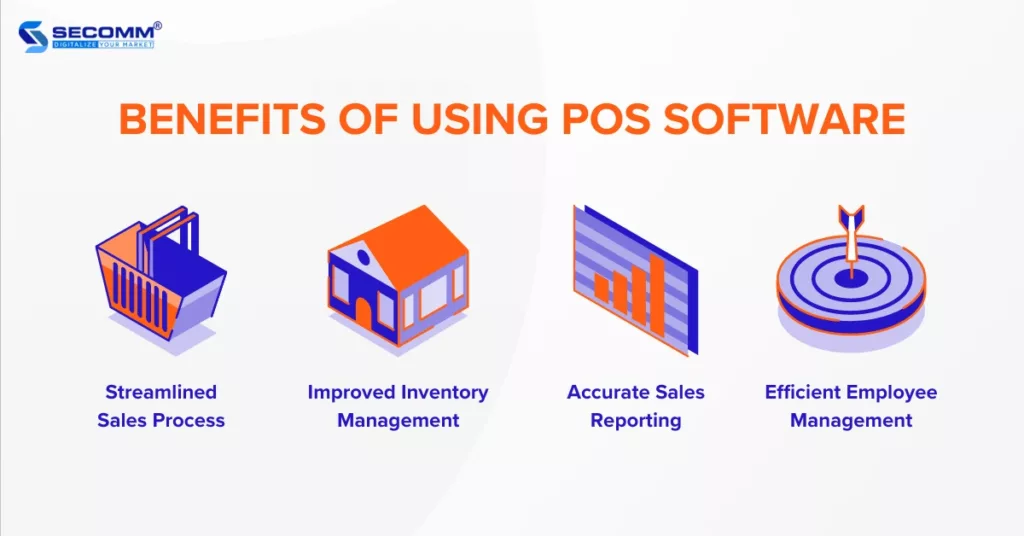
Streamlined Sales Process
The POS system streamlines and automates the sales process, ensuring faster and efficient transactions. Businesses can swiftly process payments, precisely calculate totals, and produce invoices or receipts within mere seconds.
Improved Inventory Management
The POS system empowers businesses to actively monitor and manage their inventory in real-time, receiving alerts when products are running low and automatically initiating reorder processes. This helps prevent stock shortages or excess inventory, ultimately optimizing inventory levels and reducing storage expenses.
Accurate Sales Reporting
The POS system offers the ability to analyze and report detailed revenue data, empowering businesses to monitor their performance, understand consumer trends, identify favored products, and so forth. Consequently, this data forms the basis for businesses to strategize for the future.
Efficient Employee Management
The POS system simplifies the process of monitoring each employee’s sales volume, work hours, and performance indicators. Consequently, businesses can obtain precise data for calculating individual commissions, streamline payroll processing, and identify high-performing team members or those requiring further training.
Overall, POS stands as a vital management software within any eCommerce business framework. Businesses should conduct thorough research on different POS system types to choose the most fitting and effective management software in line with their business model and strategy.
Contact SECOMM or dial our Hotline at (02871089908) for consultation and the implementation of your POS system
 2
2

 9,801
9,801

 0
0

 1
1
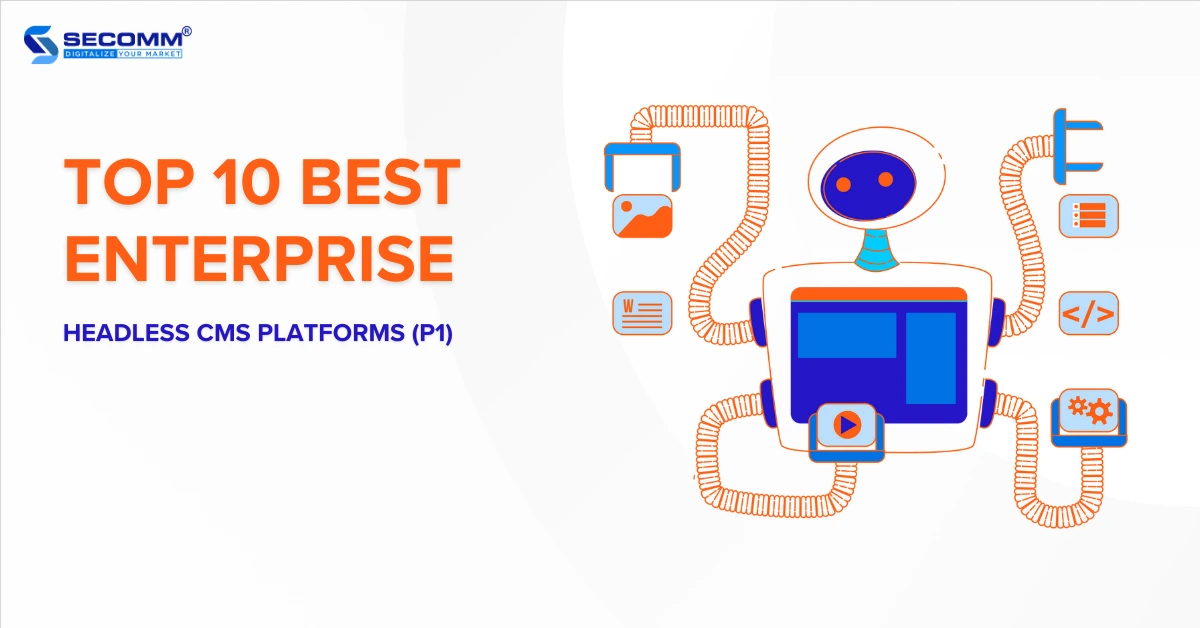
TOP 10 BEST ENTERPRISE HEADLESS CMS PLATFORMS (Pt1)
Table of Contents
The 2022 Headless CMS market was valued at approximately $592.43 million and is projected to reach $672.09 million by the end of 2023. These figures come as no surprise as Headless CMS has become increasingly popular in recent years due to the numerous benefits it offers to businesses. These benefits include cost-effectiveness, the ability to distribute and repurpose content across various channels, high customization and flexibility to work with any technology or framework, a future-proof architecture that can seamlessly integrate with third-party services, and adaptability to emerging technologies.
These advantages have encouraged businesses to adopt Headless CMS to enhance their online presence. However, the first crucial step is selecting the most suitable platform from the many excellent options available.
This article will provide an overview of the top 10 leading Headless CMS platforms, highlighting their distinctive features, as well as their pros and cons, to assist businesses in making an informed choice
Sanity
Sanity stands out as a cloud-based Headless CMS platform that provides businesses with a suite of tools for content creation, editing, organization, and publication. Renowned for its remarkable flexibility and impressive scalability, this platform accommodates projects of varying complexity, from straightforward to intricate. Sanity offers robust support for developers working with an array of frameworks including React, Vue, Next.js, Nust.js, Remix, Svelte, Eleventy, Gatsby, and more.
Moreover, it extends its compatibility to multiple programming languages like JavaScript, PHP, Rust, and others, enabling businesses to seamlessly integrate with diverse platforms such as Shopify, BigCommerce, Algolia, Commerce Layer, Mux, Cloudinary, Transifex, and more.
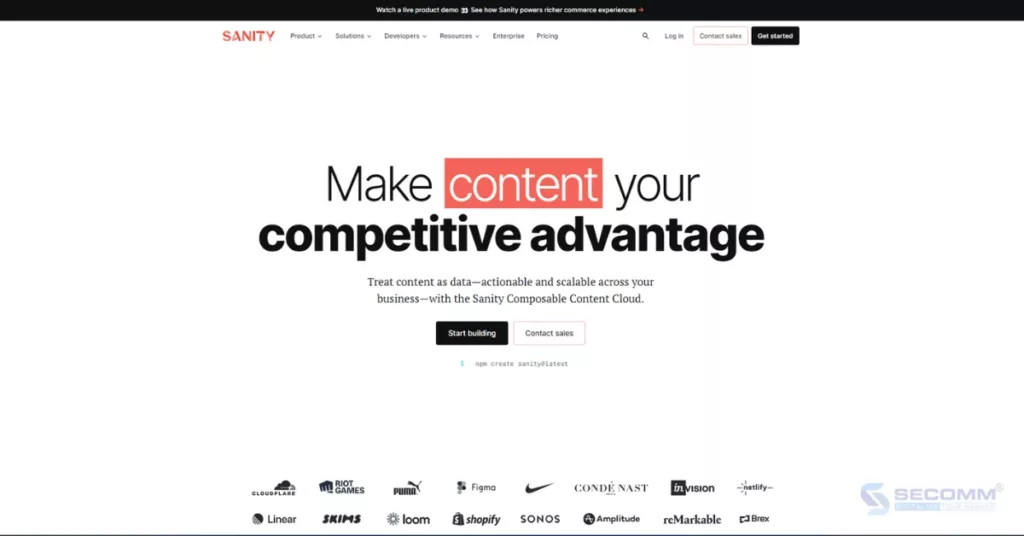
Key features
- Real-time Collaboration: Allows multiple users to collaboratively edit content in real-time.
- Flexible Editing Environment: Supports editing across various devices and enables scheduled content releases or app updates.
- Portable Text Format: Easily creates and manages complex content with embedded data using Portable Text.
- Integration Capabilities: Connects services, user interfaces, applications, scripts, and devices through the Sanity API. Queries content using GROQ or GraphQL.
- Sanity Content Lake: Cloud-hosted content storage managed entirely by Sanity. Accessible via the Sanity API, Sanity’s client libraries, or directly through the HTTP API.
Pros
- Flexibility: Sanity allows businesses to structure content according to specific needs.
- Customizable Content Management Interface: The content management interface can be tailored to align with brand characteristics, ensuring a consistent user experience across channels.
- User Collaboration Transparency: User avatars are displayed when editing content, and the entire content creation and editing process can be directly tracked, enhancing team efficiency.
- Developer-Friendly: Sanity is developer-friendly, providing numerous support tools, APIs, and frontend frameworks for easy content creation, customization, and integration.
Cons
- Besides the costs mentioned in the pricing table, the implementation cost of Sanity will increase depending on specific needs. For example, businesses will incur additional expenses to integrate the Mux plugin for managing video content.
- Many features and technical concepts require users to invest more time and effort in understanding and implementing.
Pricing
Sanity offers four solution packages for businesses to choose from:
- Free Forever: Provides 3 non-admin user accesses.
- Team: $99/month/project, suitable for small businesses, offering 10 non-admin user accesses.
- Business: $949/month/project, designed for medium-sized businesses, providing 20 non-admin user accesses.
- Enterprise: Custom pricing based on needs, intended for large-scale businesses, offering unlimited user access.
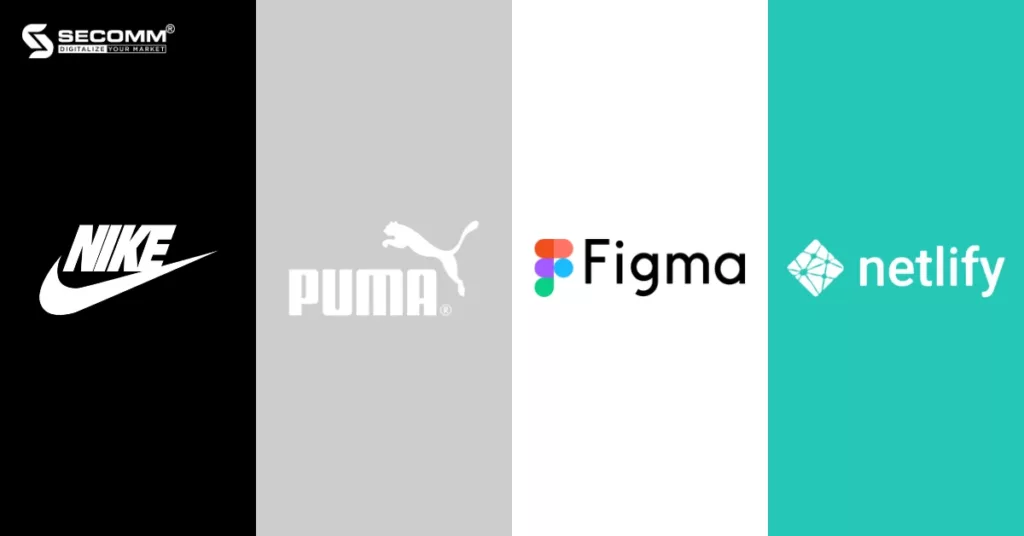
Storyblok
Storyblok is a leading API-first Headless CMS that prioritizes businesses’ ability to effortlessly generate, oversee, and disseminate content across multiple platforms. This software offers a user-friendly interface, empowering content marketers to efficiently oversee and adapt content without demanding extensive technical proficiency. Storyblok also aids developers through various APIs like GraphQL, Management API, and Content Delivery API, and is compatible with frameworks such as React, Vue.js, Angular, Nuxt.js, Next.js, and Gatsby.
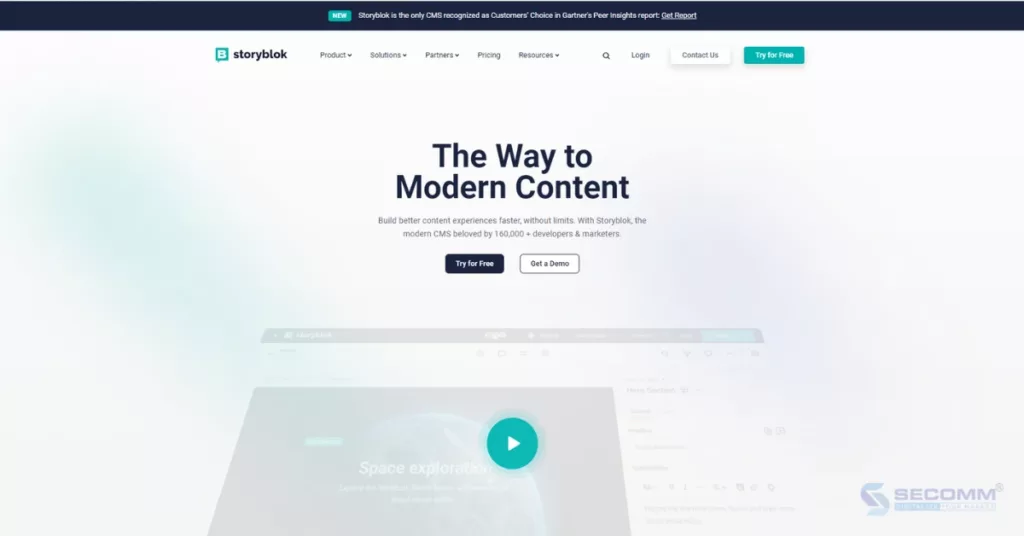
Key features
- Visualize collaboration processes and easily create and edit content through Visual Editor and Collaboration tools.
- Streamline content management for text, images, and videos with the Digital Asset Manager, equipped with advanced tagging and hierarchical folder organization.
- Leverage Storyblok’s Composable Component functionality to convert inflexible templates into versatile, dynamic components that can be seamlessly integrated and reused across diverse digital platforms.
- Achieve multilingual content distribution to international markets with Localization capabilities.
Pros
- High flexibility and customization options enable businesses to add or remove features based on practical needs.
- Storyblok provides in-depth documentation for every topic, assisting developers in understanding how to use features and deploy services effectively
Cons
- Pricing currency is in EUR instead of USD.
- The Visual Editor interface can sometimes lag.
- Monthly bandwidth usage is limited and may require purchasing additional bandwidth at a relatively high cost.
Chi phí
Storyblok offers a variety of solution packages for businesses, including:
- Community: Free forever, includes 1 registered account per user seat.
- Entry: €99/month, 5 registered users, up to 30 registered accounts per user seat. Suitable for small businesses and startups entering the content management system.
- Teams: €449/month, 10 registered users, up to 40 registered accounts per user seat. Suitable for growing businesses with content distribution needs.
- Enterprise: €2,999/month, 30 registered users, and unlimited additional registered accounts per user seat. High-level security and scalability with many outstanding features for large enterprises.
- Enterprise Plus: Custom pricing based on needs, offering the highest level of security and scalability among solution packages.
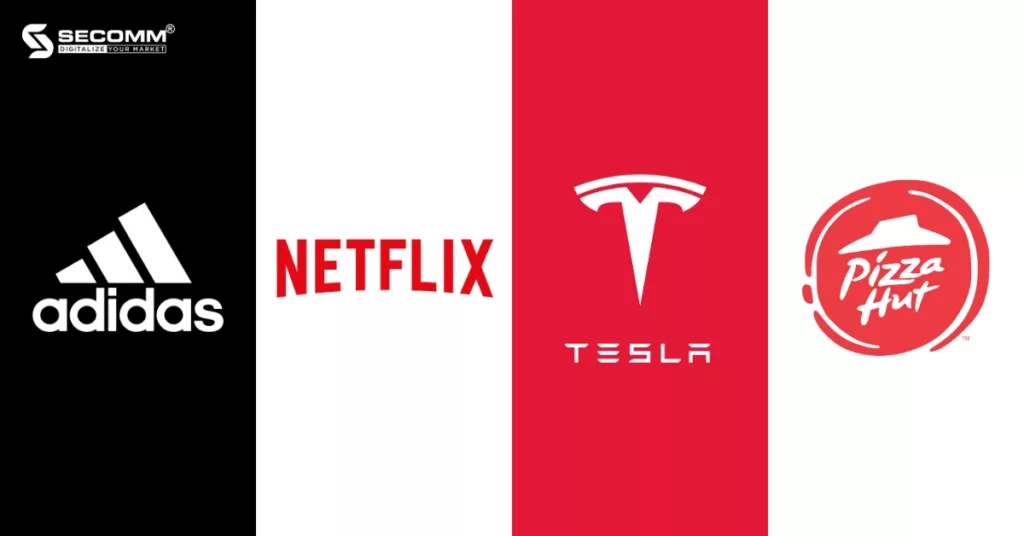
Contentful
Contentful stands out as an API-first Headless CMS, prized for its adaptability and remarkable scalability. It enables businesses to effortlessly craft, oversee, and distribute content across diverse channels and devices, encompassing websites, applications, IoT gadgets, and beyond. Contentful boasts a rich assortment of APIs, such as REST, GraphQL, Content Management API, Content Delivery API, and Content Preview API, among others.
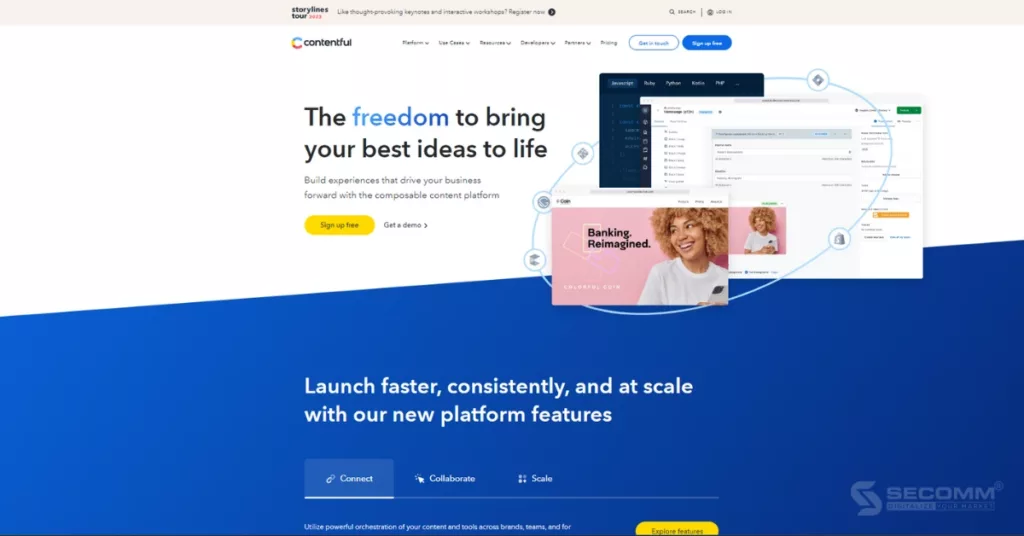
Key features:
- Quickly create projects tailored to your needs using customizable templates based on the Next.js framework and Contentful CMS, whether it’s an eCommerce website or a blog site.
- Leverage Content Apps or integrate with third-party applications to streamline content production and publishing workflows for optimal efficiency.
- Contentful supports content localization for global marketing strategies, enabling you to adapt and target content for international audiences.
- Swiftly review, approve, and schedule the batch publishing of crucial content, such as product launches, advertisements, and rebranding initiatives, all at once.
Pros:
- Contentful offers a friendly and easy-to-use interface.
- It provides extensive support and learning resources for developers to enhance their skills, particularly for complex projects.
- Contentful includes numerous tools for efficient teamwork, such as the Compose app, Launch app, and Workflow app.
Cons:
- Contentful has limitations in terms of previewing and editing images.
- Depending on the subscription plan, businesses are provided with a certain amount of space and components. When these limits are reached, businesses have two options: either delete items to free up space or upgrade their space. This can be inconvenient and may result in additional costs.
Pricing:
Contentful currently offers three solution packages:
- Free: Designed for individual developers working on personal projects. It includes one space license, supports up to 5 users, and does not offer the option to upgrade or purchase additional space.
- Basic: Priced at $300 per month, this package includes one space license and is suitable for teams building websites or apps. It supports a maximum of 20 users and provides the option to upgrade to the Medium plan for an additional cost of $350 per month.
- Premium: Tailored for large enterprises, the pricing for this package is customized based on specific needs and is billed annually. It includes two space licenses, allows for a large number of users (up to thousands), and offers advanced space upgrades to Medium, Large, or Premium spaces for an additional fee.
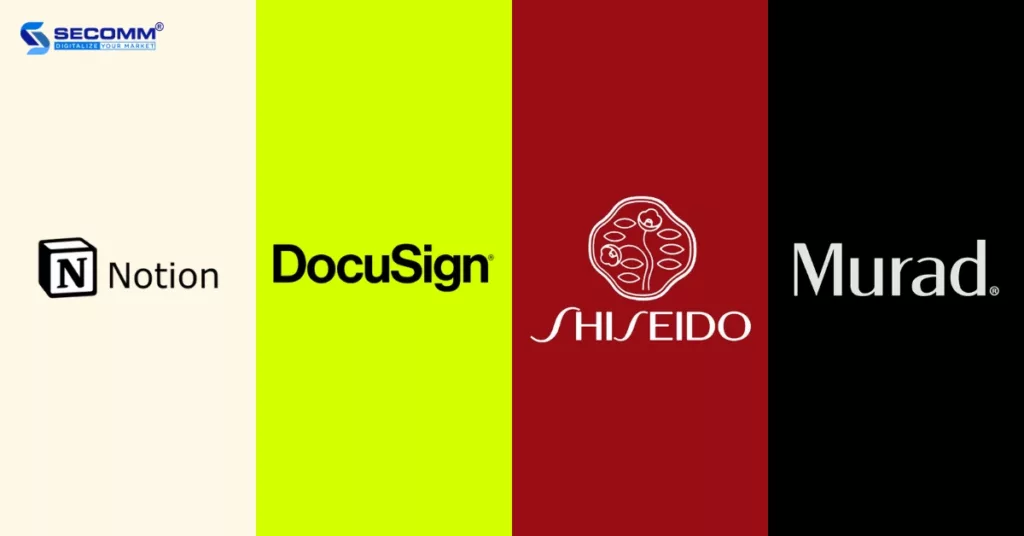
Strapi
Strapi is an open-source JavaScript-based Headless CMS celebrated for its robust customization and expansive capabilities. Strapi provides developers with a wide array of APIs, including REST, GraphQL, Entity Service, Query Engine APIs, and more. Furthermore, it seamlessly integrates with popular frameworks such as Vue.js, Angular, React, Next.js, Eleventy, Svelte, and more.
Notably, Strapi boasts a user-friendly interface, empowering content marketers to swiftly create, edit, and publish content without the need for extensive programming skills. This reduces reliance on developers. Additionally, Strapi shines with its Omnichannel capabilities, enabling content dissemination across diverse channels, including websites, apps, and IoT devices.
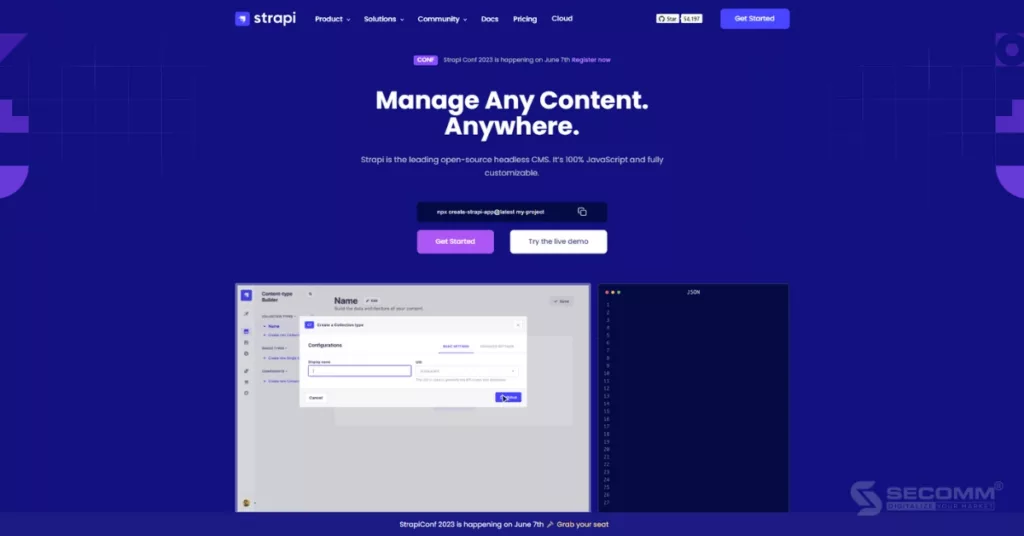
Key features
- Support for multi-database environments, including SQLite, MongoDB, MySQL, and Postgres.
- A single programming language – JavaScript, from frontend to backend.
- Seamless Omnichannel capabilities for distributing content across multiple channels.
- Unlimited support for APIs, content types, admin panel users, and more.
- Webhooks facilitate connections between Strapi apps and other applications to notify them of events, particularly useful for informing third-party applications about the start of processes like continuous integration (CI), building, and deployment.
- Internationalization with the i18n framework, allowing for unlimited multi-language, multi-location projects.
Pros
- Seamless integration with Node.js.
- Easy API customization.
- Scalability and handling high traffic with ease.
- Intuitive and user-friendly user interface (UI).
- Abundant learning resources.
Cons
- Lack of support for advanced JavaScript versions like TypeScript.
- Limitation on the number of registered accounts per user depending on the solution package.
- Several features and specialized concepts may require users to invest significant time and effort in understanding and implementing them.
Pricing
Strapi offers four solution packages for businesses to choose from:
Self-hosted (self-hosted by the business)
- Community Edition: Free forever
- Enterprise Edition: Custom pricing based on needs
Cloud (hosted by Strapi)
- Pro: $99/month/project, with a 14-day free trial
- Team: $499/month/project, with a 14-day free trial
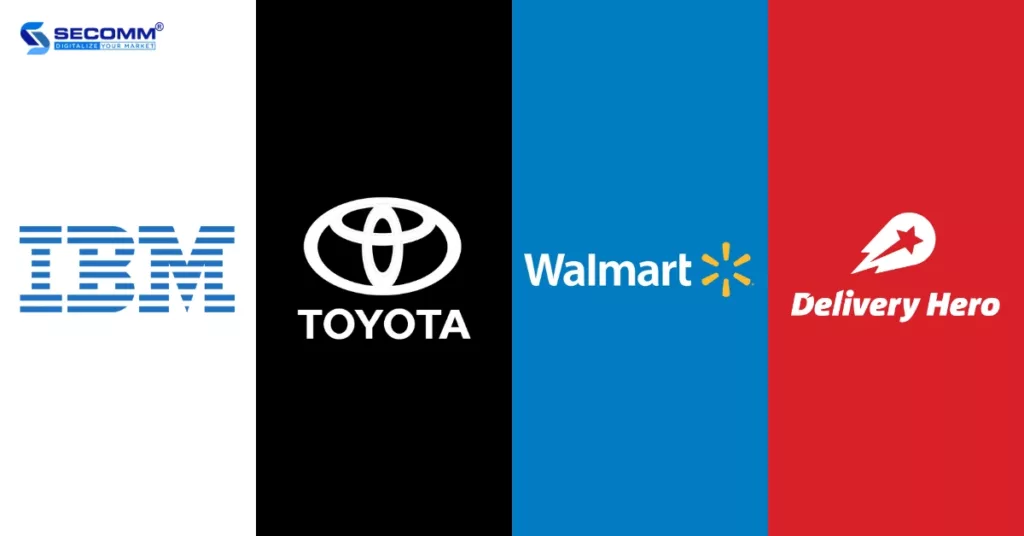
Hygraph
Hygraph is a federated content platform that enables the integration of content data from various sources and backends into a single storage repository through a GraphQL API without the need to move or create multiple copies of that content.
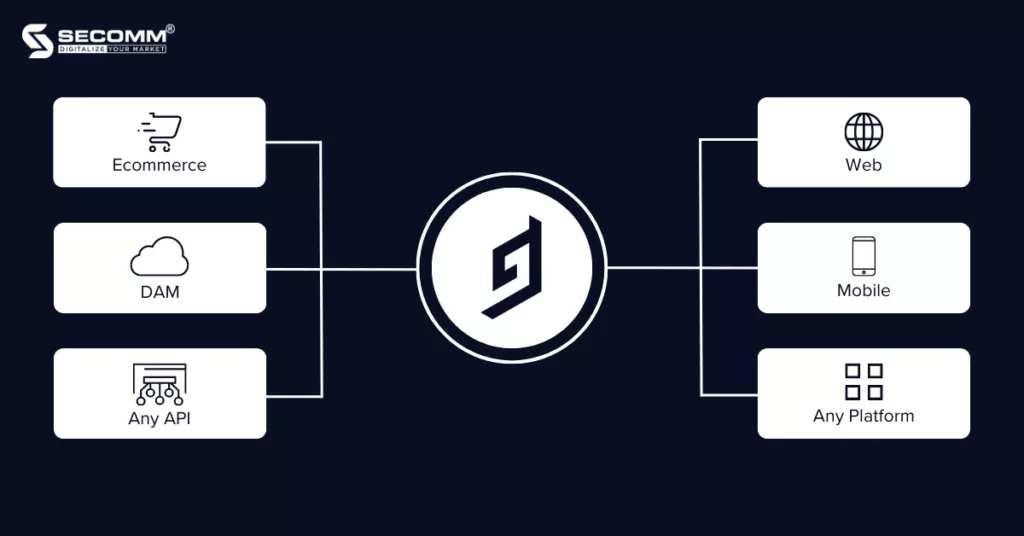
Headless CMS vs Federated Content Platform
user interface, enabling the distribution of content across various digital channels. However, in line with technological advancements, CMS providers are attempting to consolidate all content data within the CMS itself, creating what is known as a Content Hub, from which they distribute content.
Nonetheless, this approach has its drawbacks as it necessitates continuous data synchronization, which may not always ensure data accuracy when delivered to diverse channels. In such scenarios, a Federated Content Platform offers a pragmatic solution by integrating and storing content and data from any third-party system via GraphQL API or REST API, subsequently distributing the original data to multiple channels.
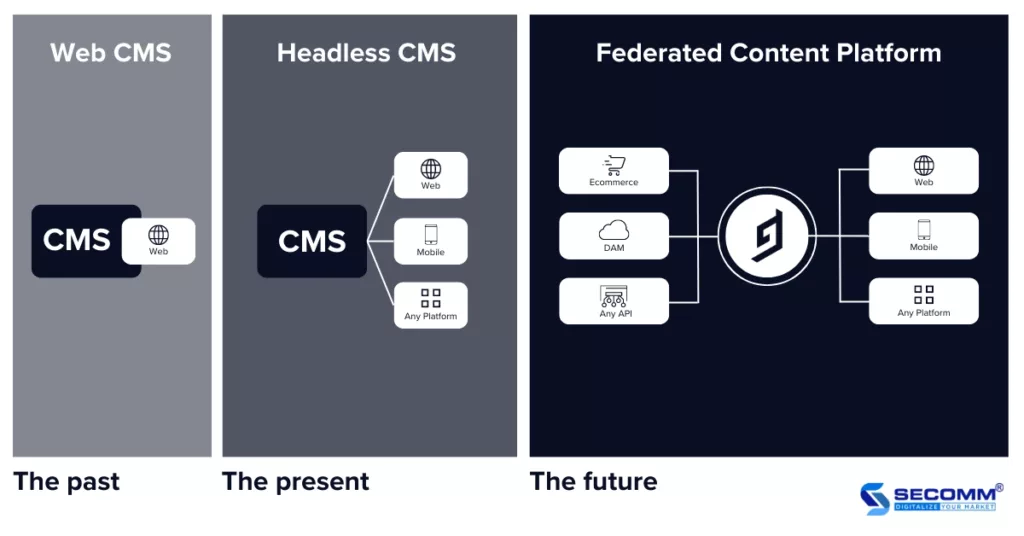
Looking at the scenario with Hygraph, it serves as a central hub for integrating and storing data from various sources. Acting as an API gateway, any changes made to the original data are first updated within Hygraph and then distributed to one or more front-end platforms. Users of Hygraph can access this updated data from multiple sources but are unable to make direct edits, preventing the proliferation of multiple data versions.
Key features
- Schema Builder: Provides developers and content marketers with user-friendly tools for creating templates to meet the diverse content needs of businesses.
- Custom Roles & Permissions: Established by the Administrator and Project Owner, it’s easy to control what users can see based on their roles within the system. There will be various system roles, but they generally include Owner, Admin, Developer, Editor, and Contributor. Owners and Admins can easily create custom roles for developers like “Create New Role” and “Update Existing Roles” using the permissions provided by the Management API. When setting up custom roles, businesses need to select all Read permissions to grant users the essential functionalities required while using the platform.
- Hygraph’s webhooks can integrate with third-party services to quickly update changes in project content in real-time.
- Scheduled Publishing allows content marketers to schedule content or campaigns for publication at a specific time in the future.
- The Rich Text Editor, sometimes called WYSIWYG (What You See Is What You Get), is available for all of Hygraph’s solutions. Businesses can add the Rich Text Editor to any content section through the Schema Builder, making it easy for content marketers to create and edit text and images flexibly.
- Localization – content localization for global marketing strategies.
Pros
- The Content Federation capability ensures that APIs can store and deliver data accurately to various different frontends.
- Customizable roles promote efficient collaboration in the workflow.
- Display content performance analytics for businesses to measure traffic and engagement.
Cons
- The API functionality is rated as somewhat slow, taking from 3 to 8 seconds.
- Many concepts and features require time and effort to grasp.
Pricing
Hygraph offers three main solution packages for businesses:
- Community: Forever free, suitable for individuals and small projects.
- Self-service: Suitable for businesses in development.
- Professional: $399 per month per project.
- Scale: $899 per month per project.
- Enterprise: Custom pricing based on specific needs, suitable for large enterprises.
Brands that use Hygraph include Samsung, Shure, Booking.com, Philips, Telenor, Ashley, Dr. Oetker, Neat, Dmarket, Flybondi.com, etc.
To learn more about Headless CMS and choose the right deployment platform, please contact SECOMM or call our hotline at (028) 7108 9908 for a free consultation.
 2
2

 8,217
8,217

 0
0

 1
1
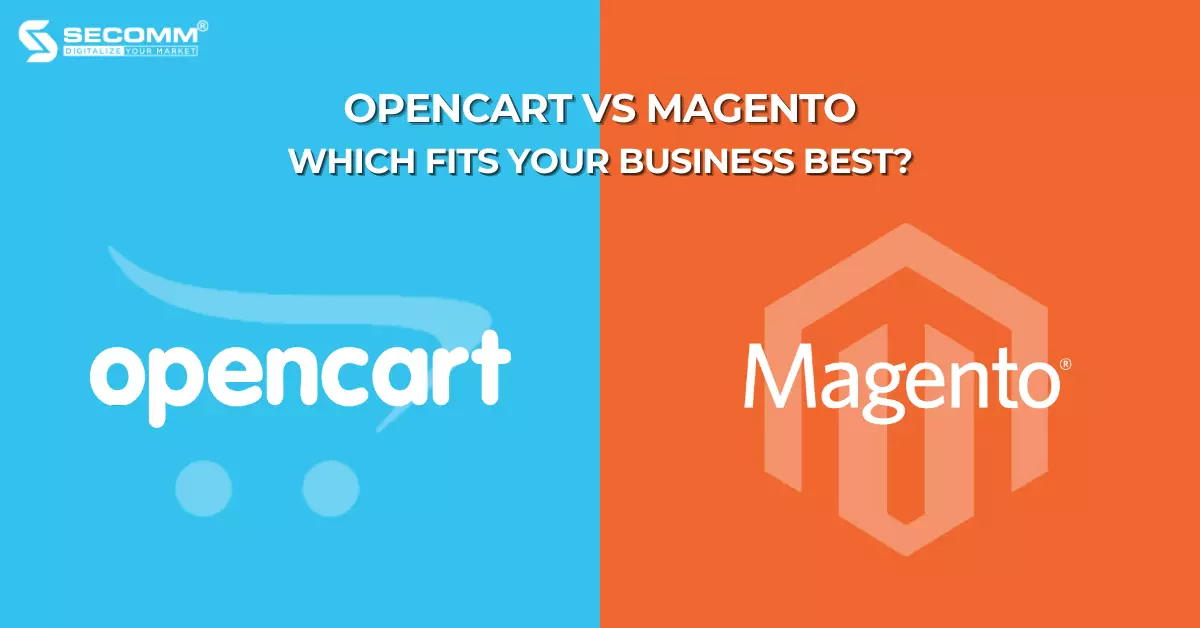
OPENCART VS MAGENTO: WHICH FITS YOUR BUSINESS BEST?
Table of Contents
OpenCart and Magento have consistently been pitted against each other as open-source platforms for businesses in need of building specialized eCommerce websites, particularly for enterprises and corporations.
So, which of these open-source eCommerce platforms, OpenCart or Magento, is the right fit for your business?
OpenCart vs Magento: Overview
What is OpenCart?
OpenCart is a freely developed open-source eCommerce platform designed in PHP. It’s favored for its user-friendliness and simplicity, boasting an easy-to-navigate admin dashboard that allows product management, promotions, order processing, and reporting without requiring technical expertise.
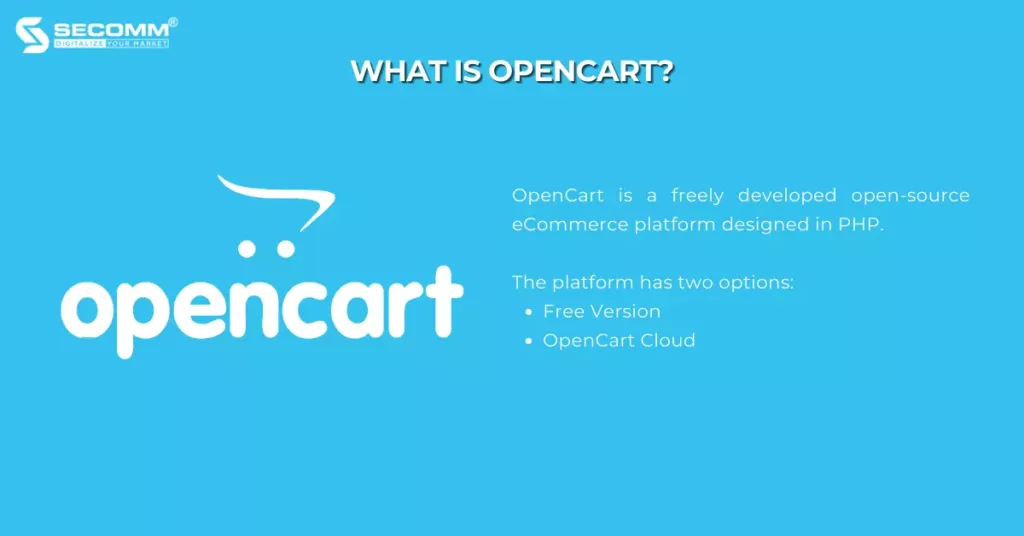
OpenCart offers two options for businesses:
- Free Version: Ideal for businesses looking to build their website using OpenCart’s pre-existing framework.
- OpenCart Cloud: Suited for businesses seeking the expertise of OpenCart’s professional team for website development.
As per Build With data, OpenCart has been adopted by over 400,000 websites, primarily by small to medium-sized businesses in the United States, Russia, the United Kingdom, Ukraine, and Brazil.
Related Reading: What is OpenCart? Key Pros and Cons of OpenCart
What is Magento?
Magento (Adobe Commerce), much like OpenCart, is an open-source eCommerce platform developed using the PHP programming language. Magento stands as the ‘pinnacle’ among all open-source eCommerce platforms due to its comprehensive control and high scalability, offering a plethora of specialized features.
At present, Magento provides three primary editions, which are:
- Open Source: This free version boasts a wealth of exceptional features, making it suitable for businesses just starting with open-source platforms.
- Adobe Commerce (on-premise): This self-hosted version is ideal for businesses seeking the readily available features of Adobe Commerce while maintaining hosting independence.
- Adobe Commerce Cloud: This cloud-hosted version caters to businesses in need of hosting services and features offered by Adobe.
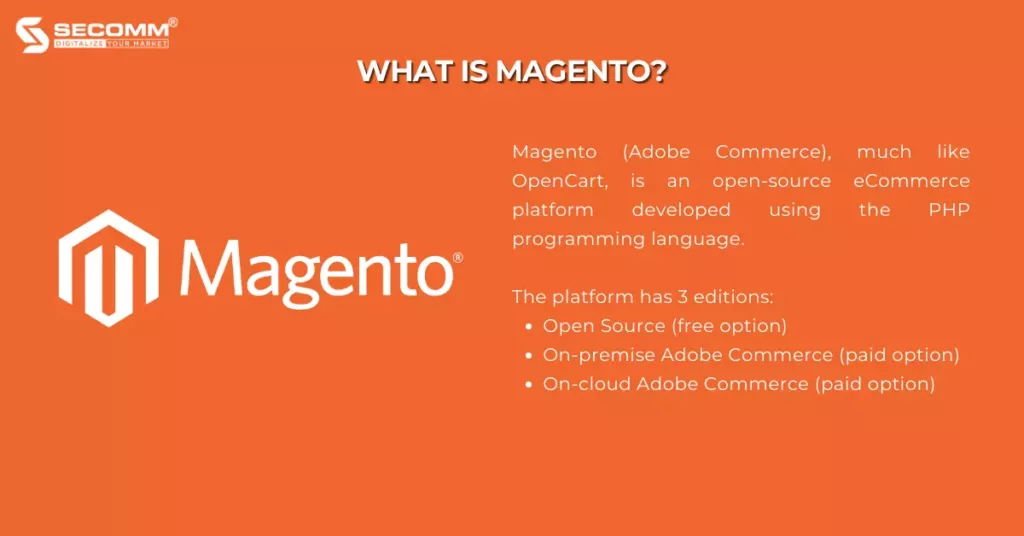
According to BuildWith, Magento supports over 160,000 websites, with significant popularity among large businesses in the United States, the United Kingdom, the Netherlands, and Germany.
Given the differences in service offerings between the paid versions of OpenCart and Magento, this SECOMM article will focus on comparing the two free versions.
Related Reading: What is Magento? Key Pros and Cons of Magento
OpenCart vs Magento: Key Similarities
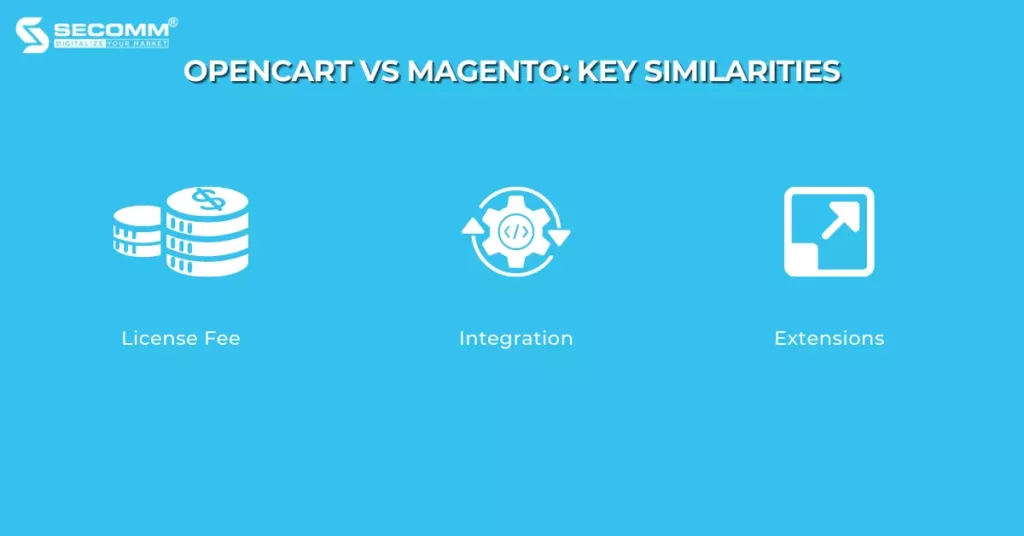
License Fee
Overall, OpenCart and Magento are both open-source platforms developed using PHP. They are both robust eCommerce platforms with powerful features and a multitude of additional utilities.
The usage costs of OpenCart and Magento are quite alike, as both offer free enterprise versions that can be downloaded and installed without any charges.
Integration
Since they are open-source platforms, both possess exceptional customization capabilities for integrating third-party add-ons.
This enables businesses to effortlessly install and manage various management systems like POS, ERP, CRM, and others within a single system.
Extensions
OpenCart offers an extensive library of extensions, with approximately 13,000 extensions at your disposal. Likewise, Magento boasts a vast collection of extensions, with over 5,000 to choose from.
Both platforms enable businesses to enhance their eCommerce websites with a plethora of additional features using these extensions, eliminating the need for coding concerns.
OpenCart vs Magento: Major Differences
Admin Dashboard
OpenCart is recognized as being more user-friendly for beginners, primarily due to its intuitive interface and straightforward installation process. However, businesses should still possess a basic level of technical knowledge related to hosting, FTP (File Transfer Protocol), security upgrades, and the like.
Within the admin dashboard, users can effortlessly navigate through sections such as ‘Catalog,’ “Extensions”, “Sales”, “System”, “Reports”, and “Help”.
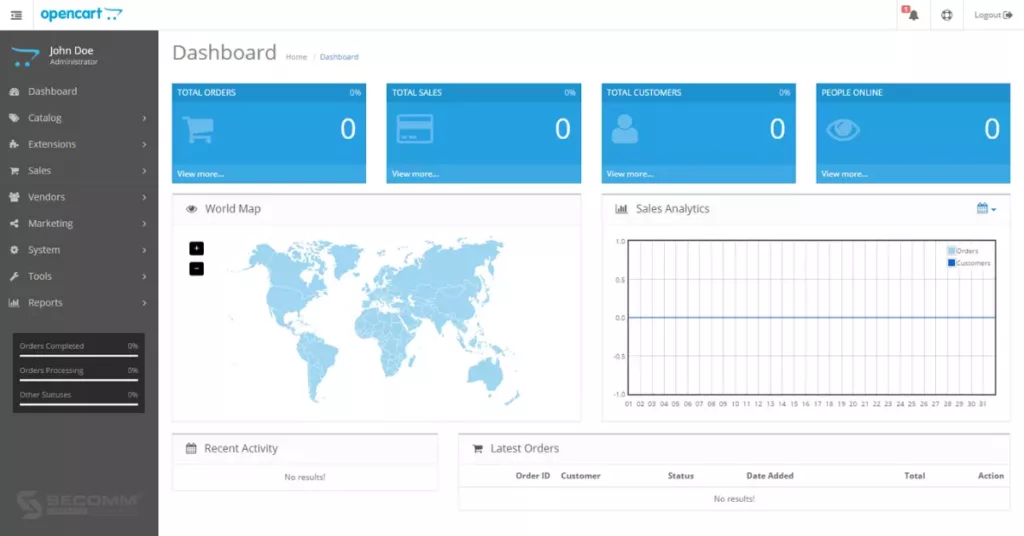
Magento isn’t a “playground” suited for beginners due to its intricate installation process, which demands a high level of technical expertise to set up.
While Magento 2 is considered more user-friendly than Magento 1, the admin dashboard still offers a multitude of options that can pose challenges for newcomers, especially when it comes to understanding Magento-specific terminology, resulting in a time-consuming learning curve.
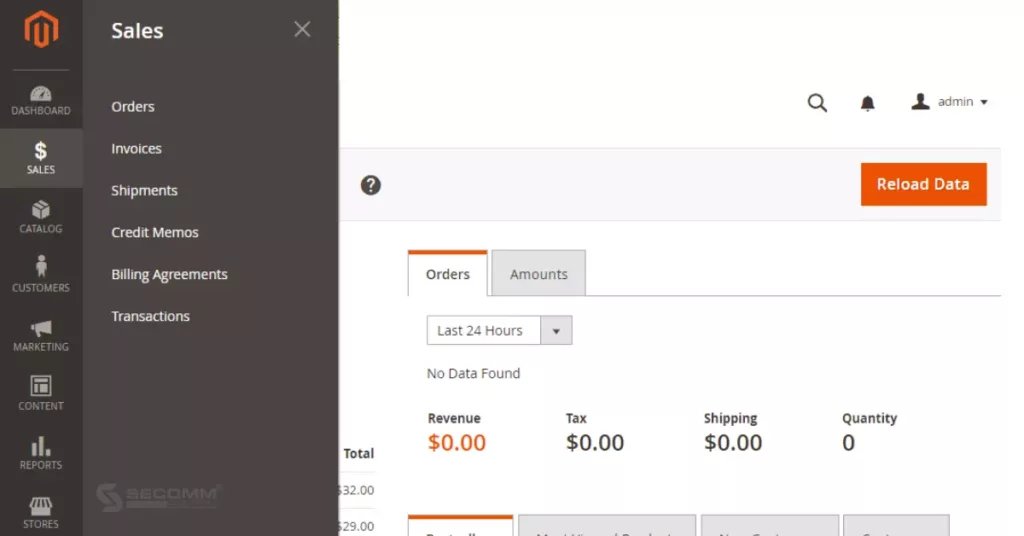
User Interface
OpenCart provides around 500 themes, available in both free and paid options (ranging from $60 to $70), catering to diverse industries. This platform enables businesses to preview their website’s appearance with various themes before making a purchase. Subsequently, businesses can customize these themes according to their specific needs.
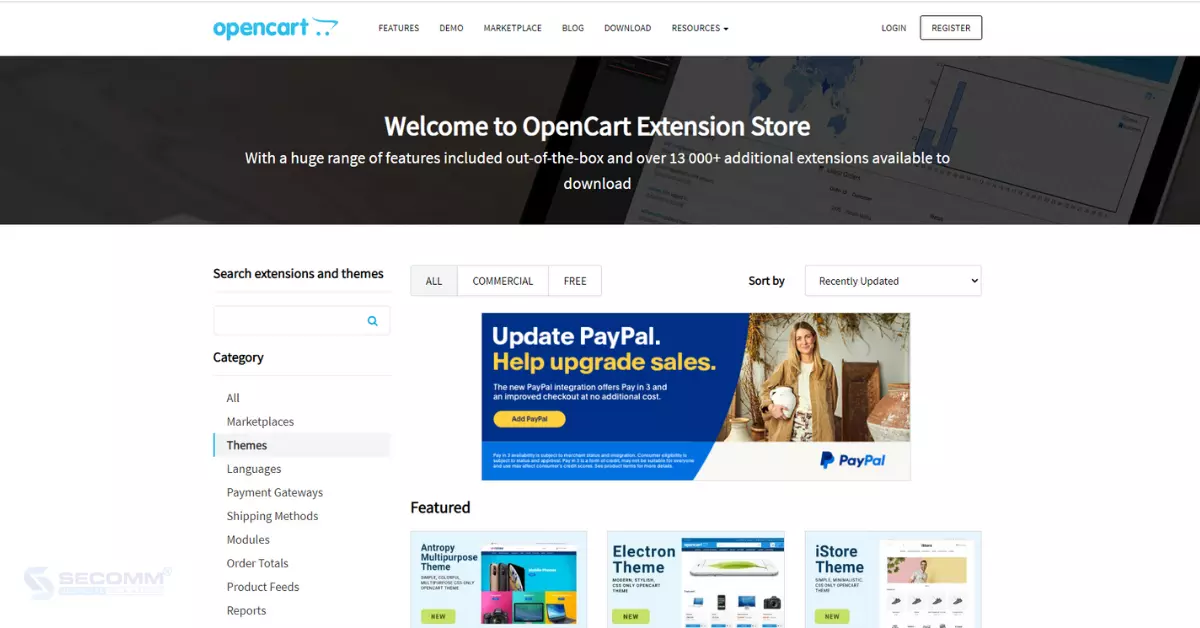
In the case of Magento, businesses have three options for creating user interfaces:
- Utilizing pre-built themes from the Magento Marketplace (ranging from $0 to $500) or theme-selling platforms like Themeforest. This choice provides cost-effective design solutions but may result in a website interface that resembles others.
- Tailoring existing themes. This option enables businesses to save costs while maintaining a unique website interface.
- Crafting a completely bespoke interface with customized themes. While this option sets a business apart from competitors, it comes with a higher price tag compared to the other two methods.
In summary, both OpenCart and Magento offer a wide selection of budget-friendly themes, but Magento allows for more extensive customization to optimize the eCommerce website’s interface.
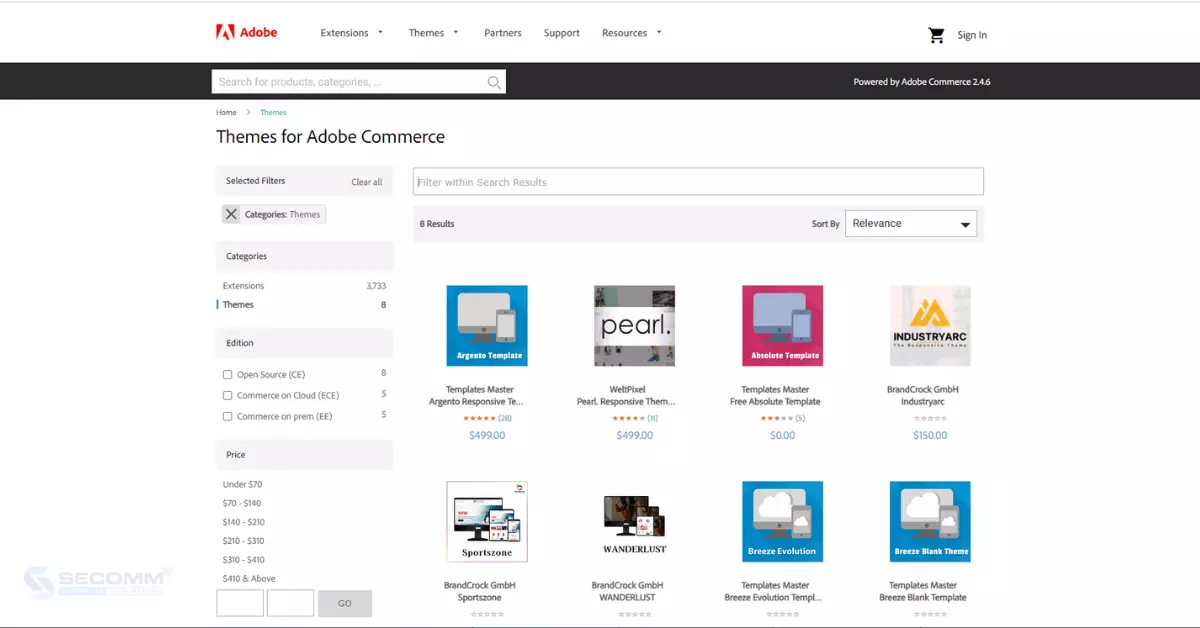
Scalability
In terms of scalability, OpenCart is suitable for small and medium-sized business websites because it can only handle a limited number of products and transactions. On the other hand, Magento is specifically designed to manage large and complex eCommerce websites, capable of handling thousands of products and daily transactions without performance issues.
When it comes to flexibility, OpenCart provides a variety of extensions and add-ons to enhance website functionality. However, its flexibility may be somewhat constrained when dealing with intricate custom requirements. In contrast, Magento offers a higher degree of flexibility, enabling businesses to customize every aspect of their website. It boasts a comprehensive system of modules and better compatibility with third-party integrations, allowing businesses to tailor and expand their website to suit their specific needs.
Overall, Magento surpasses OpenCart in terms of scalability for eCommerce websites.
Support Community
OpenCart offers two types of support to its users:
- Community forums that enable global users to share their knowledge and experiences with OpenCart.
- Paid support services at a monthly fee of $99.
Magento provides a Help Center, but its support staff primarily focuses on Adobe Commerce, which may not fully address the needs of businesses using Open Source. However, Magento boasts a global developer community of over 13,000 individuals, making it relatively straightforward to find solutions.
Security
OpenCart doesn’t assume responsibility for the security of eCommerce websites as it operates on an open-source platform. This means that OpenCart’s code and framework are publicly available, rendering websites more susceptible to potential attacks.
In contrast, despite also being an open-source platform, Magento places a strong emphasis on security. Magento has consistently released security patches since 2015 to identify vulnerabilities. This commitment ensures that eCommerce websites built on Magento maintain a high level of security, instilling confidence in online shoppers.
Through the use of third-party tools such as Mage Report and Mage Scan, businesses can assess their security status. Additionally, Magento employs CSP (Content Security Policy), which offers a structured set of principles for restricting browser content to trusted services only. This allows browsers to determine which web tools to block and which ones to trust.
Development Cost
Even though both OpenCart and Magento are provided with free licenses, there is a significant difference in the development costs for eCommerce websites.
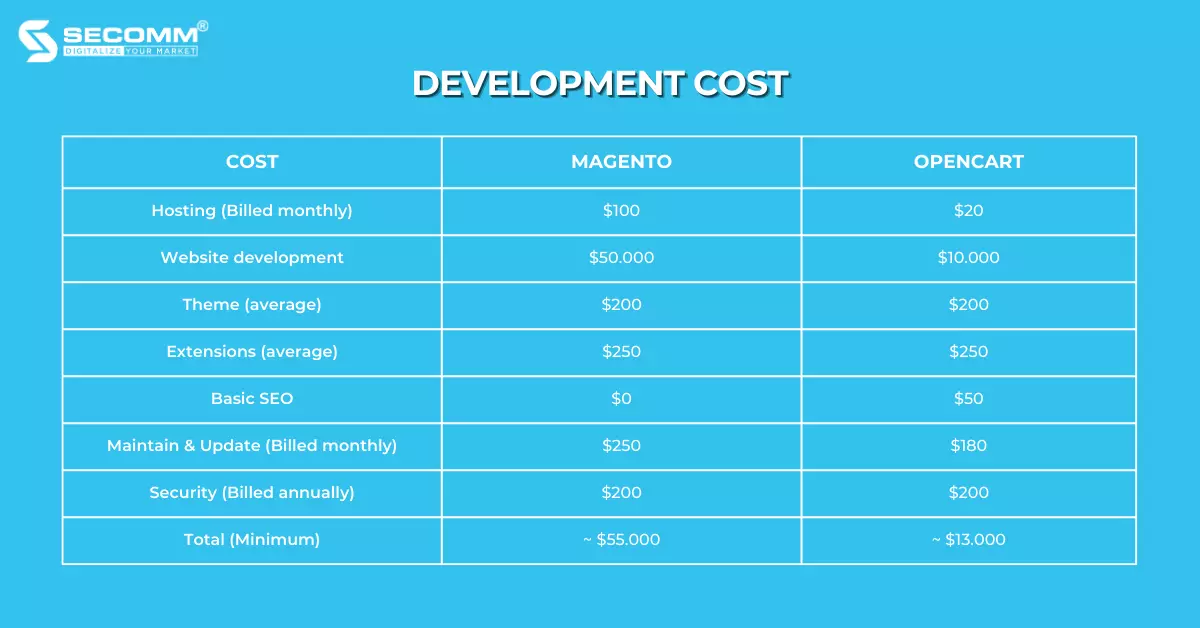
While Magento comes with a higher implementation cost than OpenCart, it offers a plethora of features for eCommerce websites. These include advanced search capabilities with Elasticsearch and OpenSearch, content editing tools that don’t require coding, support for categorizing a wider range of product types, and advanced shipping configuration, among others. In contrast, adding these features to OpenCart would necessitate the use of numerous extensions and increased storage resources to ensure efficient operation.
Considering the evaluations presented earlier, OpenCart proves to be a suitable choice for small and medium-sized enterprises (SMEs) seeking to establish their eCommerce websites. In contrast, Magento is an excellent fit for both SMEs and large corporations with specific and highly customizable eCommerce system requirements. Magento allows businesses to own a tailor-made system by either starting with a basic eCommerce website and gradually enhancing it or by creating a comprehensive system from the ground up.
With our extensive experience in implementing eCommerce solutions for clients across diverse countries, SECOMM comprehends the challenges and complexities that businesses encounter when selecting the ideal platform for constructing a professional eCommerce system.
Contact SECOMM today or call our Hotline at (02871089908) for a complimentary consultation.
 2
2

 7,256
7,256

 0
0

 1
1
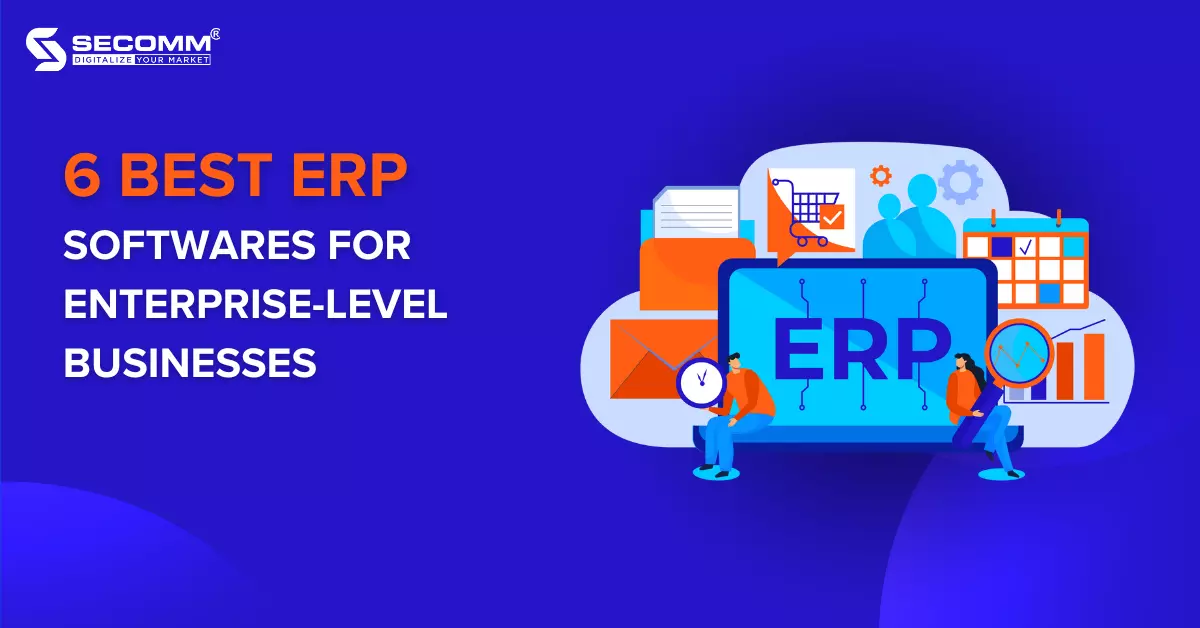
6 BEST ERP SOFTWARES FOR ENTERPRISE-LEVEL BUSINESSES
Table of Contents
Data holds significant value for eCommerce enterprises across all sizes, yet effectively managing and monitoring it is no simple task. Hence, the advent of ERP software emerges as a superior solution, enabling the amalgamation of all business data into a singular database for seamless accessibility, analysis, and oversight.
Nevertheless, to fully unlock the capabilities of ERP, businesses must opt for software equipped with features aligned with their specific business requirements. Recently, six prominent ERP software solutions are widely adopted by many eCommerce enterprises: Oracle Netsuite, Acumatica, Odoo, Sage x3, SAP S/4 HANA, and Microsoft Dynamics 365.
What is ERP?
ERP stands for Enterprise Resource Planning, is a software solution designed to assist businesses in gathering, storing, analyzing, and overseeing all data pertaining to their business operations from diverse internal departments, all within a single database. This data encompasses:
- Business financial data
- Sales and marketing data
- Production, inventory, and supply chain data
- Human resource management functions, and more
Integrating ERP software into eCommerce operations empowers businesses to centrally manage data originating from multi-channel sales and marketing endeavors, encompassing sources like websites, social media, mobile devices, and brick-and-mortar stores.
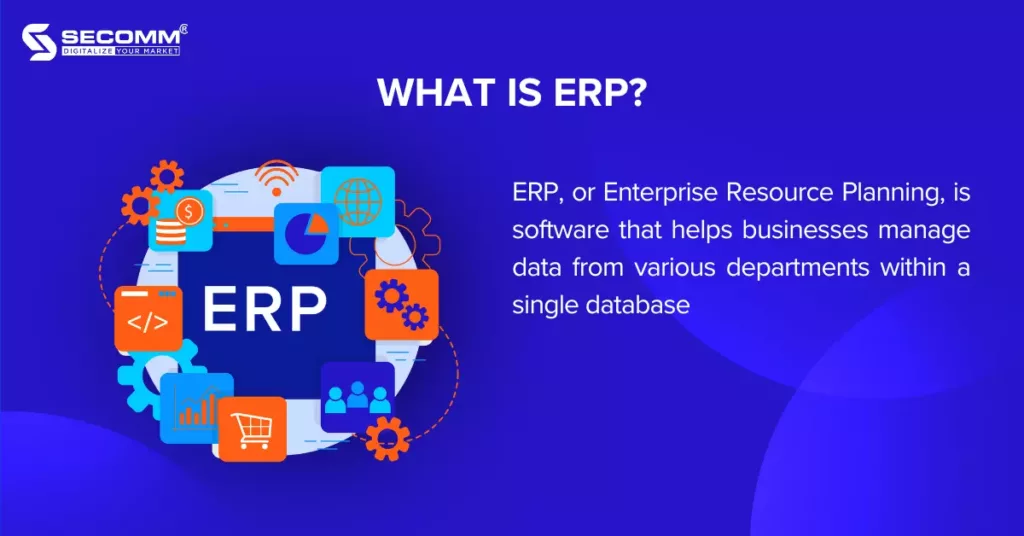
Types of ERP Systems
On-premise ERP
On-premise ERP software, also referred to as ERP in-house, is installed and stored directly on the business’s servers and internal infrastructure. When utilizing on-premise ERP, the business assumes responsibility for managing hardware, IT infrastructure, software updates, and maintenance.
Cloud-based ERP
Cloud-based ERP software is supplied, stored, and managed by a third-party provider. This allows users to access it remotely from any device with an internet connection and is also known as Software as a Service (SaaS). In this scenario, the provider takes charge of infrastructure management, encompassing servers, storage, data backups, updates, and software maintenance.
Hybrid ERP
Hybrid ERP software is a combination of both on-premise and cloud-based ERP solutions. In the hybrid ERP model, specific modules of the ERP system are stored on-premise, while others are stored in the cloud. This approach enables businesses to leverage advantages from both software models. For instance, critical data or modules can be kept on-premise for control and heightened security, whereas less critical data or modules can be hosted in the cloud for effortless accessibility and future expansion.
Advantages of Using ERP in eCommerce
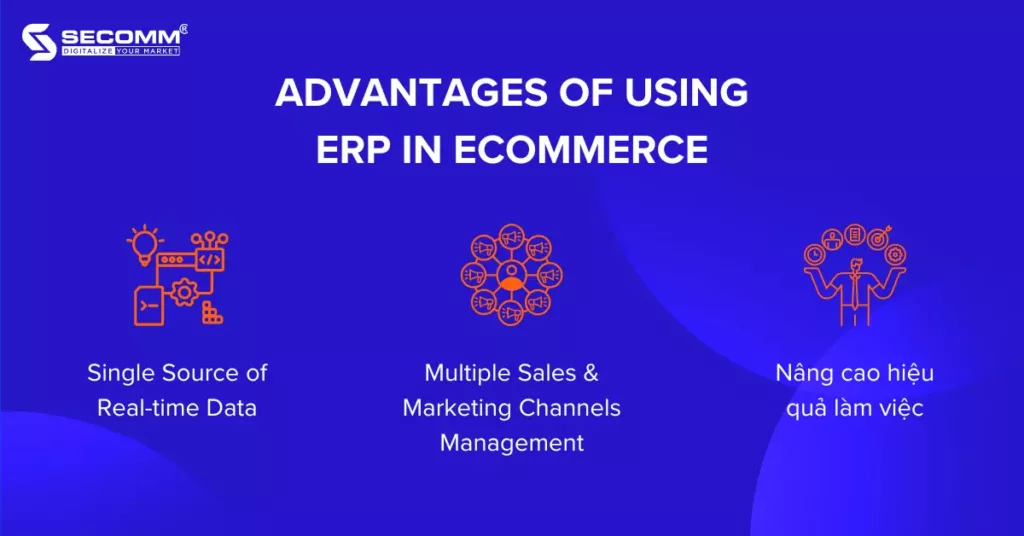
Single Source of Real-time Data
One notable advantage of ERP software is its real-time integration capability, which consolidates diverse departmental data into a unified database. This consistency streamlines data management, especially considering the substantial volume of data that eCommerce businesses accumulate daily, much of which pertains to purchasing behavior.
As a result, when integrating this data with other business information, enterprises can uncover and implement distinctive approaches to:
- Cultivate brand identity
- Increase sales
- Create marketing campaigns to enhance conversions
- Trim unnecessary operational expenses, and more
For instance, ERP software provides businesses with reports encompassing details about best-selling products, canceled orders, recurring customer lists, cart abandonment rates, interactions with social media posts, and more. In turn, businesses can amalgamate all this data within a shared database to gain a holistic perspective of the current landscape and swiftly make pertinent adjustments for eCommerce expansion.
Multiple Sales & Marketing Channels Management
eCommerce enterprises employing a variety of channels in their sales and marketing strategy will likely need to evaluate sales performance and engagement levels across each channel to gauge their efficacy. ERP software assists businesses in concurrently managing sales channels within a centralized database.
Through analyzing integrated ERP data from various channels, encompassing social media, websites, mobile apps, eCommerce platforms, and more, enterprises can understand why one sales channel surpasses others and determine which marketing campaigns yield favorable conversions and which ones require enhancement.
Boost Productivity
Insufficiently integrated business data can lead to difficulties in accessing accurate and updated information. This may compel businesses to manually input extensive data, potentially resulting in errors.
Conversely, the use of ERP can facilitate nearly impeccable automated data entry. Moreover, this software supports other automated processes, like invoice generation and marketing campaign automation, among others. This frees businesses from monotonous manual tasks, enabling them to concentrate on pivotal tasks that enhance revenue.
Top 6 eCommerce ERP Software
Oracle NetSuite
Oracle NetSuite serves as a cloud-based ERP solution, delivering a comprehensive set of tools for effectively managing business operations. This software empowers eCommerce enterprises to automate functions across multiple domains, including sales management, marketing, customer relations, financial control, inventory management, and more.
What sets Oracle NetSuite apart is its adaptability and scalability, catering to businesses of various scales and industries. It streamlines eCommerce workflows while enhancing operational efficiency, all facilitated by real-time insights available through a unified dashboard.
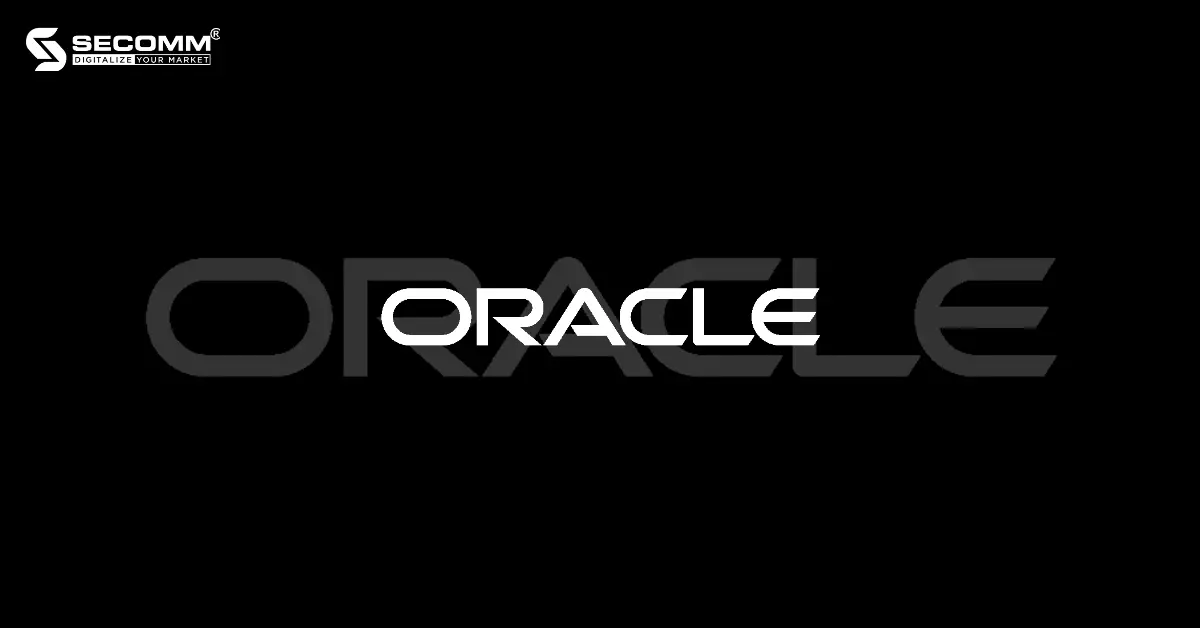
Key features of Oracle NetSuite encompass:
- eCommerce Capability: Facilitating efficient management of eCommerce outlets, multichannel sales, product catalog administration, online order handling, and seamless omnichannel shopping experiences.
- Order & Inventory Management: Optimizing order fulfillment processes and live monitoring of inventory levels and control.
- Customer Relationship Management (CRM): Empower businesses with CRM functionalities for overseeing customer interactions, sales workflows, marketing endeavors, and personalized customer experiences.
- Financial Management: Oracle NetSuite aids in financial oversight by providing shared ledgers, budget planning, revenue recognition, and comprehensive financial reporting.
- Real-time Reporting & Analytics: NetSuite integrates real-time analytics and reporting tools into a customizable dashboard, offering support for data-driven decision-making.
Pros:
- Easily accessible on multiple computer and mobile browsers.
- User-friendly and intuitive interface suitable for a wide range of users.
- Real-time reporting capability.
- Easily customizable and expandable to match individual business needs.
Cons:
- Undisclosed pricing, causing challenges in estimating deployment costs.
- Complex deployment procedures.
- Being primarily a cloud-based ERP, Oracle NetSuite might restrict businesses’ control.
- Dependence on internet connectivity.
- While NetSuite allows for customization, there are limitations on the extent of flexibility in these customizations. Hence, complex customization needs might require additional development or alternative solutions.
Cost: Estimated deployment costs for Oracle NetSuite can commence at $10,000. Nevertheless, this is not a fixed price and will be tailored according to each business’s specific deployment requirements.
Acumatica
Acumatica stands as a cloud-based ERP software designed to cater to businesses of all sizes, particularly those in rapid development. It offers adaptable cloud storage alternatives, including both public and private clouds, ensuring convenient access and secure handling of business data.
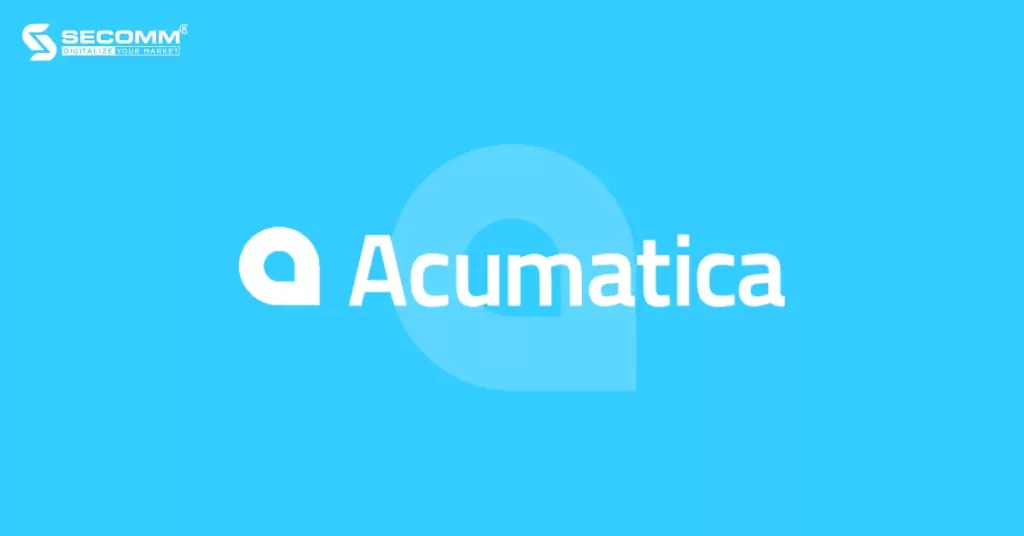
Prominent features of Acumatica including
- eCommerce Integration: Acumatica empowers businesses to seamlessly integrate with popular eCommerce platforms like Amazon, Magento, Shopify, BigCommerce, and more. The integration process is designed to be swift and smooth, enabling businesses to harness specific eCommerce functionalities such as order management, inventory synchronization, shipping, and taxation.
- Financial Management: Acumatica equips businesses with tools to streamline financial operations, automate accounting procedures, generate financial reports, and manage general ledgers. This ERP solution furnishes real-time insights into financial performance, supporting informed decision-making based on precise and updated financial data.
- Inventory Management: Acumatica delivers an array of tools to efficiently manage and optimize inventory. Moreover, it facilitates real-time monitoring and predictive analysis of inventory, enabling businesses to minimize stock shortages and unnecessary inventory costs.
Pros:
- The flexible modular structure allows businesses to register and use the modules they need, and easily add or modify modules over time based on developmental needs.
- Real-time data delivery anytime, anywhere, and on any device.
- The software can be easily integrated with modern technologies in the future.
- An outstanding solution that meets the specific needs of various industries, including construction, distribution, manufacturing, and eCommerce retail.
Cons:
- The pricing is not publicly disclosed, which makes it difficult for businesses to estimate deployment costs.
- The flexibility in the modular structure can lead to additional costs when the demand for additional modules increases rapidly over time.
Cost: Estimated costs for deploying Acumatica can range from $15,000 to $40,000 per year. However, this is not a fixed price and will be customized based on the specific deployment needs of each business.
Odoo
Odoo is an open-source ERP software in a modular form that can be customized to support businesses in efficiently managing various aspects of their operations, such as customer relationship management (CRM), accounting, inventory management, and more. Odoo provides an optimal solution for businesses of all sizes and industries.
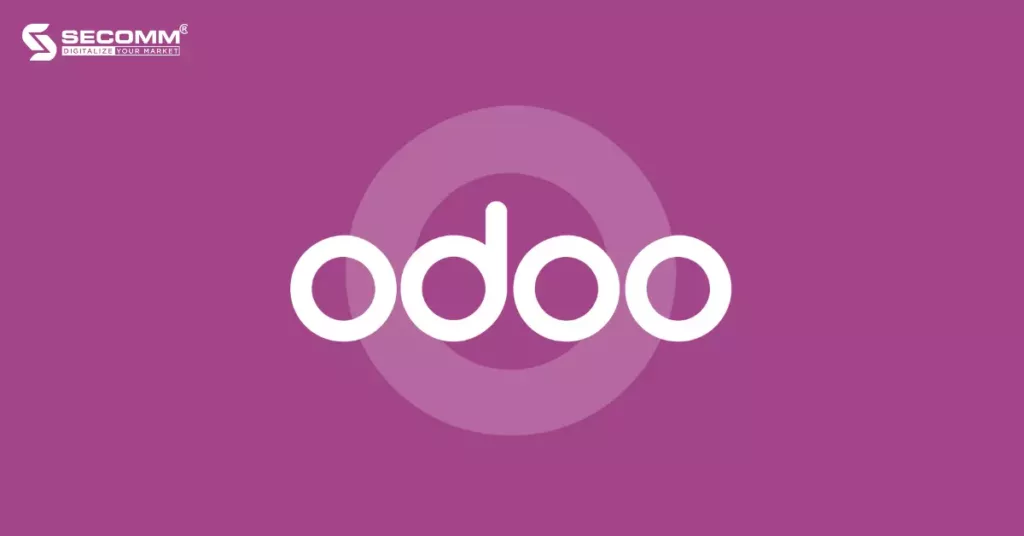
Key Features of Odoo:
Odoo offers a comprehensive set of features and modules ranging from basic to advanced, catering to all business operational needs in eCommerce. It stands out with the following features:
- Webstore Creation: Odoo provides a web builder that enables businesses to swiftly establish and manage their online presence. Businesses can design and customize professional eCommerce websites through drag-and-drop features, utilizing available templates and features such as page creation, content management, integrated blogging, SEO, and more.
- Customer Relationship Management (CRM): Odoo supports effective customer relationship management with features for managing potential customers, interacting with existing customers, handling sales processes, and segmenting customer groups. Moreover, the CRM module can integrate with other Odoo modules for streamlined tracking and operation.
- Product Management: Using Odoo, businesses can efficiently manage their products by creating and organizing product catalogs, defining attributes, managing product pricing, tracking product availability, and overseeing product lifecycle stages.
- Inventory Management: Businesses can utilize Odoo to track inventory movements and optimize order fulfillment. The system also supports features such as barcode scanning, serial number tracking, real-time batch management, and updates.
- Marketing: Businesses can automate marketing campaigns using Odoo. From email marketing and social marketing to SMS marketing, Odoo assists businesses in creating, executing, and automating the monitoring of campaign effectiveness. Additionally, integrating Odoo with social media platforms helps businesses increase their potential customer reach, nurture leads, and achieve rapid conversions.
Pros:
- Complete range of customizable features from basic to advanced.
- Offers a variety of modules spanning from sales management, and marketing, to financial management and inventory control. Modules are integrated and share data with each other.
- Intuitive and user-friendly interface.
- Capability to display all detailed information on a single unified database.
- High degree of customization to suit specific business needs.
Cons:
- Complex setup process.
- While Odoo offers customization capabilities, complex customization needs substantial investments in terms of time, costs, and technical expertise.
- Limited customer support.
- Performance and scalability fall short of meeting the demands of large enterprises.
Cost: Businesses receive free usage if they utilize only a single module and there’s no restriction on the number of users. However, if a business uses two or more modules, the pricing structure is determined based on:
- Number of users
- Number and type of modules used
Sage x3
Sage X3 is a hybrid ERP software solution designed to meet the needs of medium-sized and large enterprises in managing and operating business activities across multiple locations or countries.
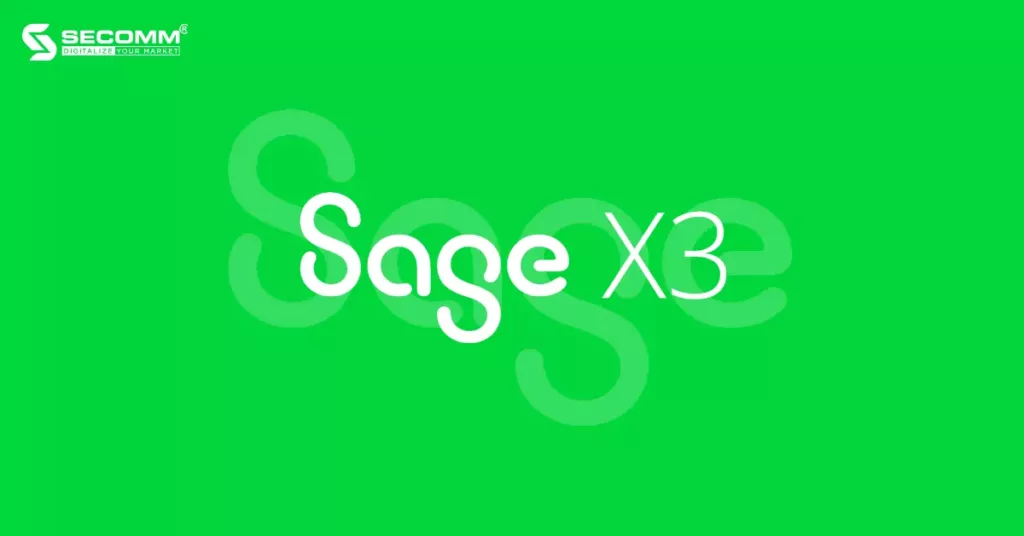
Key features of Sage X3:
Sage X3 offers a range of features from basic to advanced to support business management and operations processes, with a focus on product management, supply chain management, and financial management.
- Product Management: Sage X3 provides businesses with flexibility in managing product-related processes through solutions such as Bill of Materials (BOM) planning, Quality Control, Shop Floor Control, and Project Management.
- Supply Chain Management: Sage X3 offers comprehensive integration of solutions including Purchasing, Inventory Management, Sales Management, and Customer Service to help businesses capture customer demands and enhance supply chain operations efficiency.
- Financial Management: Sage X3 provides businesses with a set of solutions to monitor real-time financial data, aiding in strategic decision-making. Solutions encompass budgeting and accounting, fixed asset management, and financial reporting.
Pros:
- Real-time data reporting and updates, enhancing financial management processes and decision-making optimization.
- Intuitive and user-friendly interface.
- High scalability and extensive customization options.
- Offers tailored support for specific industry workflows.
Cons:
- Undisclosed pricing complicates cost estimation for deployment.
- Absence of live chat support for direct customer assistance on the website.
- Lack of social media integration.
Cost: Estimated implementation costs for Sage ERP can commence at $128,000. However, this figure is not fixed and will be adjusted based on the unique deployment requirements of each business.
SAP S/4 HANA
SAP S/4 HANA (High-Performance Analytic Appliance) is a leading hybrid ERP software designed for large-scale enterprises. SAP S/4 HANA is considered the next-generation comprehensive ERP solution by SAP, incorporating artificial intelligence technology. It is designed to optimize business processes, cater to specific industry requirements, and support decision-making processes. The software offers solutions in financial management, supply chain management, sales management, customer relationship management, and more.
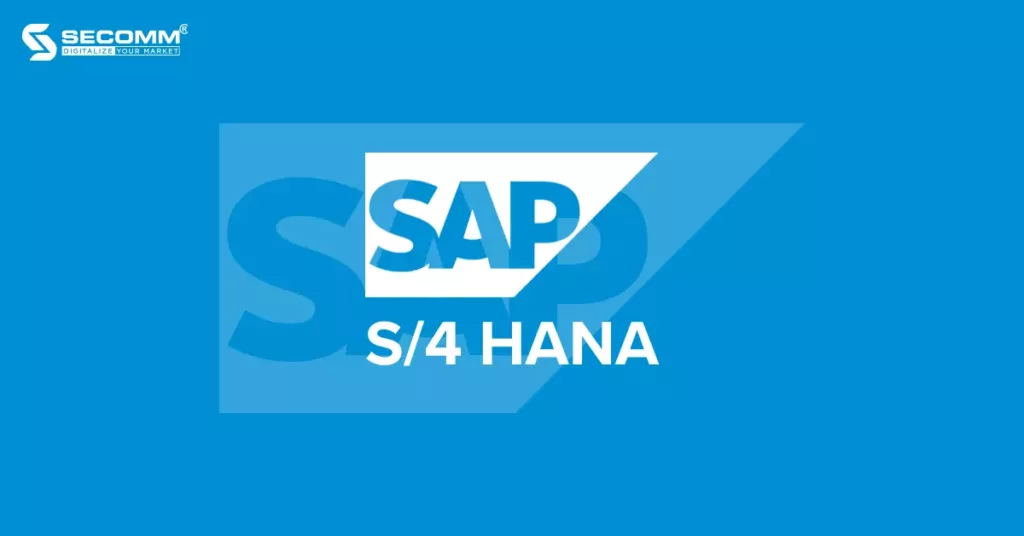
Key Features of SAP S/4 HANA:
- In-Memory Computing Technology: With this technology, SAP S/4 HANA can process and analyze real-time data while performing calculations and accessing data about 10,000 times faster than current technologies. This enables businesses to instantly access accurate and updated data, ensuring more confident decision-making.
- Consolidated Reporting: This ERP provides a solution for businesses to generate consolidated reports such as balance sheets, profit and loss statements, and cash flow statements. Additionally, businesses can visualize both aggregated and unaggregated financial information using SAP Analytics Cloud.
- On-Cloud and On-Premise Deployment: This offers businesses the flexibility to choose their preferred deployment model. On-cloud deployment promotes scalability, accessibility, and reduces infrastructure costs, while on-premise deployment grants businesses more control over data and customization options.
- User Experience: SAP S/4 HANA offers an enhanced user experience through the modern and intuitive SAP Fiori user interface. Personalized and responsive dashboards allow access to the system across multiple devices.
Pros:
- Real-time data retrieval using in-memory computing technology.
- Streamlined data simplification accelerates processing, enhances system performance, and ensures data consistency.
- Diverse features and industry-specific solutions effectively tackle sector-specific business requirements and challenges.
Cons:
- Due to its comprehensive and advanced nature, deploying it can be intricate.
- Given the modern technologies and features of SAP S/4 HANA, businesses must have relevant knowledge and skills for successful implementation.
Cost: The pricing details for SAP S/4 HANA are not publicly disclosed, though businesses can access a 30-day free trial with certain feature limitations.
Microsoft Dynamic 365
Microsoft Dynamics 365 software stands out as a superior hybrid ERP solution tailored for large enterprises. Depending on individual business needs, the ERP system can seamlessly integrate with diverse Microsoft applications to optimize various aspects of business operations, including sales, inventory, and financial management. Microsoft Dynamics 365 is well-equipped to provide effective support for numerous industries such as manufacturing, financial services, healthcare, eCommerce, and more.
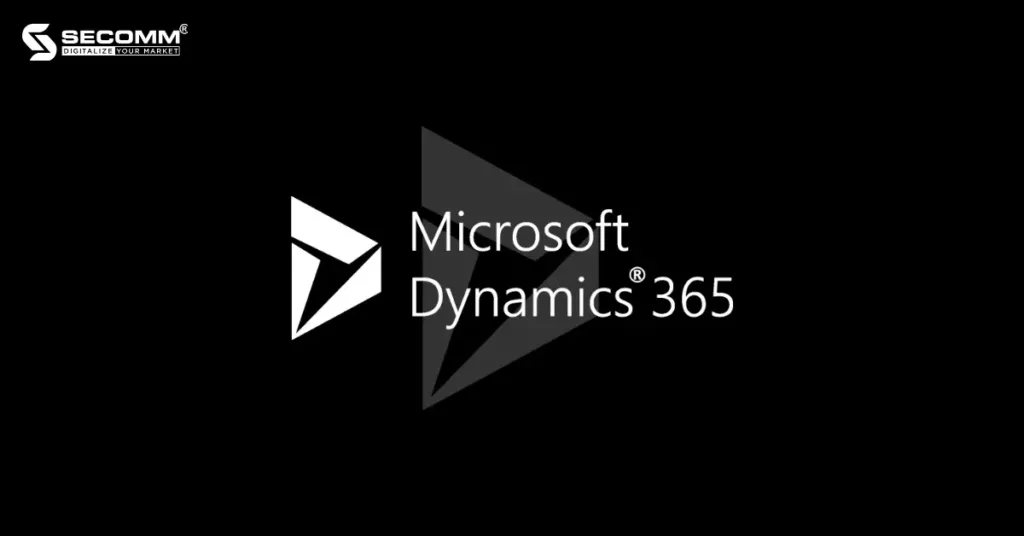
Key Features:
- Supply Chain Management: Enterprises establish an intelligent and automated supply chain by harnessing real-time, in-depth data insights that aid in forecasting, planning, and inventory management.
- Commerce Management: Businesses enable customers to make purchases anywhere, anytime, and on any device by facilitating consistent interactions across online and offline channels.
- Marketing Management: Companies can predict, create, and distribute content through appropriate channels while delivering personalized customer experiences.
- Intelligent Order Management: Streamlining and automating order fulfillment processes using AI technology and real-time omnichannel inventory reporting. Additionally, it proactively addresses order disruptions by restructuring order flows.
- Customer Data Management: Utilizes AI to gather and analyze customer data, revealing new insights while maintaining a balance between personalized experiences and data security. Leveraging these insights, businesses enhance campaigns to boost customer retention and loyalty.
- Customer Service Management: Connects with customers across all engagement channels, addressing inquiries via chatbots and remote portals. Centralizes relevant data on a single dashboard, optimizing costs and enhancing decision-making for future requirements.
Pros:
- Smooth integration with other Microsoft products.
- Seamless operation of interconnected modules, spanning from marketing and commerce to supply chain.
- Automated workflows empowered by AI technology.
- Highly adaptable and scalable, aligning with business expansion needs.
- Cloud ecosystem facilitates effortless connectivity to on-premise systems across devices with internet access.
- Comprehensive reporting and in-depth analysis bolster data-informed decision-making.
- Trial support enables businesses to evaluate suitability before full deployment.
Cons:
- The software’s utilization of AI technology and advanced functionalities demands specific knowledge and skills for successful implementation, contributing to intricate and time-consuming deployment processes.
- Module costs are relatively elevated, ranging from $50 to over $1000 per user per month. Thus, businesses should make the most of the trial version to ensure alignment with needs and budget.
- Storage capacity restrictions might necessitate supplementary purchases, incurring additional expenses.
Cost:
Businesses can avail of a free 30-day trial of Microsoft Dynamics 365. Depending on the module, the software offers two pricing categories:
- First Dynamic 365 app
- Subsequent qualifying Dynamic 365 app
Subsequent pricing is applicable solely to individuals licensed to utilize the first app.
As an example, in the Financial Management module:
- The initial app license cost is $180 per user per month.
- Subsequent pricing for additional apps, for users already licensed for the first app, stands at $30 per user per month.
For detailed pricing information on other modules, businesses can refer to Microsoft Dynamics 365’s pricing page.
The aforementioned is a summary of 6 eCommerce ERP software options tailored for large-scale businesses, showcasing their unique features and respective strengths and weaknesses.
To gain a more comprehensive insight into ERPs and to select the ERP software that best suits your business requirements, contact SECOMM or call the SECOMM Hotline (02871089908) for a free consultation.
 2
2

 7,872
7,872

 0
0

 1
1
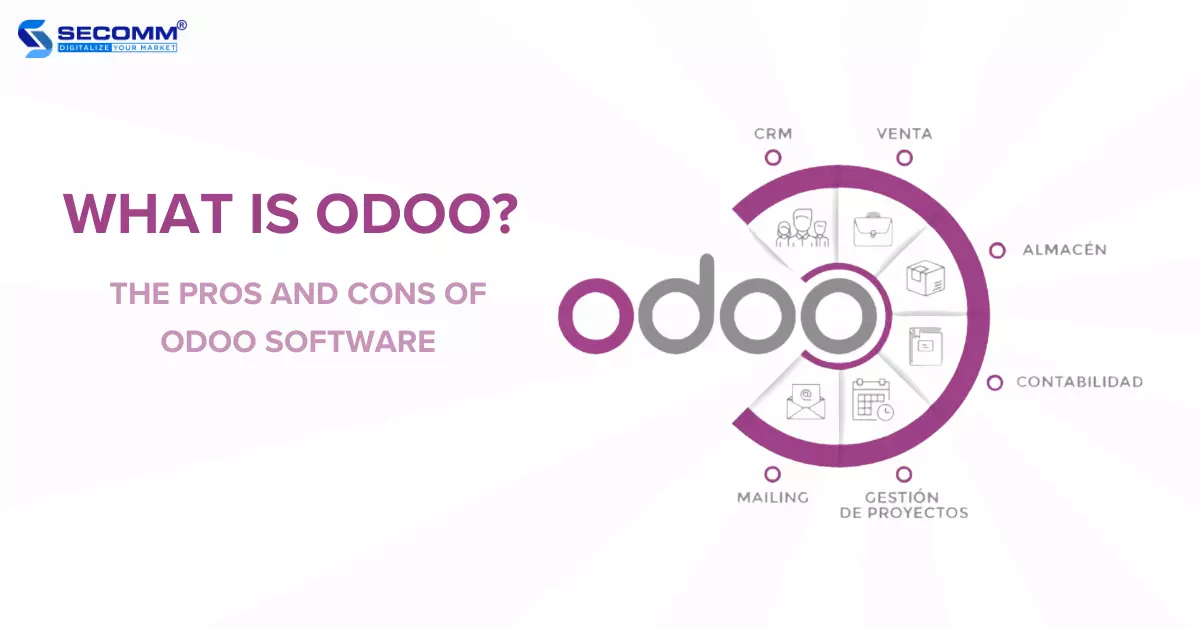
WHAT IS ODOO? TOP 10 PROS AND CONS OF ODOO SOFTWARE
Table of Contents
In today’s landscape, ERP software plays a pivotal role in the efficient management and operation of eCommerce activities. Among them, Odoo ERP stands out as pre-configured management software, tailor-made for businesses for easy downloading and utilization, providing a range of solutions to support various business facets like sales, marketing, inventory, customer service, and more. The subsequent article aims to elucidate the concept of Odoo ERP and delve into its strengths and weaknesses when integrated within enterprises.
What is Odoo?
Odoo, also known as Odoo ERP and previously called OpenERP, is a versatile open-source business management software. It comes with complete integration and customization capabilities, catering to offer a comprehensive solution for overseeing diverse facets of eCommerce operations.
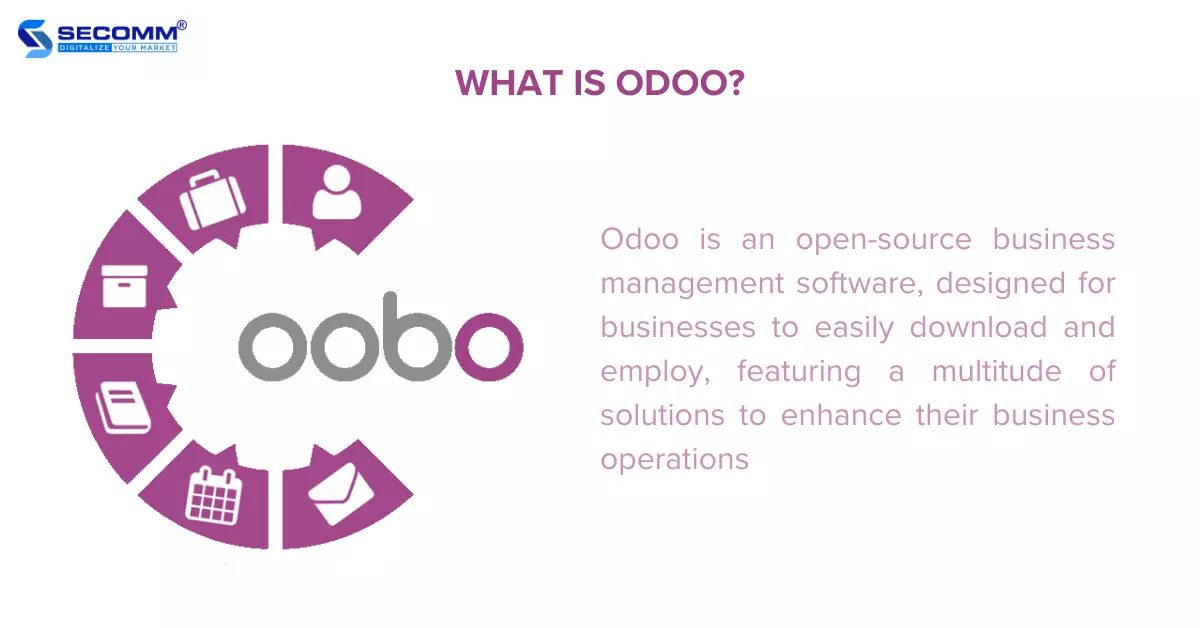
Among its noteworthy functionalities are sales and marketing management, customer relations, project oversight, manufacturing, inventory control, accounting, human resource administration, customer service handling, and a plethora of other applications. As a result, Odoo is adept at fulfilling the real-world business requirements of enterprises spanning all sizes and budget ranges, across many industries.
Odoo Versions & Editions
Versions
There are various editions of the Odoo software, with the most recent being Odoo 16; additionally, Odoo 17 is anticipated for release towards the end of 2023. With respect to version 16, the development team has incorporated numerous features and tools to bolster business efficiency, concurrently concentrating on refining a host of existing attributes. Odoo 16 stands as a source of pride, being the swiftest, most visually appealing, and intuitively designed version.
Editions
The Odoo management software is available in two primary editions that every business should thoroughly explore before implementation.
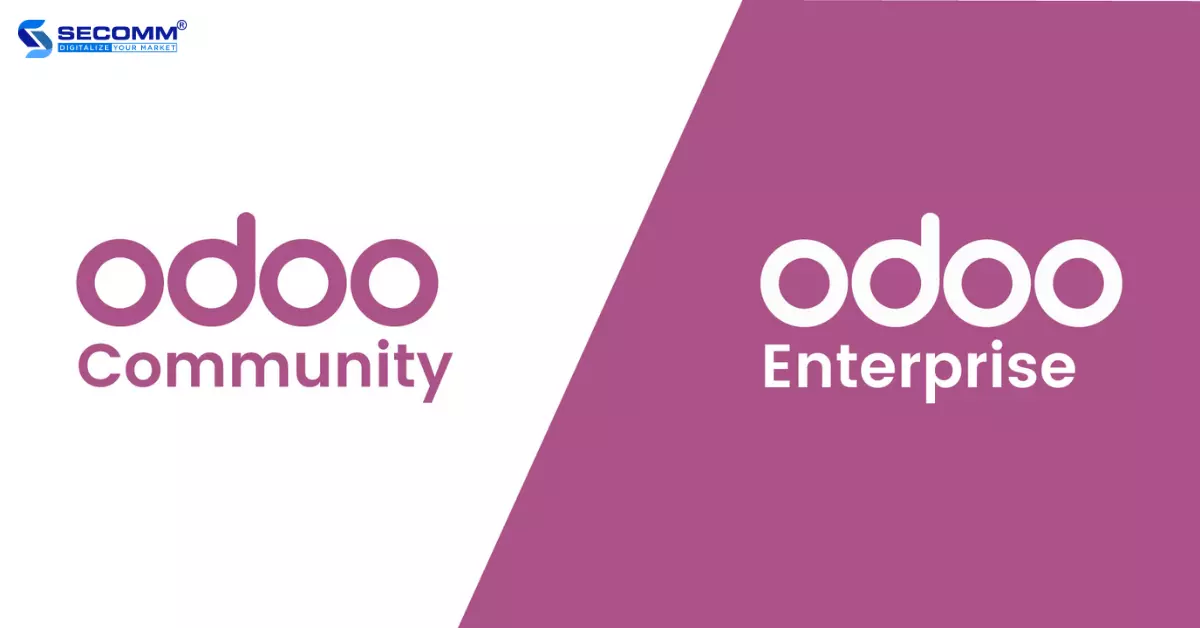
- Odoo Community Edition (Free Version)
This version of Odoo is free for users to download and use. The Odoo Community edition offers a wide range of features and modules that support essential business operations such as sales management, marketing, customer relationship management, inventory management, accounting, and more.
- Odoo Enterprise Edition (Paid Version)
The Odoo Enterprise edition is a premium, paid version with multiple editions tailored to businesses of all sizes. The Enterprise edition is designed to provide advanced features and modules that enhance operational workflows. The cost of the Odoo Enterprise edition is determined by five factors: the number of users, the number of utilized apps, hosting type, deployment services, and integration with third-party systems.
Pros of Odoo
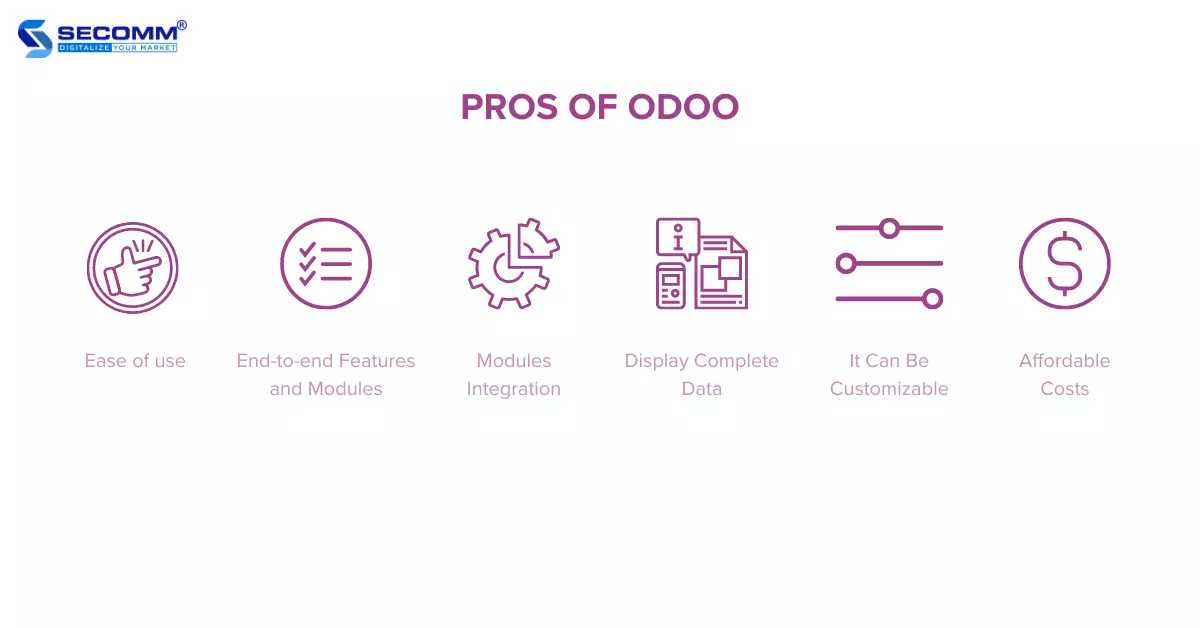
Ease of use
The Odoo interface boasts a simple and intuitive design, with modules logically and systematically organized. As a result, new users will quickly become proficient without investing an excessive amount of time.
End-to-end Features and Modules
Odoo offers an expansive array of features and modules, spanning from fundamental to advanced, to address all requirements for effective business management and operations. These encompass tasks such as sales management, marketing, customer support, accounting, inventory control, and manufacturing.
As businesses embark on Odoo implementation, they can initially utilize the complimentary Community edition and subsequently migrate to the paid Enterprise edition, unlocking the full spectrum of capabilities, modules, services, and progressive enhancements.
Modules Integration
Previously, businesses used to store information and data within individual department databases, leading to challenges in accessing and sharing information across departments. With Odoo, apart from providing the necessary modules for management and operations, it also aids businesses by integrating and storing data from all departments in a unified database, facilitating quicker and more convenient management and tracking.
Display Complete Data
Besides storage and integration, Odoo also holds the advantage of presenting comprehensive information. For instance, the ability to showcase detailed and complete data assists businesses in effectively managing product inventory levels on a daily or monthly basis, encompassing future shipments that have not yet been recorded.
Moreover, businesses can better control working capital by gaining insight into their inventory status. Furthermore, the availability of all information in a unified database fosters collaboration and streamlines the accomplishment of complex tasks. This results in improved workflow processes, enabling businesses to effortlessly monitor interdepartmental processes with efficiency.
It Can Be Customizable
Another benefit of Odoo software pertains to its customization potential. Odoo allows users to tailor the software to their requirements without the necessity of writing code. Thanks to its intuitive and user-friendly interface, individuals without extensive programming skills can also make adjustments.
Affordable Costs
Comparatively, the cost of utilizing Odoo is quite reasonable in comparison to other ERPs. For businesses with a single function requirement, there is no charge for using Odoo, allowing for long-term usage. However, when utilizing two or more functions, businesses receive a 15-day trial period, followed by a moderately priced subscription.
Costs escalate further if the customization and programming of additional modules are aligned with the business’s direction are required. If a business possesses an internal team to perform these tasks, the development costs can be avoided. In practice, businesses will need to seek support from specialized Odoo experts.
Cons of Odoo
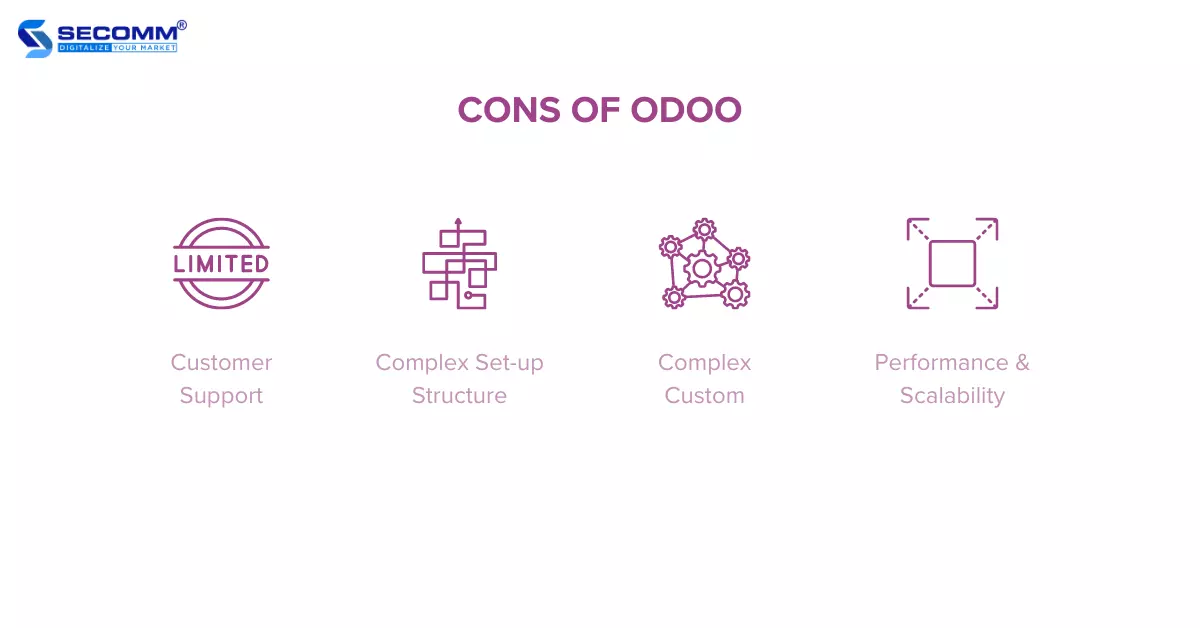
Customer Support
Because of constrained resources and a vast user base, Odoo is unable to offer top-notch customer support to every client. Certain customers have found themselves dissatisfied as their concerns weren’t entirely resolved during their initial support interactions. Furthermore, the cost of Odoo training is quite substantial, rendering it unfeasible for small businesses to establish a specialized Odoo support team.
Complex Set-up Structure
Much like other present-day ERP software, Odoo’s structure can pose difficulties during the initial setup for businesses adopting it for the first time. This can result in a time-consuming and effort-intensive process of addressing setup-related issues
Complex Custom
While Odoo provides numerous built-in functionalities, being a universal ERP solution for diverse business models worldwide means that adapting Odoo to a particular business type or a specific country requires customization.
Odoo does offer customization options, but for highly specific or complex customization requirements, it might necessitate developers with extensive technical expertise and experience. This could potentially lead to extra costs for customization and overall maintenance.
Performance & Scalability
Although Odoo can meet the deployment requirements for a variety of business scales, its performance, and scalability may raise considerations for larger enterprises with substantial transaction volumes. Hence, businesses should strategize their development and assess scalability aspects prior to choosing, ensuring effective operations.
With many years of eCommerce deployment and integration of various ERP systems for numerous global enterprises, SECOMM comprehends the challenges businesses face when implementing the Odoo ERP system.
Contact SECOMM or call the Hotline (02871089908) now to receive consultation on Odoo implementation.
 2
2

 10,956
10,956

 0
0

 1
1
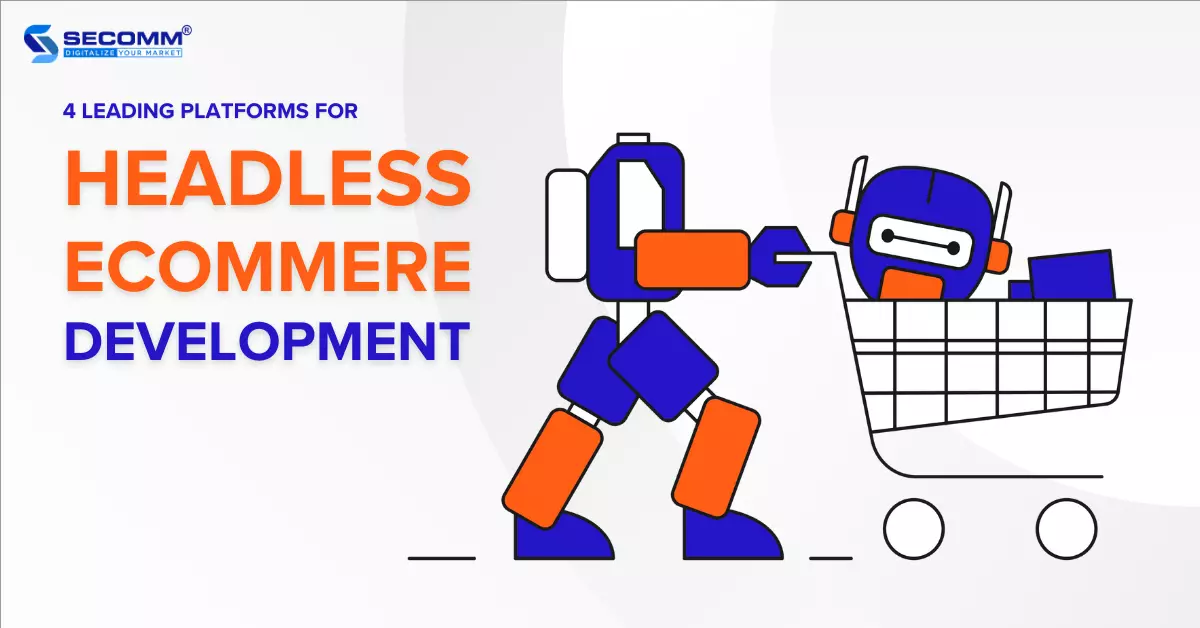
4 LEADING PLATFORMS FOR HEADLESS ECOMMERCE DEVELOPMENT
Table of Contents
In Headless eCommerce architecture, the user interface (frontend) is separated from the business logic and database (backend), operating independently and communicating with each other through Application Programming Interfaces (APIs). The backend of the eCommerce system can be linked to multiple frontends to deliver a seamless omnichannel experience for customers.
This omnichannel capability has driven many businesses to adopt Headless eCommerce to adapt to market trends and attract a large customer base across all potential channels.
However, from the planning stage to achieving the goals, it’s a long journey with several crucial steps that require dedicated efforts from businesses. Among them, selecting the right platform for Headless eCommerce development is essential. Currently, there are four prominent platforms in the market: Adobe Commerce, Shopify Plus, BigCommerce Enterprise, and Commercetools.
This article will focus on helping you as a business make the right decision by listing the selection criteria and pros and cons of each platform.
Things to Evaluate When Choosing Headless eCommerce Platform
Headless Architecture
You need to ensure that the chosen platform supports the Headless architecture, allowing the separation of the frontend user interface from the backend system. The separation provides omnichannel capabilities, enabling you to deliver seamless and consistent customer experiences across all channels (e.g., websites, mobile devices, IoT devices, etc.).
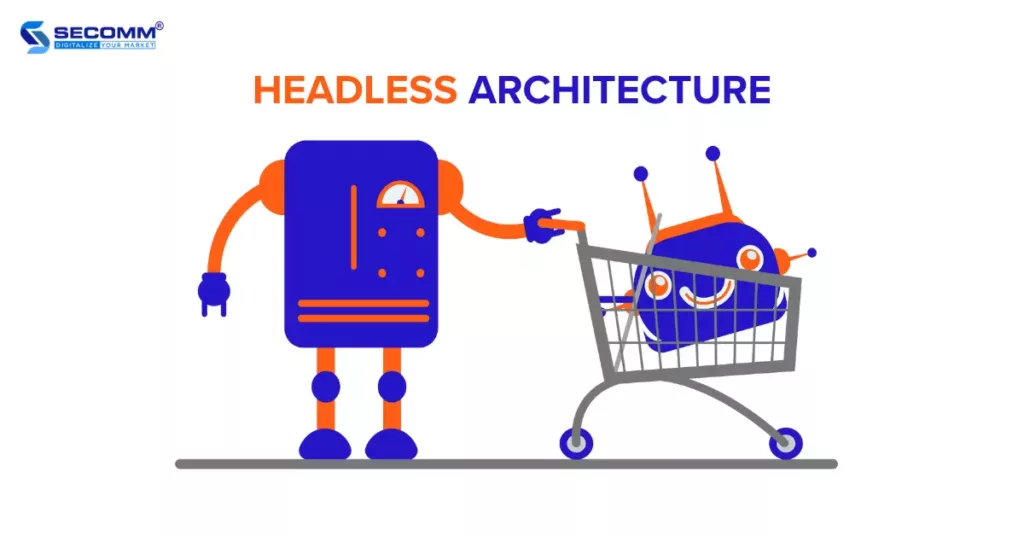
API Capabilities
APIs are crucial for integrating with various different user interfaces. Therefore, you should seek a platform with the ability to provide customizable APIs for seamless data exchange.
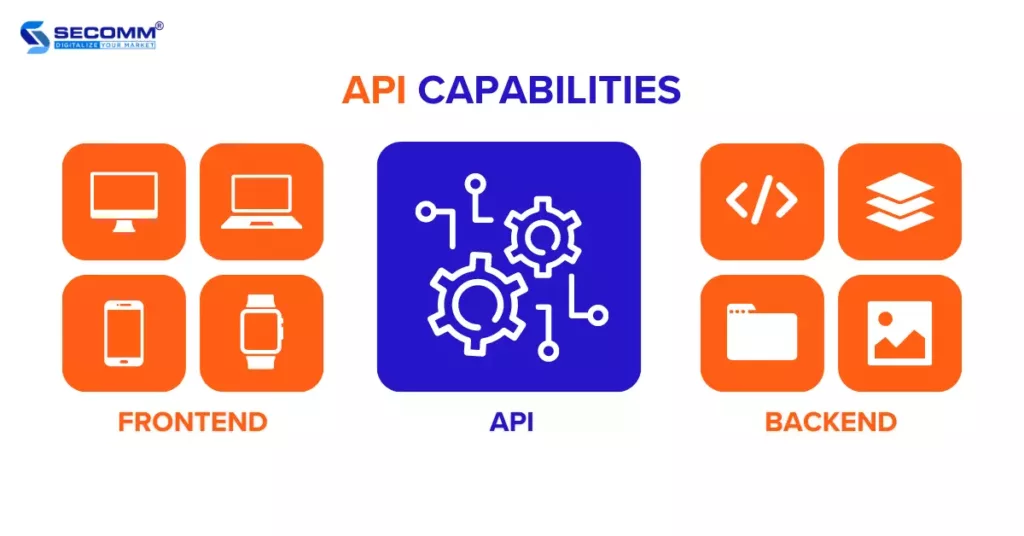
Performance & Scalability
Next, you need to consider the scalability of the platform, especially for large-scale enterprises with extensive and complex product catalogs or significant inventory management needs. A highly scalable platform can easily adjust its size based on requirements, handle high traffic, and ensure top-notch performance even during peak shopping seasons.
The ability to integrate with third-party solutions is also crucial when selecting a platform. Third-party tools serve specific business needs and drive eCommerce efficiency. You can prioritize platforms with strong integration capabilities and compatibility with a wide range of third-party tools and services, including payment gateways, shipping, content management systems (CMS), analytics tools, and more.
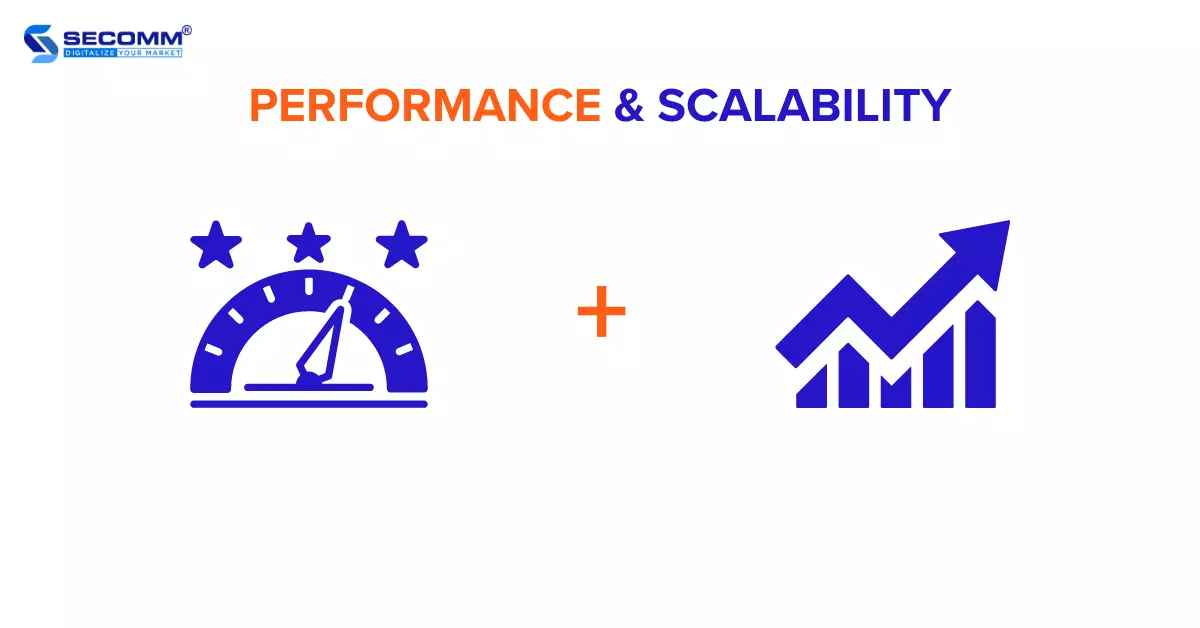
Flexibility & Customizability
Alongside performance and scalability, customization capability holds great significance for any business pursuing a platform to deploy Headless eCommerce. Evaluating the platform’s flexibility in design and user experience becomes crucial, ensuring effortless customization of frontend to meet specific business needs.
Security
Security is of utmost importance for any eCommerce platform. When choosing, you must ensure the platform adheres to standard security measures, such as secure payment PCI DSS, SSL encryption, and more.
Analytics & Reporting
Data analytics and reporting play a vital role in optimizing eCommerce operations and making informed decisions. Therefore, you should seek a platform with powerful analytics and reporting capabilities to provide comprehensive insights into customer behavior, sales effectiveness, conversion rates, and other essential metrics.
Customer Support
Opting for a Headless eCommerce development on a platform that provides valuable support resources like developer documentation, forums, and support communities, or responsive customer service directly from the platform, can bring significant benefits. You should ensure they have access to necessary assistance throughout the entire implementation process.
Total Cost of Ownership
Ultimately, the cost is a determining factor for any eCommerce business’s choice. These costs may encompass licensing fees, hosting, development, maintenance, or integration expenses with third-party services. You must assess these costs in relation to the platform’s capabilities, ensuring they align with your budget and long-term business goals.
By considering these criteria, you can select an appropriate Headless eCommerce platform that meets their business needs, provides a seamless customer experience, and supports their long-term growth objectives.
The Best 4 Platforms for Headless eCommerce Development
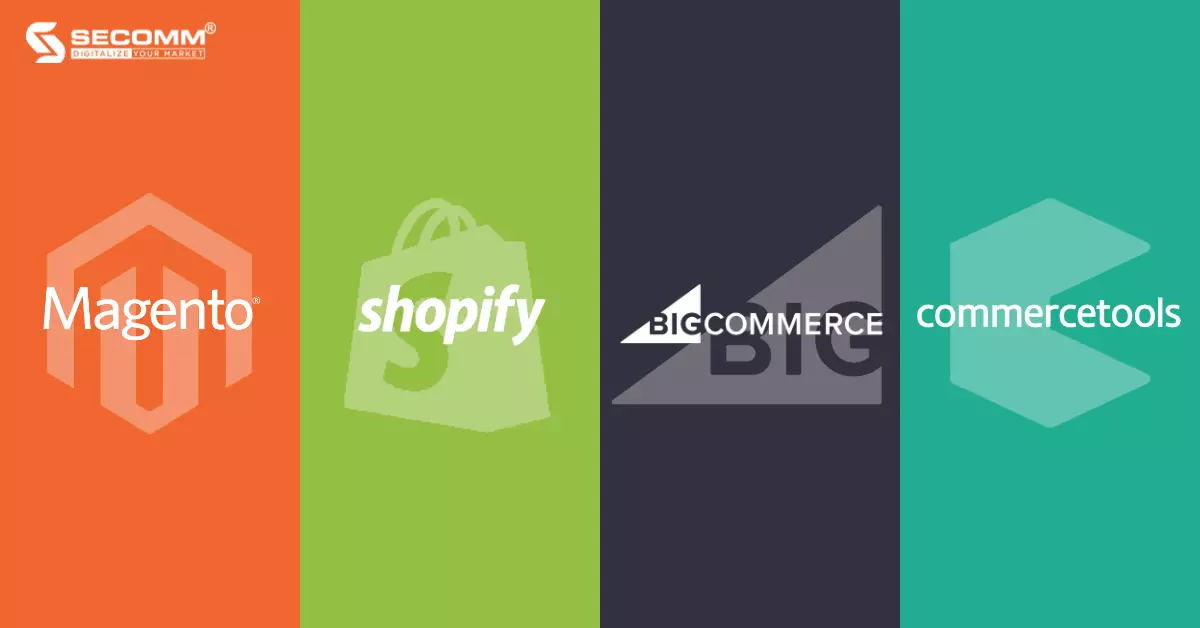
Magento (Adobe Commerce)
Magento is renowned as the world’s leading open-source eCommerce platform and currently ranks third in the market share among eCommerce platforms, following WooCommerce and Shopify
Magento has 2 editions:
- Magento Open Source: a free-to-use edition, but users still need to pay for hosting, domain, extensions, and development fees when hiring specialized Magento developers.
- Adobe Commerce: a paid edition with superior eCommerce solutions, suitable for large businesses with high development and expansion needs. It includes 2 versions: Adobe Commerce on-premise and Adobe Commerce on-cloud.
Pros
- Being open-source allows you to have complete control over the source code and infrastructure.
- With high flexibility and strong customization capabilities, it meets the needs of complex eCommerce requirements.
- Its excellent scalability is suitable for large-scale business operations.
- The powerful multi-store support enables seamless management of numerous stores across various locations from a single admin panel.
- Unified APIs and technologies across all channels enhance Omnichannel capabilities.
- From fundamental to advanced features, with a wide range of available extensions and integrations, it optimizes eCommerce functionality.
- Magento supports the creation of Progressive Web Apps (PWAs) with PWA Studio features
Related Reading: What is PWA? 4 Key Benefits of Developing PWA
Cons
- Complex development, security, and maintenance processes necessitate extensive technical expertise.
- High development costs and lengthy development timelines.
Shopify Plus
Shopify stands out as a leading SaaS eCommerce platform in the market, boasting over 3.75 million active stores in 2022.
Presently, Shopify provides two main editions:
- Shopify: Including standard packages (Basic, Shopify, Advanced) with different fees and features, catering to the requirements of small and medium-sized businesses.
- Shopify Plus: A comprehensive eCommerce solution at reasonable costs, tailored for medium to large enterprises, equipped with advanced features and tools to optimize business operations.
Pros
- The platform is designed to be user-friendly and accessible even for non-technical users.
- It boasts impressive performance and scalability, effortlessly handling high web traffic and numerous transactions.
- With the GraphQL Storefront API, you can deliver unique customer experiences across various channels like websites, mobile apps, and IoT devices.
- The Shopify App Store offers a wide range of powerful applications, extensions, and integrations exclusively tailored for Shopify Plus.
- Customizing the frontend is made simple with a user-friendly visual editor and direct code access.
- It facilitates omnichannel sales and automates eCommerce processes, resulting in operational resource savings.
- It seamlessly integrates with various third-party tools and systems, including ERP, CRM, CMS, and more.
Cons
- The customization capabilities of Shopify Plus are good, but they still cannot be compared with open-source platforms. For example, regarding payment gateways, it only allows integration with Shopify’s partner gateways such as PayPal, 2Checkout, PayDollar, Skrill, etc. Businesses aren’t permitted to integrate with other gateways outside this list.
- The eCommerce data of businesses using Shopify Plus is locked into Shopify Plus’s database. This dependency poses risks from the provider (Shopify Plus) and limits the business’s ability to access its entire data.
- While Shopify Plus supports creating multiple stores alongside the main store, compared to Adobe Commerce, the capabilities of Shopify Plus are somewhat limited. The platform restricts the number of stores and locations businesses can add, and businesses cannot manage multiple stores within the same Shopify Plus account.
- The cost is not fixed and increases based on revenue, development, and integration needs.
Usage cost: Starts from $2,000/month and increases based on revenue.
Related Reading: What is Shopify Plus? The Pros and Cons of Shopify Plus
BigCommerce Enterprise
Similar to Shopify, BigCommerce is also one of the leading SaaS eCommerce platforms with notable features that help businesses establish a fast and easy online presence.
The BigCommerce Enterprise edition serves large-scale enterprises with various optimized business operation solutions. Among them, the BigCommerce Headless eCommerce solution stands out, enabling businesses to create a consistent customer experience along with many other supportive solutions that ensure quick website launch and easy customization.
2.3.1 Pros
- An easy-to-use and intuitive platform.
- A powerful API architecture for building custom user interface solutions to meet complex requirements.
- Create and manage multiple headless storefronts within a single dashboard.
- High scalability and fast web performance.
- Robust Headless features that can integrate with frontend frameworks (Next.js, Gatsby.js, and Nuxt.js), CMS, DXP, ORM, etc.
- Capable of handling up to 600 SKUs per product.
- Drive omnichannel sales.
- Excellent support for building PWAs
2.3.2 Cons
- Similar to Shopify Plus, the customization capabilities of BigCommerce Enterprise are good, but still cannot be compared with Open-Source platforms.
- There are limitations in controlling the backend infrastructure and accessing the database.
- The payment process still utilizes the BigCommerce domain, leading to authentication and security issues.
- High deployment costs.
Usage cost: Starts from $400/month and can go up to $20,000/month
commercetools
commercetools is a pioneering platform for Headless eCommerce worldwide. Developed based on MACH principles (Microservice-based, API-first, Cloud-native, and Headless), Commercetools supports businesses in building and customizing eCommerce solutions tailored to their needs and their customers’ needs.
Pros
- High scalability and customization capabilities.
- Drive omnichannel sales.
- Powerful features and functionalities: category management, unified shopping cart, order management, machine learning, etc.
- Pre-built building blocks enable businesses to create their own backend structure.
- The API-first approach promotes flexibility and scalability, optimizing development time and ensuring compatibility between functionalities.
- Free 60-day trial.
Cons
- Requires technical expertise and experience for development.
- Limited advanced features for large enterprises, requiring specific custom development.
- Smaller user base and community support compared to more established platforms, making it challenging to find assistance.
- The initial development cost with Commercetools is quite high and depends on annual revenue, integration needs, scalability, etc.
Usage cost: The pricing is not publicly available, and businesses need to contact Commercetools for further discussion. However, here are some reference points. The implementation cost starts from $300,000, and the licensing fee begins at $200,000 per year.
With extensive experience in advising platform selection and supporting eCommerce implementation for numerous businesses worldwide, SECOMM always emphasizes that choosing the right platform is the first step towards success.
Contact SECOMM or call directly at the hotline number (02871089908) now for a free consultation.
 2
2

 8,992
8,992

 0
0

 1
1
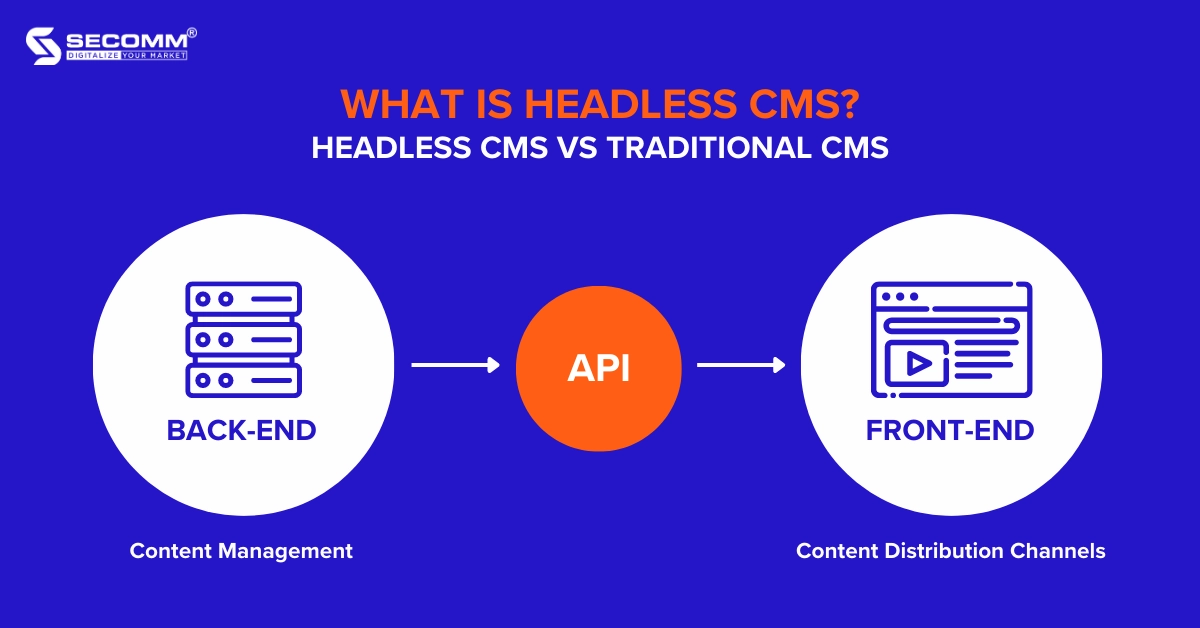
WHAT IS HEADLESS CMS? HEADLESS CMS VS TRADITIONAL CMS
Table of Contents
Previously, Traditional Content Management Systems (CMS) were the go-to solution for businesses to develop websites and establish an online presence. However, the Fourth Industrial Revolution and the rise of the Internet of Things (IoT) have brought about a redefinition of online presence.
Today, businesses worldwide compete to attract more customers from various digital channels like mobile apps, social media, and IoT devices. They can strive to deliver high-quality content across these channels to enhance the customer experience.
As a result, Headless CMS has gained popularity and replaced Traditional CMS. Headless CMS enables effective multi-channel content distribution, meeting the needs of businesses in the modern era.
This article explains what Headless CMS is and how it differs from Traditional CMS.
What is Headless CMS?
This is a content management system that separates the backend, where the content is stored (the body), from the frontend, the user interface (the head). That’s why it is called Headless.
Thanks to this separation, developers can use any technology they want for the backend without worrying about affecting the frontend. Meanwhile, marketers can create and store content once and deploy it across any digital channel because the content isn’t locked into a specific channel.
Simply because Headless CMS uses APIs to deliver a set of content across multiple channels, which is why it is sometimes referred to as an “API-first” CMS. Therefore, Headless CMS is particularly useful for implementing Omnichannel strategies to provide a consistent experience for customers.
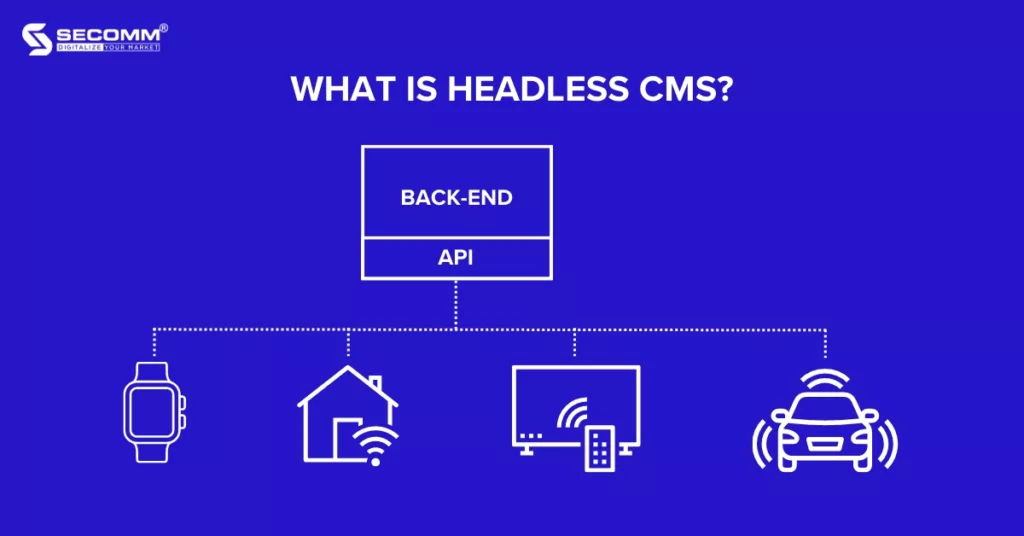
Unlike Headless CMS, Traditional CMS architecture tightly links the backend with the frontend. Traditional CMS controls content creation, storage, and display through a single channel, typically a web browser. The tight coupling of the backend and frontend results in content getting intertwined with frontend code, making it challenging to reuse content across channels and significantly impacting the Omnichannel strategy.
Headless CMS vs Traditional CMS
While Headless CMS has gained widespread popularity as a flexible solution for multi-channel content distribution, Traditional CMS still plays a significant role in the business growth journey for many companies
Hence, when making a decision on which CMS approach to adopt, you need to carefully consider their development requirements and weigh the pros and cons of both Traditional CMS and Headless CMS.
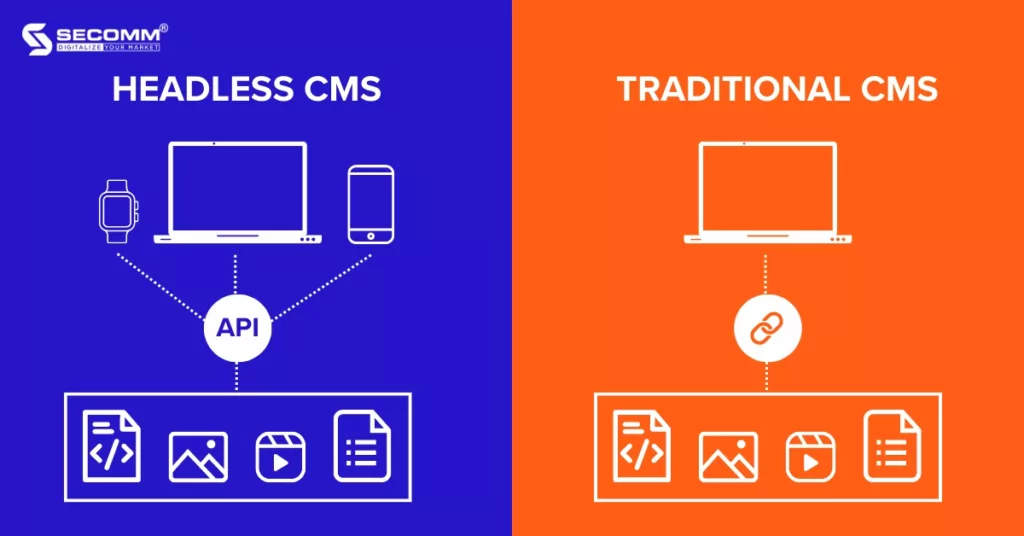
Traditional CMS
Pros
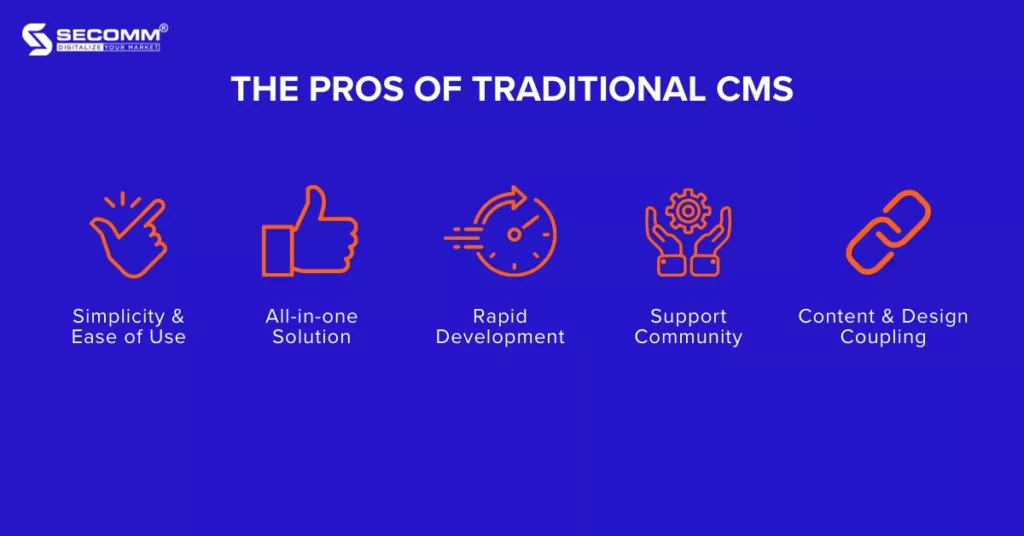
- Simplicity & Ease of Use: Traditional CMS provides user-friendly interfaces and pre-built templates, making it easy for users to create and manage content without requiring in-depth technical knowledge or programming skills
- All-in-one Solution: Traditional CMS will provide a comprehensive set of features, functionalities, and integrated tools for content creation, organization, publishing, and management, including SEO optimization, eCommerce capabilities, and more.
- Rapid Development: Using Traditional CMS can help your business accelerate the website development process by leveraging ready-made templates to quickly create and launch web pages, especially for projects with time or resource constraints.
- Support Community: You will easily find support from a large user community of Traditional CMS platforms, along with abundant documentation and a plethora of plugins and extensions.
- Content & Design Coupling: For Traditional CMS platforms, the content management backend is tightly integrated with the user interface frontend, ensuring a consistent and cohesive visual experience throughout the entire website.
Cons
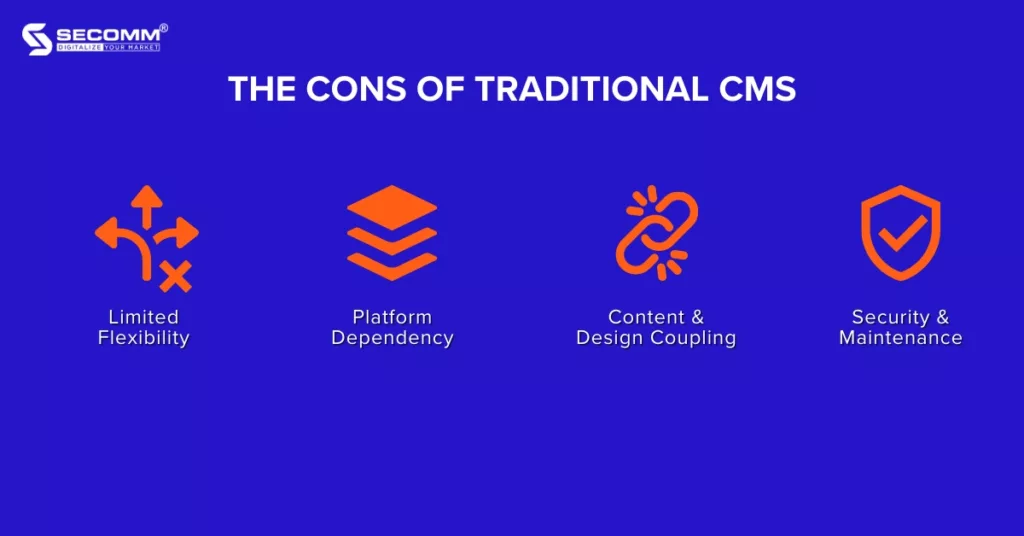
- Limited Flexibility: Traditional CMS platforms limit customization and flexibility. These CMSs provide pre-built templates, features, and tools, so implementing unique designs or complex functionalities would require significant investment in customization and development.
- Platform Dependency: Developers and content creators working within the ecosystem of a specific Traditional CMS platform may face challenges when transitioning to a different CMS. They would need to migrate content and redesign the website, causing inconvenience and consuming time.
- Content & Design Coupling: This capability is both an advantage and a disadvantage of Traditional CMS platforms, as it poses challenges for content reuse across different channels. This leads to inconsistent content distribution across all channels and impacts the customer experience.
- Security & Maintenance: Traditional CMS platforms can have security risks if not updated and maintained properly. Issues such as system complexity and hidden bugs in plugins or extensions require businesses to regularly update and maintain.
Headless CMS
Pros
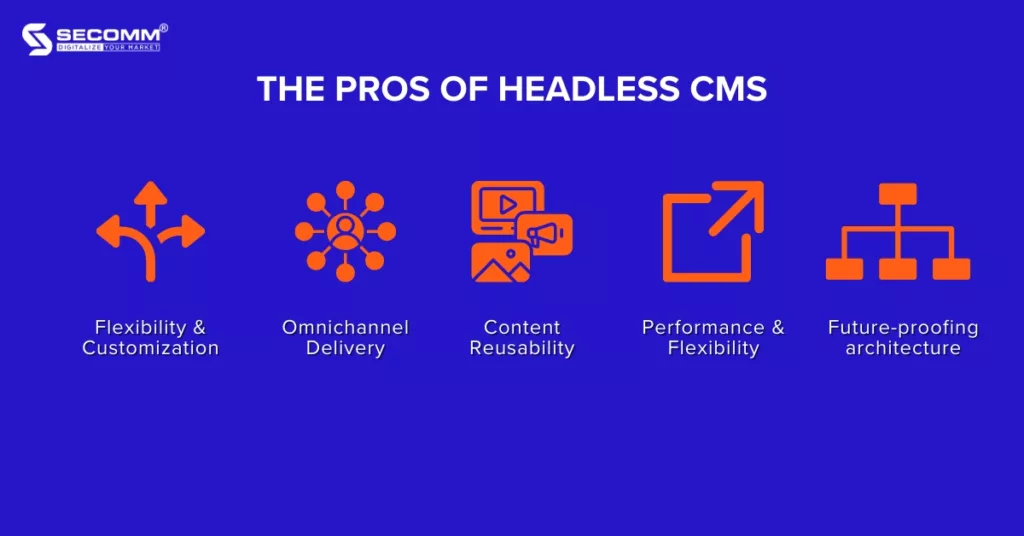
- Flexibility & Customization: Headless CMS empowers developers to have full control over the frontend development process. They can choose the most suitable technologies and frameworks to meet development needs, enabling them to create flexible and innovative customizations.
- Omnichannel Delivery: Headless CMS excels in effortlessly distributing content through APIs to various platforms and channels, including websites, mobile applications, social media, IoT devices, and more. This ensures a seamless and consistent user experience across multiple channels.
- Content Reusability: The separation of the backend and frontend in Headless CMS allows marketers to effortlessly reuse previously created and stored content across various digital channels. This saves your time and effort by eliminating the need to recreate content for each specific platform.
- Performance & Flexibility: The separation of backend and frontend enables each component to concentrate on its specific tasks. It enhances performance and scalability, making Headless CMS well-suited for high-traffic websites or applications.
- Future-proofing architecture: Kiến trúc của Headless CMS được thiết kế linh hoạt và nhanh nhạy, có thể thích ứng với các công nghệ và nền tảng mới. Khi các công nghệ mới xuất hiện, việc tích hợp với Headless CMS khá đơn giản, giúp doanh nghiệp luôn thích nghi tốt trong bối cảnh công nghệ kỹ thuật số không ngừng thay đổi.
Cons
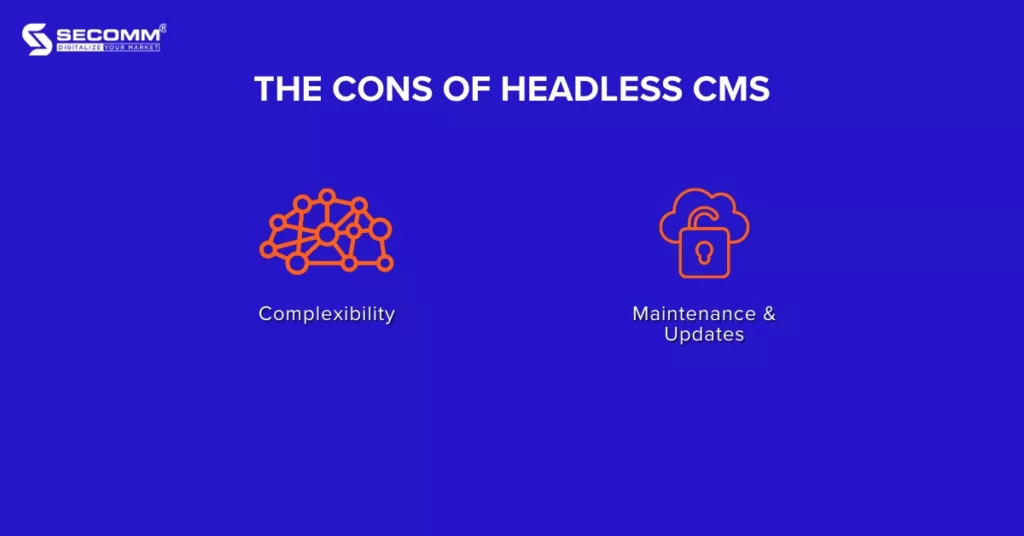
- Complexibility: For non-technical users, the setup and management of a Headless CMS can pose difficulties. Developers and content creators may need to familiarize themselves with modern technologies when working with Headless CMS. Moreover, while Headless CMS offers great flexibility, integrating third-party services, managing APIs, and ensuring data consistency across various platforms and channels can be more complex compared to Traditional CMS platforms. Therefore, for a successful and efficient implementation of a Headless CMS, businesses will require a knowledgeable and technically proficient team or specialized expertise to handle the deployment.
- Maintenance & Updates: Because of the separation between content storage and user interface, the development process in Headless CMS requires the separate management of these two aspects. Therefore, Headless CMS requires regular maintenance and updates to ensure compatibility, security, and system performance.
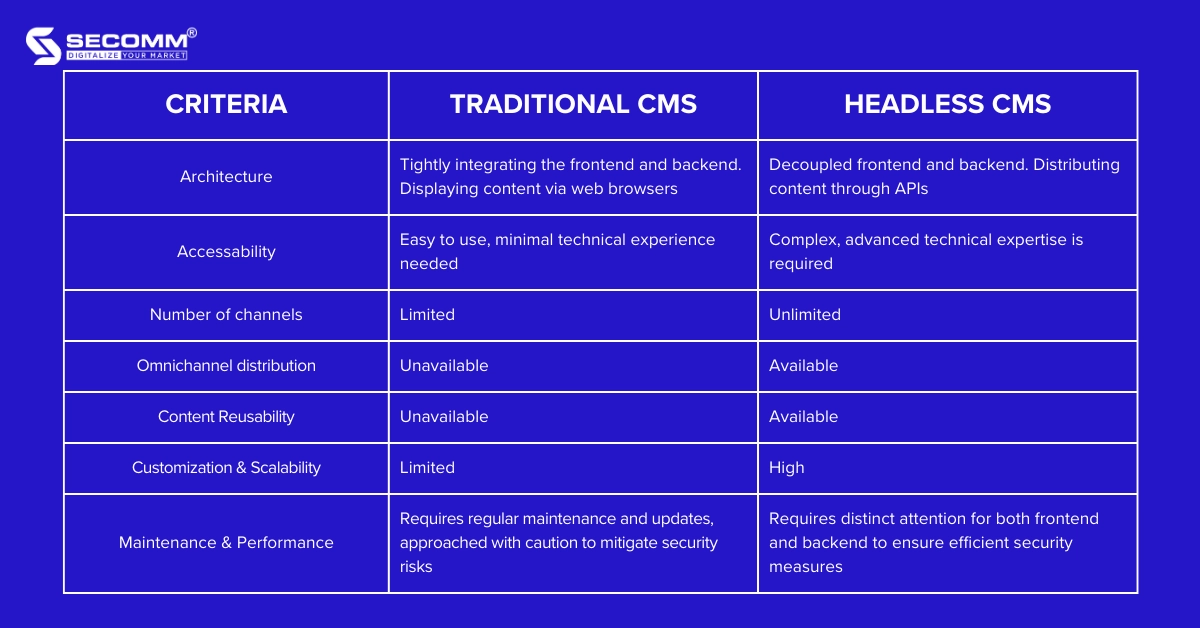
Who is Headless CMS best for?
Considering the pros and cons of both Traditional CMS and Headless CMS, it is evident that small and medium-sized businesses with simpler data structures, limited technical expertise, and programming skills may find Traditional CMS a better choice.
However, the advent of Headless CMS has provided a boost for businesses seeking to thrive in the digital race and adapt to the trends of Industry 4.0. Therefore, Headless CMS is particularly suitable for medium to large enterprises that deal with substantial content volumes. With Headless CMS, businesses can effectively manage their extensive content repositories, ensuring scalability and performance even under high traffic conditions.
The structured content storage backend allows businesses to reuse content across various digital channels. Furthermore, the API-based content distribution of Headless CMS enables seamless multi-channel content delivery, effectively enhancing the reach of target customers. Additionally, the flexibility and integration capabilities of Headless CMS make it easier for businesses to integrate the latest technologies into their existing systems and maintain robust security measures.
Overall, Headless CMS provides businesses in the digital era with outstanding capabilities for efficient content management, optimized distribution, and flexible adaptation to ever-changing market trends.
With years of experience collaborating with businesses worldwide, SECOMM understands that effectively managing and distributing large volumes of content is a key goal for every eCommerce enterprise.
Contact SECOMM or call our hotline (02871089908) today to receive expert advice on effective multi-channel content distribution solutions, stand out from the competition, and adapt to the Industry 4.0 trends with Headless CMS.
 2
2

 11,463
11,463

 0
0

 1
1
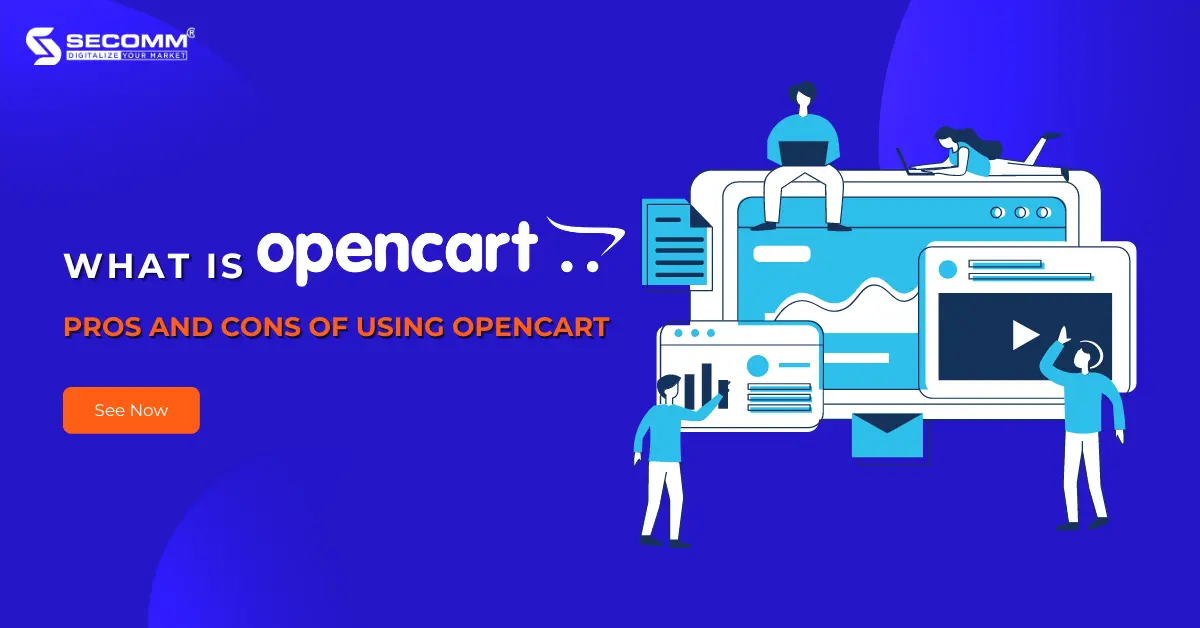
WHAT IS OPENCART? 7 KEY PROS AND CONS OF USING OPENCART
Table of Contents
The eCommerce platforms are often considered the “backbone” of any experienced business in the market. To embark on the eCommerce journey, your business needs to choose the right eCommerce platform to build your website.
In addition to Magento, WooCommerce, Shopify, Squarespace, PrestaShop, etcOpenCart become a popular choice for many international SMEs.
What is OpenCart?
OpenCart is an open-source eCommerce platform based on the PHP programming language, developed by Daniel Kerr in 1998. Currently, OpenCart offers two versions: Free and Cloud Store (Paid).
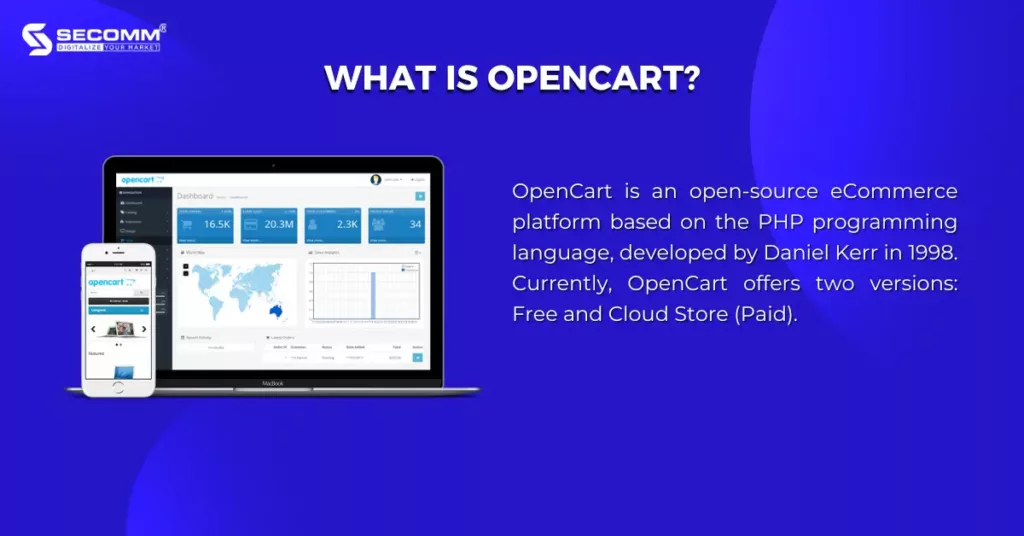
For the Cloud Store version, you have three solution options to build your eCommerce website:
- Bronze: €59/month, for small businesses (1 CPU 2GB)
- Silver: €99/month, for medium-sized businesses (2 CPU 4GB)
- Gold: €199/month, for enterprise-level businesses (4 CPU 8GB)
According to BuiltWith, there are over 2,500 websites built on this platform. Some famous brands using OpenCart include WeLoveFine, GT Omega, Arrowfile, and Kleshna.
The Pros of Using OpenCart
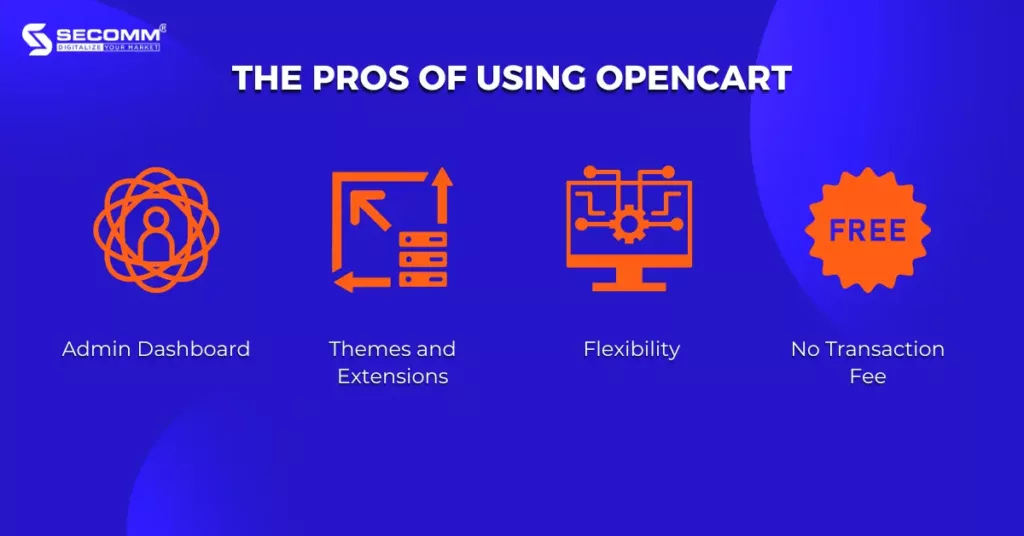
Admin Dashboard
OpenCart is a user-friendly platform, even for those without technical experience. You don’t need to invest much time in training staff to manage products, orders, customer information, or other features on the website.
Themes and Extensions
Over the years, OpenCart’s marketplace has offered more than 13,000 functional modules and ready-to-use themes. You can find suitable themes for any industry along with 3rd-party extensions, payment gateways, shipping providers, marketing tools, analytics, and reporting, which enrich your journey of building an eCommerce system.
Flexibility
With its nature as an open-source eCommerce platform, OpenCart has the ability to be flexibly customized. Also, you can own and control the entire source code. That said, you’ll customize code components, create updates, or even develop new features within the system based on your needs.
In addition, OpenCart also has good scalability, enabling you to upgrade to multiple languages and currencies for your global expansion goals.
No Transaction Fee
For eCommerce platforms like Shopify, and BigCommerce, operating on a licensing model. This means they charge fees for platform usage on a monthly/yearly basis. These platforms typically charge an average transaction fee of 1.5% to 2% per transaction. On the contrary, OpenCart’s Cloud Store version charges no fees.
The Cons of Using OpenCart
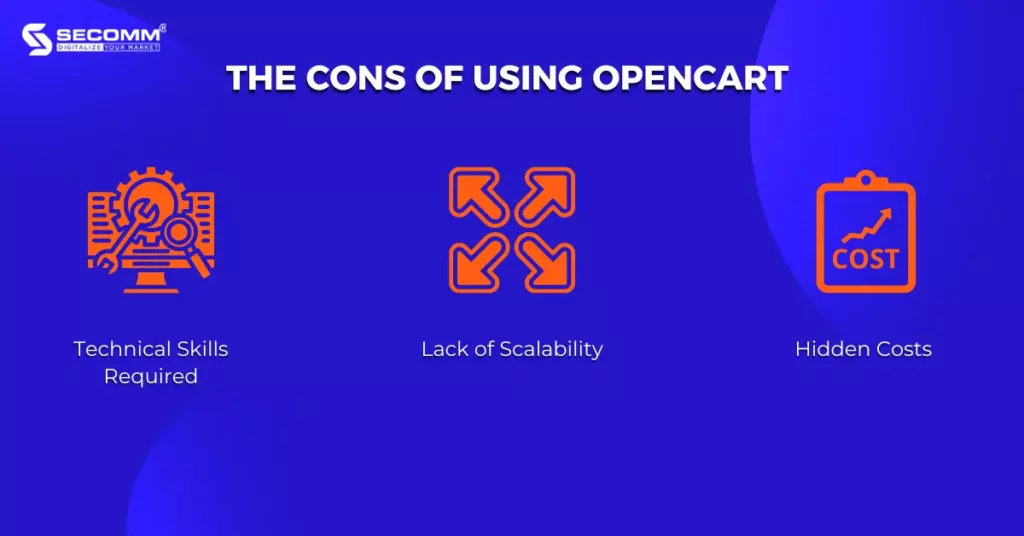
Technical Skills Required
OpenCart is an open-source platform built with one of the most complex programming languages — PHP. That means, to successfully develop your own eCommerce website, you should build a skilled in-house team or collaborate with an experienced agency.
Lack of Scalability
Although OpenCart offers many features, it may not be sufficient for you to manage and operate your complex eCommerce website. It’s different when compared to another PHP-based open-source eCommerce platform like Adobe Commerce (also known as Magento). Adobe Commerce allows you to expand from one website to multiple websites while managing them under the same system effectively.
Hidden Costs
It’s worth noting that OpenCart doesn’t charge transaction fees and it’s affordable cost of using OpencCart’s Cloud Store compared to other platforms. However, you need to add up the expenses for integrating various extensions. Each extension typically costs a minimum of $20 per month.
But if you want to create a comprehensive eCommerce website system, you may need at least 10 extensions. As a result, when opting for OpenCart, you should be aware of the potential hidden costs associated with these extensions.
OpenCart, with its own set of pros and cons, is generally a suitable eCommerce platform for small and medium-sized enterprises (SMEs). However, large-sized businesses looking for open-source eCommerce solutions may find platforms like Magento or Shopify Plus more fitting.
Having in-depth expertise and a track record of successfully developing complex eCommerce systems on Magento, such as Laybyland (Australia, US, New Zealand), Jasnor (Australia, New Zealand), and An Nam Group (Vietnam), SECOMM understands the challenges that businesses encounter when selecting and implementing an open-source eCommerce platform.
Get in touch with SECOMM today or call directly to the hotline at 02871089908 for a free consultation on tailored solutions for your eCommerce system development needs!
 2
2

 8,375
8,375

 0
0

 1
1
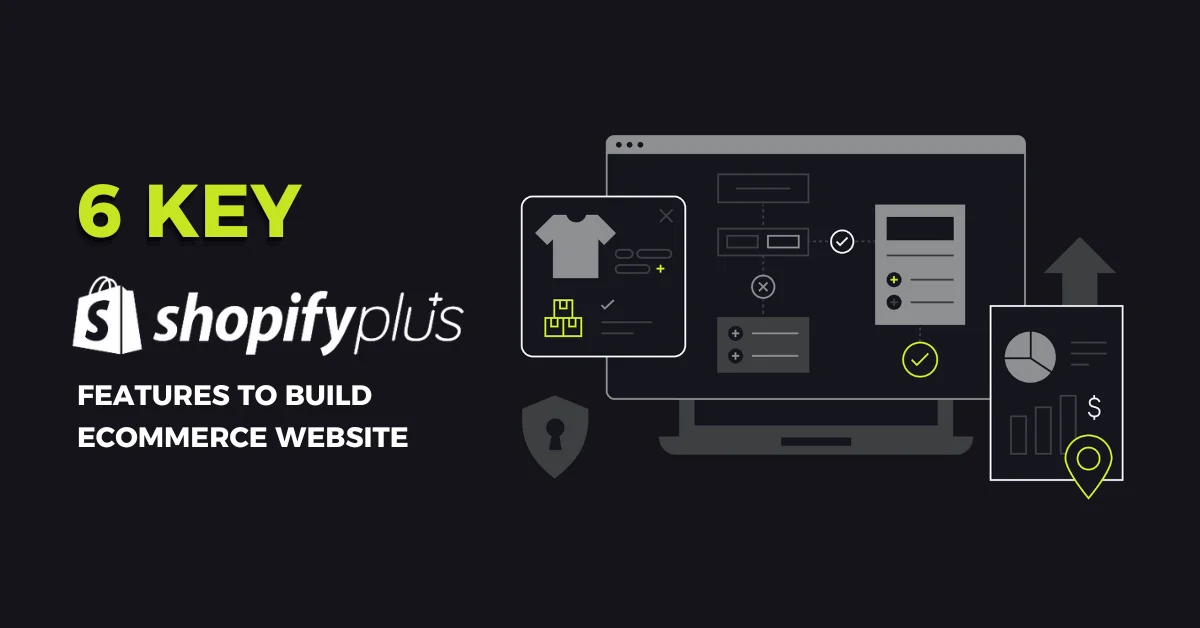
6 KEY SHOPIFY PLUS FEATURES TO BUILD ECOMMERCE WEBSITE
Table of Contents
Shopify Plus is a platform designed for high-growth eCommerce businesses. Over the years, Shopify Plus has been the top choice for leading global brands such as GymShark, Fashion Nova, Kylie Cosmetics, and more.
Simply because the platform successfully provides its customers with exceptional features to optimize the customer experience and enhance the effectiveness of sales and marketing strategy.
Here are the top 6 core Shopify Plus features that benefit enterprise-level brands in eCommerce website development.
Related Readings: Top 10 Most Successful Shopify Plus eCommerce Websites
Multi-store management
For retailers targeting sales in the global market, Shopify Plus is the go-to choice platform.
The platform provides a multi-store feature that allows businesses to create up to 9 additional stores in 20 different locations apart from the main store to track inventory and fulfill orders.
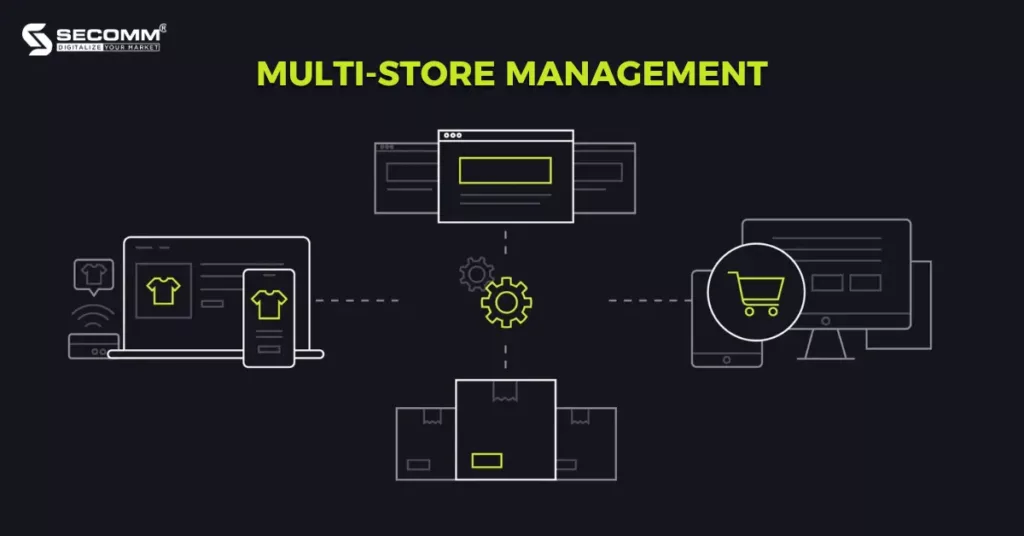
Each additional store will have its own domain, design, products, and customer data which can be managed from a single Shopify Plus account. This means businesses can easily switch between stores and manage everything from a single dashboard.
Omnichannel Capabilities
Not only Shopify Plus supports businesses in building a comprehensive eCommerce website while also facilitating Omnichannel implementation. The platform also allows businesses to provide their customers with a consistent shopping experience across channels, including websites, mobile apps, online marketplaces, social media, and physical stores.
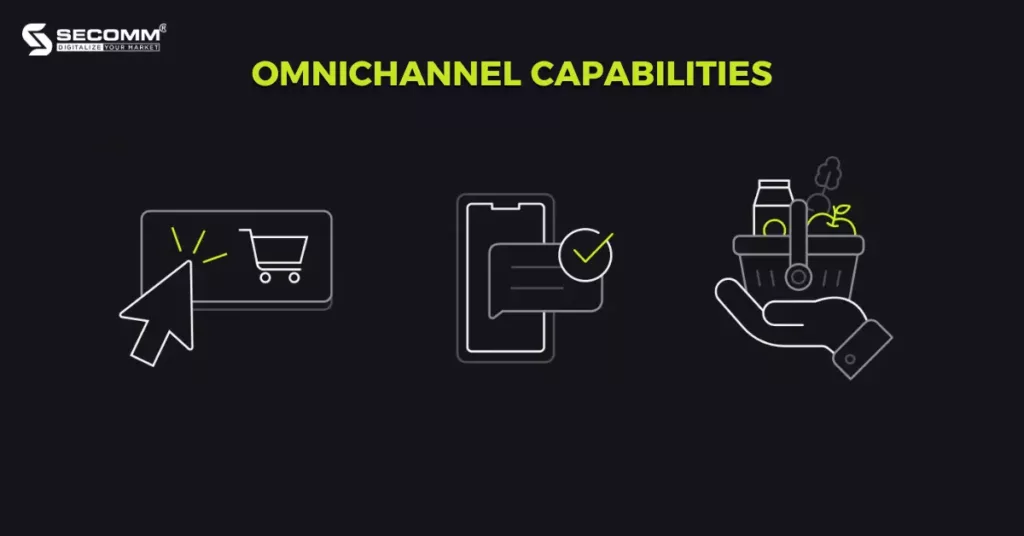
The Shopify POS feature helps seamlessly integrate sales points from online to offline. Businesses can use Shopify POS to track orders and inventory at all active sales channels.
Automatic Workflows
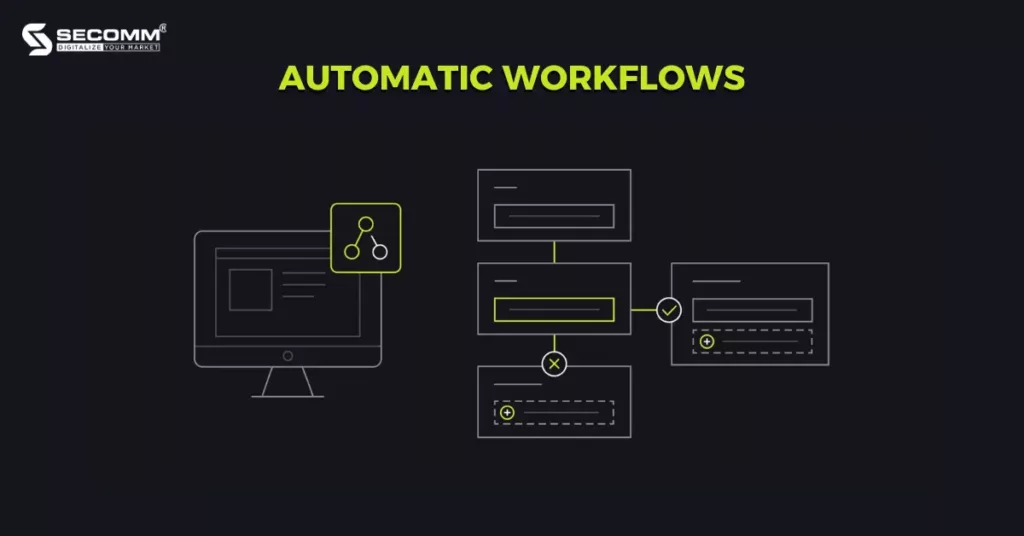
Shopify Flow
Shopify Flow is an eCommerce automation solution encouraged by Shopify for business implementing Shopify Plus.
Shopify Flow helps businesses handle repetitive tasks such as inventory management, fraud prevention, setting up loyalty programs, and fulfillment management quickly and automatically. This allows businesses to focus more on their core operations.
With Flow, businesses can rapidly build customized eCommerce automation workflows using visual, code-free blocks called triggers, conditions, and actions.
For example, an automated workflow to add customers to a loyalty program could unfold as follows:
- Trigger: An order has been placed
- Condition: If the order is equal to or exceeds $500
- Action: Tag the customer as VIP
LaunchPad
LaunchPad allows businesses to set up and automate the essential processes for organizing promotional events, flash sales, and product launches.
Using LaunchPad, businesses can:
- Create, and schedule automated tasks such as product uploads, price adjustments, image changes, and banners tailored to specific events.
- Set up complex scripts, such as providing free gifts with certain items, offering free shipping based on the type and value of the order, and evaluate sales performance between different periods and making adjustments to achieve set goals.
- Monitor campaigns to compare, analyze, and evaluate sales performance between different periods and make adjustments to achieve set goals.
Customize Checkouts Experience
If standard Shopify businesses need to leverage apps or alternative solutions, Shopify Plus businesses have access to Shopify Scripts.
This feature is exclusively available for Shopify Plus merchants and allows for personalized customer experiences at the cart and checkout stages. Businesses can use the Script Editor app to gain more control over how customers interact with their eCommerce website by creating special offers, and discounts, adding upsells, cross-sells, and customizing the checkout experience.
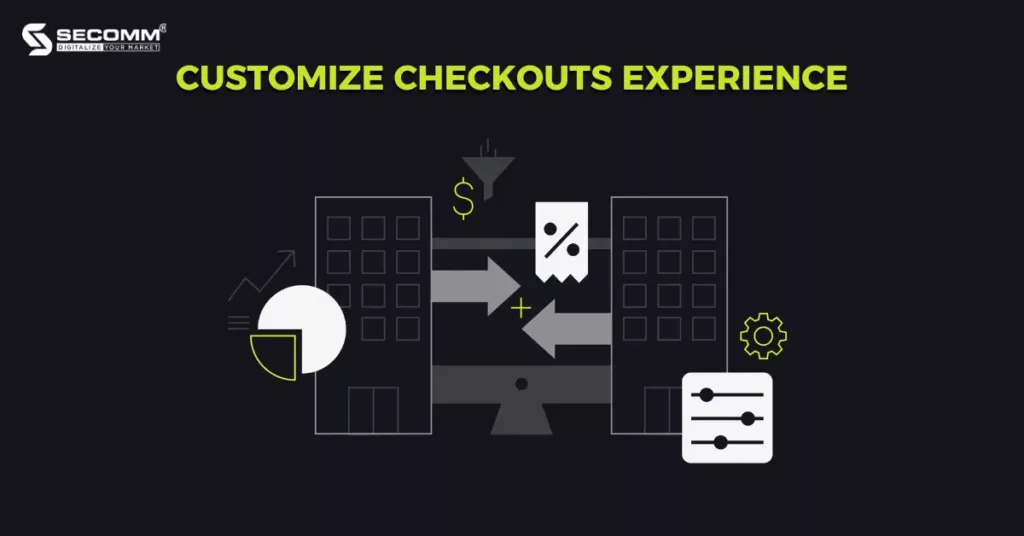
With Shopify Scripts‘ high level of autonomy, businesses can freely experiment to deliver unique experiences for their customers.
Three types of scripts include
- Line Item Scripts: These scripts can adjust the price of a specific product whenever it is added or removed from the cart.
- Shipping Scripts: These scripts can be used to modify shipping methods and fees.
- Payment Scripts: These scripts can rename, hide, and reorder payment gateways and will run every time a customer accesses the payment method page during checkout.
Here are some examples of scripts that can be customized:
- Percentage (%) discount for products.
- Dollar ($) discount for products.
- Bulk discounts.
- Buy One Get One (BOGO).
- Modify shipping fees.
- Rearrange payment gateways.
- Hide payment gateways.
Advanced Security
Shopify Plus meets the highest standards of online security, and all Shopify Plus businesses have SSL certificates used to encrypt sensitive information, such as credit card details.
Moreover, Shopify Plus provides two-factor authentication and account recovery features to protect websites from unauthorized access.
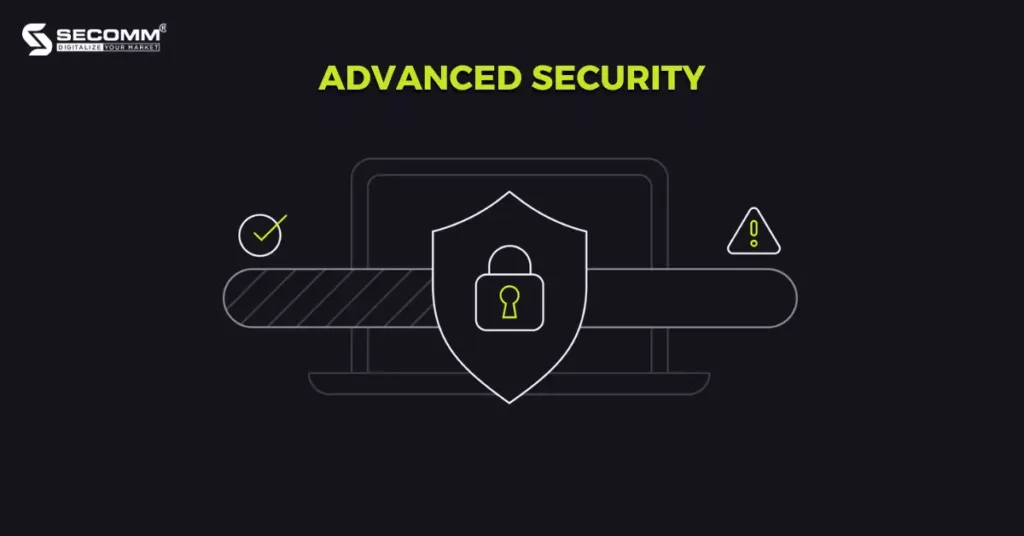
In particular, businesses can obtain an Extended Validation SSL certificate, which offers the highest level of protection available on Shopify Plus. In this case, a green padlock icon will be displayed in the browser’s address bar, assuring customers that the business’s website is secure to use.
Shopify Plus also offers fraud analysis tools that allow businesses to monitor their website for detecting any suspicious activities. For example, when any fraudulent orders are detected, the tool will flag them for the business to decide whether to cancel or fulfill the order.”
B2B Support
Shopify Plus offers a range of features to support B2B eCommerce operations, including:
- Flexible payment options
- Order and reorder management
- Customized pricing
- Integration with ERP, OMS, and CRM systems.
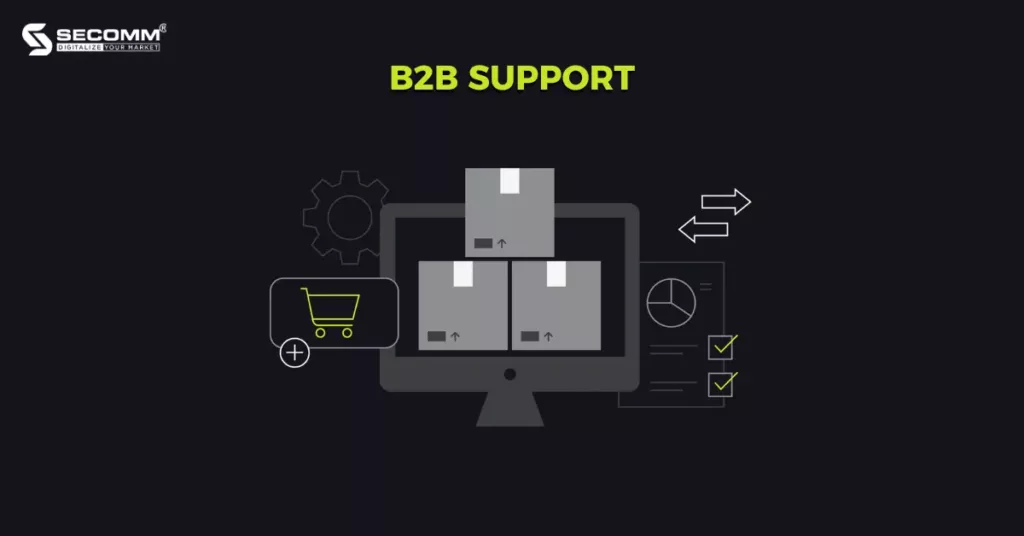
Additionally, businesses can set up wholesale channels to cater to customers with bulk purchasing needs.
Those are the 6 core features of Shopify Plus that you can leverage to boost your business operations efficiency and give your customers the best shopping experience.
Contact or call directly to the SECOMM hotline (02871089908) for a free consultation.
 2
2

 7,362
7,362

 0
0

 1
1
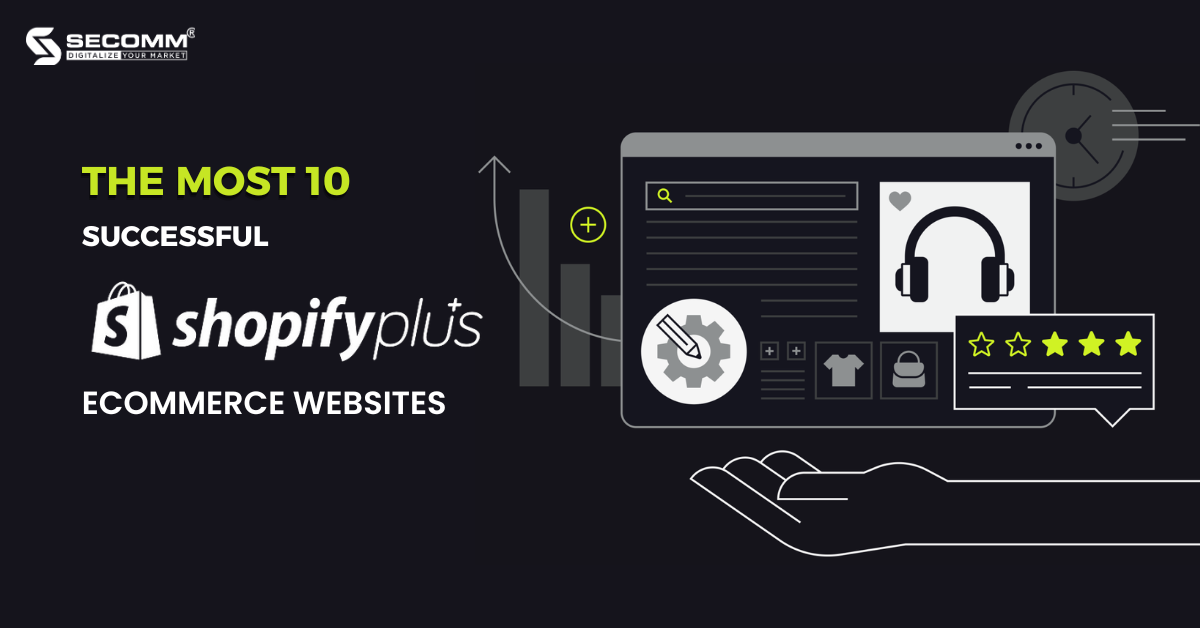
THE MOST 10 SUCCESSFUL SHOPIFY PLUS ECOMMERCE WEBSITES
Table of Contents
Shopify Plus is one of the most popular eCommerce platforms tailored for large-scale enterprises experiencing rapid growth. Currently, there are more than 27000 live webstores based on this platform.
Below, we highlight 10 brands that have achieved remarkable success in captivating customers through their online shopping experience by deploying eCommerce websites using Shopify Plus.
Kylie Cosmetics
The success of the Kylie Cosmetics brand lies on the fame and influence of Kylie Jenner on social media along with the smart business strategy that focuses on leveraging the power of eCommerce.

The brand chose to build their eCommerce website on Shopify Plus platform with a design that emphasizes simplicity, using pink and white as the main color tones. In addition, their website only displays products from the collection that they are currently promoting. This is also their core business strategy – they limit the quantity of products sold to target the customers’ FOMO mentality.
- Website: https://kyliecosmetics.com/
- Industry: Cosmetics
- Traffic: 572.7K/month
- Ranking: 23,944 (USA) & 89,414 (Worldwide)
GymShark
Another famous brand that deploys their Shopify Plus eCommerce website is GymShark. Established in 2012, the brand specializes in providing accessories and sportswear, with an initial value was around 1 million USA. Over the years, GymShark ultimately becomes a billion-dollar brand and makes their presence known in over 131 markets.

The GymShark website showcases an extensive product catalog for men, women, and children, offering a wide range of styles and sizes. Moreover, the brand integrates Instagram into their website to reach and engage with the growing users of this social media platform. Also, GymShark leverages their Instagram account to create outfit mix-and-match inspiration, using their own products, thereby encouraging purchases.
- Website: https://us.shop.gymshark.com/
- Industry: Sportswear
- Traffic: 8.2M/month
- Ranking: 2,706 (USA) & 4,927 (Worldwide)
Fashion Nova
Fashion Nova is a well-known fashion brand in North America and Europe, offering a wide range of fashion products and accessories for men, women, and children, with diverse styles, colors, and sizes that conform to the US-UK. fashion standard. In 2018, Fashion Nova topped the list of the most searched fashion brands on the internet.

Their eCommerce website is based on the Shopify Plus platform, enabling it to handle a massive amount of traffic, approximately 25.5 million visitors per month. The website features all the necessary functionalities with a distinct design specific to the fashion industry. Furthermore, Fashion Nova regularly releases new seasonal collections accompanied by enticing promotions to attract customers to shop on their website.
- Website: https://www.fashionnova.com/
- Industry: Fashion
- Traffic: 25.5M/month
- Ranking: 349 (USA) & 1,471 (Worldwide)
Cettire
Cettire is one of the leading online retailers of luxury fashion in Australia. The brand specializes in providing clothing, footwear, and accessories from over 1300 renowned luxury brands worldwide, such as Saint Laurent, Prada, Balenciaga, Gucci, and more. In 2020, Cettire was listed on the Australian Securities Exchange (ASX), with a total revenue of 124 million AUD for the fiscal year 2021.

The brand built their eCommerce website with the Shopify Plus platform. This helps the website attract the attention of fashion enthusiasts everywhere, not only because it is a destination for online shopping of luxury fashion brands but also because of its minimalist yet modern design with captivating videos and graphics.
- Website: https://www.cettire.com/
- Industry: High-end fashion
- Traffic: 4M/month
- Ranking: 7,189 (USA) & 11,333 (Worldwide)
Decathlon Viet Nam
Decathlon has a vast product catalog that can meet every need for sports training, ranging from gym clothes, running shoes, swimming goggles, and camping tents, to hiking backpacks. Therefore, it’s not surprising that Decathlon chose Shopify Plus to develop its eCommerce website to leverage the platform’s flexible customization and high scalability.

To keep up with the digital transformation trend, Decathlon places special emphasis on two sales channels: the website and the app, offering attractive promotional programs exclusively for customers who make purchases through these channels. Additionally, Decathlon integrates multiple payment methods and utilizes SSL encryption to ensure a safe and efficient online shopping experience.
- Website: https://www.decathlon.vn/vi
- Industry: Sportswear and accessories
- Traffic: 461M/month
- Ranking: 1,873 (Vietnam) và 91,416 (Worldwide)
Supersports
Supersports is the next sportswear and accessories brand on the list that uses Shopify Plus for its eCommerce website. It is a reliable shopping destination for genuine fashion items from major brands such as Puma, Under Armour, Fila, Crocs, Adidas, Nike, and more.

The brand regularly offers attractive promotional programs for customers shopping on their website. Also, Supersports dedicates a page on their website for customers to easily check ongoing promotional activities at their outlets. To ensure customers don’t miss out on any shopping deals, the company implements an exit popup that encourages customers to sign up and receive information about new products, special offers, and vouchers via their email.
- Website: https://supersports.com.vn/en
- Industry: Sportswear and accessories
- Traffic: 866.7M/month
- Ranking: 1,266 (Vietnam) & 63,546 (Worldwide)
Durex Viet Nam
No one is unfamiliar with Durex. In addition to focusing on enhancing their presence on social media platforms, Durex has also invested in developing their eCommerce website meticulously on the Shopify Plus platform to enrich the online shopping experience for their customers.

- Website: https://www.durexvietnam.vn/
- Industry: Health Community
- Traffic: 113,6M/month
- Ranking: 10,716 (Vietnam) & 494,850 (Worldwide)
Swee Lee Viet Nam
Swee Lee is one of the leading music instrument brands in Vietnam. The company’s eCommerce website is built on Shopify Plus, equipped with all the core features to operate and provide customers with the best shopping experience.
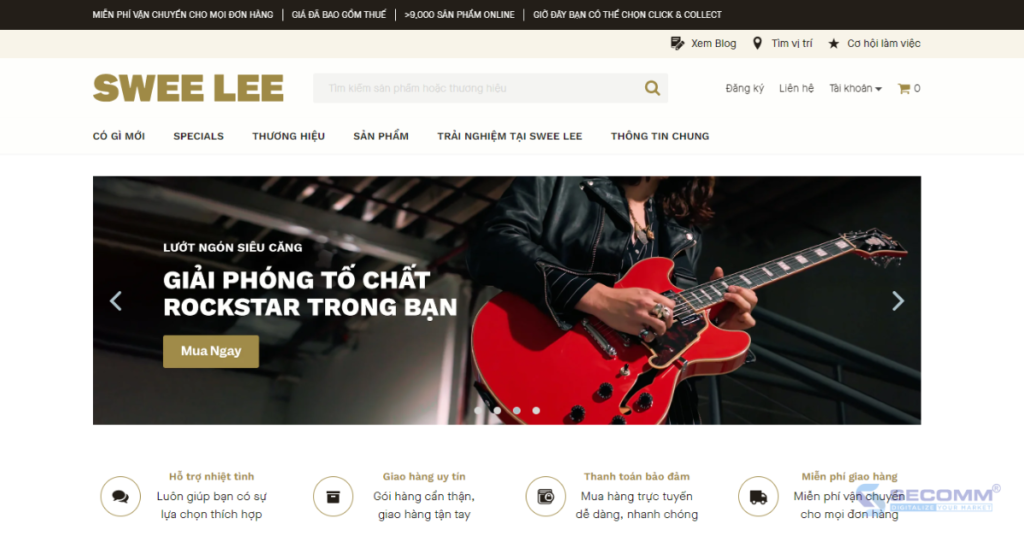
Swee Lee implements an exit popup to collect user emails for email marketing campaigns. The products available on the Swee Lee website are diverse, ranging from guitars, ukuleles, to pianos, with various attributes (e.g. models, prices, and brands).
- Website: https://www.sweelee.com.vn/
- Industry: Music Instruments
- Traffic: 33M/month
- Ranking: 27,269 (Vietnam) & 1,221,800 (Worldwide)
Skechers Viet Nam
The renowned American shoe brand, Skechers, also leverages Shopify Plus to build its eCommerce website. Skechers develops high-quality and comfortable product lines that align with current fashion trends. In addition to footwear for men, women, and children, the brand is also expanding its range to include clothing and accessories.

To encourage customers to shop more on the website, Skechers Vietnam consistently launches attractive promotional programs along with various gifts and vouchers.
- Website: https://www.skechersvn.vn/
- Industry: Footwear
- Traffic: 40,6M/month
- Ranking: 7,568 (Vietnam) & 340,941 (Worldwide)
Trollbeads Viet Nam
The website of Trollbeads, a renowned jewelry brand, is using the Shopify Plus eCommerce platform. As a pioneer in the world of exquisite gemstone jewelry, Trollbeads offers their customers luxurious and intricately crafted high-end jewelry pieces. Both men and women can customize their jewelry, including bracelets, rings, necklaces, and earrings, to suit their preferences, personalities, and individual stories.

Furthermore, on special occasions, Trollbeads showcases appropriate products on the website to facilitate easy selection for customers. Clear product images presented from multiple angles allow customers to observe the intricate design details and exquisite patterns of each jewelry item. Furthermore, the website has a dedicated section sharing the craftsmanship of artisanal handicrafts, the stories behind the gemstones, and jewelry care.
- Website: https://www.trollbeads.vn/
- Industry: Jewelry
- Traffic: 5.1M/month
- Ranking: 1,237,901 (Vietnam) và 14,795,357 (Worldwide)
SECOMM has listed out 10 successful eCommerce websites using the Shopify Plus platform, which have conquered customers and become leaders in their respective fields.
Related article: Shopify Plus vs Adobe Commerce: Key differences 2023
With years of experience successfully implementing eCommerce solutions for clients in multiple countries, SECOMM specializes in providing consulting services with comprehensive eCommerce deployment solutions.
Contact SECOMM or call our hotline (+842871089908) today to receive free support and consultation.
 2
2

 7,289
7,289

 0
0

 1
1
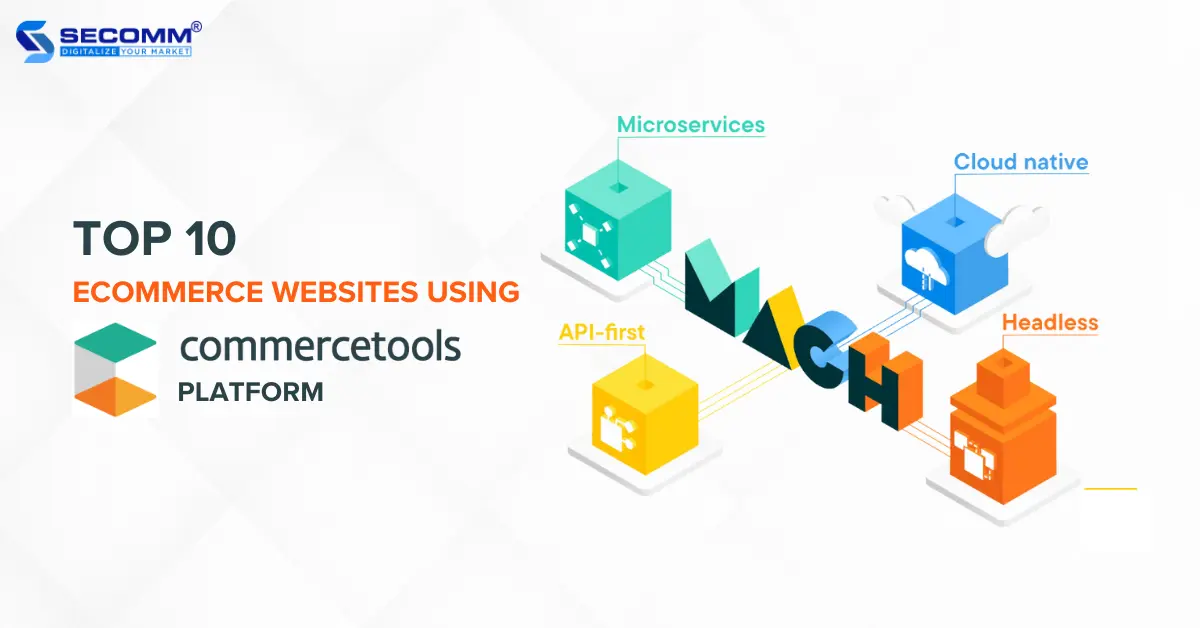
TOP 10 ECOMMERCE WEBSITE USING COMMERCETOOLS PLATFORM
Table of Contents
commercetools is a cloud-based eCommerce platform that provides a multi-channel approach, supporting businesses to build and manage eCommerce websites, mobile applications, and other sales channels seamlessly. Moreover, commercetools is a pioneer of Headless eCommerce.
Therefore, as businesses focus on enhancing multi-channel marketing and sales efforts to meet the increasing customer shopping experience demands, commercetools becomes particularly prominent.
Here are 10 brands that have utilized the commercetools platform to actualize their revenue and customer experience goals.
Chronext
Chronext is a renowned global brand specializing in buying and selling luxury watches, boasting a collection of over 7,000 products. Offering a wide array of watches, including new, pre-owned, and classic pieces, Chronext’s expert watchmakers thoroughly inspect each watch before sale and provide a 24-month warranty.
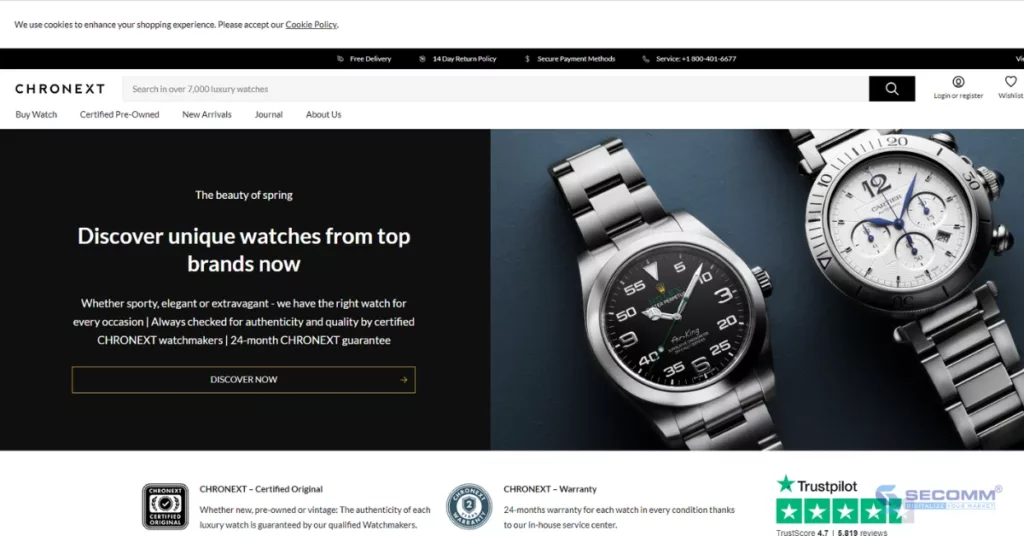
Chronext has implemented an eCommerce website using commercetools, contributing to a 300% increase in page loading speed, a 40% boost in SEO ranking, and a 10% increase in conversion rate. As a result, Chronext has achieved a solid reputation in the luxury watch industry, becoming a trusted destination for watch enthusiasts
- Website: https://www.chronext.com/
- Industry: Fashion
- Traffic: 161,7K/month
- Ranking: 377,247 (USA) & 302,679 (Global)
Promod
Promod is a French brand established in 1975, specializing in providing ready-to-wear fashion for women. This brand is currently present in France, Belgium, Luxembourg, Switzerland, and Malta.

Promod has utilized commercetools to develop an exceptional eCommerce website, aiming to achieve the expected revenue level and deliver a seamless shopping experience for customers.
- Website: https://www.promod.com/en/
- Industry: Fashion
- Traffic: 82.9K/month
- Ranking: 38,707 (France) & 310,507 (Global)
Ulta Beauty
Since opening its first store in 1990, Ulta Beauty has evolved into the largest cosmetics retailer in the United States and a premier beauty destination for cosmetics enthusiasts. The brand offers over 25,000 products from around 500 beauty brands, including its own Ulta Beauty Collection with attractive pricing.

With the need for rapid-scale expansion and the flexibility to implement changes to the platform, Ulta Beauty chose commercetools for its Headless eCommerce solution. In 2022, Ulta Beauty officially launched an entirely new eCommerce website, enabling the brand to manage an extensive product portfolio with over 1.3 million SKUs. This upgrade enhanced the shopping experience with features like the Buy Online, Pickup In-Store (BOPIS) solution.
- Website: https://www.ulta.com/
- Industry: Cosmetics
- Traffic: 34.8M/month
- Ranking: 241 (USA) & 1,214 (Global)
66°North
Since 1928, 66°North has been providing protective clothing for Iceland’s rescue teams, and this successful collaboration has driven the company to continue developing outdoor clothing and accessories with diverse designs. Today, 66°North has become a leading global brand in producing protective workwear suitable for all outdoor activities.

The 66°North website employs commercetools to transition from a monolithic model to a more flexible microservices-based system, tailored to the specific needs of 66°North. This collaboration has led to a 35% increase in average order value, a 75% repeat purchase rate, and a 50% increase in transactions per minute for the 66°North eCommerce website.
- Website: https://www.66north.com/
- Industry: Fashion
- Traffic: 141,8K/month
- Ranking: 557 (Iceland) & 304,892 (Global)
Danone
Danone is a leading global food and beverage company operating in four main business areas including Dairy and Plant-Based Products, Waters, and Nutritional Products for infants and patients. Danone currently sells products in over 120 markets.

During the crisis period of the Covid-19 pandemic, Danone accelerated its Direct-to-Consumer (D2C) eCommerce strategy and transitioned to a MACH model using commercetools to address shortages of infant formula in Europe. This move also aimed to adapt to sudden supply chain changes and local consumer demands. The addition of cart functionality to the brand websites helped customers access products more swiftly. Furthermore, this strategy allowed the company to expand its web capacity without encountering issues due to the sudden increase in access traffic.
- Website: https://www.danone.com/
- Industry: eGrocery
- Traffic: 362.7K/month
- Ranking: 34,589 (France) & 126,173 (Global)
Tamron
Anyone with a passion for photography is likely familiar with Tamron – a global leader headquartered in Japan. This company specializes in supplying camera lenses of varying focal lengths, catering to all types of cameras. Their products are distributed through a network of partners, local agents, and online platforms such as Amazon.

As part of their strategy to explore new markets, the company embraced Headless eCommerce through the utilization of commercetools on their subsidiary’s online store in Europe, operating under the name Tamron Europe and based in Germany. The beauty of Headless eCommerce lies in its ability to decouple the user interface (frontend) from the underlying data storage (backend), allowing Tamron Europe to construct and personalize their online store to meet both present and future requirements.
- Website: https://www.tamron.eu/en-GB
- Industry: Manufacture
- Traffic: 121,5K/month
- Ranking: 44,336 (Germany) & 337,575 (Global)
Emma The Sleep Company
With over 2 million mattresses sold and revenue exceeding 645 million euros in 2021, Emma The Sleep Company has become one of the fastest-growing sleep brands in the world.

Emma chose to partner with commercetools to develop a large-scale eCommerce platform to accommodate high traffic volumes. To encourage customer shopping on the website, the company introduced various attractive sales policies such as 0% financing, free shipping, free returns, and a 365-day trial period. Additionally, Emma’s eCommerce website is integrated with Instagram to interact more with customers by encouraging them to share images of their product experiences and tag Emma. As a result, the brand has attracted a considerable number of potential customers.
- Website: https://www.emma-sleep.com/
- Industry: online retail
- Traffic: 160,8K/month
- Ranking: 67,098 (Germany) & 326,056 (Global)
John Lewis & Partners
John Lewis & Partners (formerly known as John Lewis) is a renowned British retail brand with a rich history spanning over 150 years. The brand has utilized commercetools to aim towards the goal of transitioning from its legacy eCommerce platform to a microservices-led cloud service and flexible API-first approach.

The new John Lewis website offers a wide range of high-quality products, including clothing, household appliances, electronics, and beauty products. John Lewis provides a seamless shopping experience from offline stores to the app and eCommerce website. Through quality products, excellent customer care, and optimized payment policies, John Lewis has gradually established itself as a leading and trustworthy retail brand in the United Kingdom, catering to the diverse multi-channel shopping experiences of its customers.
- Website: https://www.johnlewis.com/
- Industry: eGrocery
- Traffic: 21.3M/month
- Ranking: 87 (UK) &1,986 (Global)
Kmart
Kmart is a renowned discount retail store chain in Australia, founded in 1969. To date, Kmart has over 200 stores across Australia and New Zealand, recognized as one of the most profitable discount retail chains in the land down under.
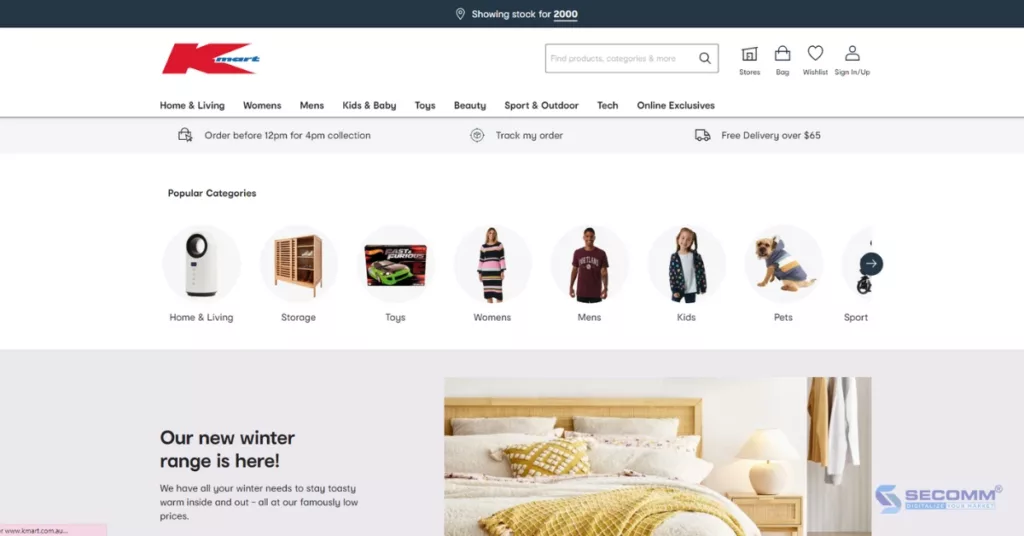
Kmart has undergone a transformation to a cloud-based platform – commercetools, leveraging serverless capabilities with a microservices architecture. By embracing this new technology, Kmart can flexibly customize and expand its eCommerce website to provide the best online shopping experience for customers, while also driving its digital transformation strategy.
- Website: https://www.kmart.com.au/
- Industry: eGrocery
- Traffic: 24.4M/month
- Ranking: 32 (Australia) & 2,013 (Global)
Express
Express is one of the world’s most renowned fashion brands, specializing in clothing and accessories for both men and women across various segments. Recognizing that the monolithic platform posed challenges to its growth, Express turned to Commercetools for a flexible, agile, and highly scalable eCommerce solution to adapt to market trends and the ever-changing shopping preferences of customers.

With a focus on stylish fashion products, Express’s website is designed with a minimalist yet modern and elegant aesthetic. Alongside a diverse range of promotional programs, Express offers customers multiple payment solutions to enhance their shopping experience, such as Buy Now, Pay Later (BNPL), Buy Online, Pick Up In Store (BOPIS), and Express credit card.
- Website: https://www.express.com/
- Industry: Fashion
- Traffic: 13.3M/month
- Ranking: 629 (USA) & 3,337 (Global)
Above are 10 businesses that have developed eCommerce websites with commercetools and achieved success in both branding and revenue. This success has become a source of inspiration for other businesses seeking solutions to elevate their business operations and enhance their competitive edge in the market.
With extensive experience deploying eCommerce solutions for clients in various countries, SECOMM understands the difficulties and challenges that businesses face during the implementation process.
Contact SECOMM today or call our hotline number (02871089908) directly for a free consultation.
 2
2

 11,405
11,405

 0
0

 1
1
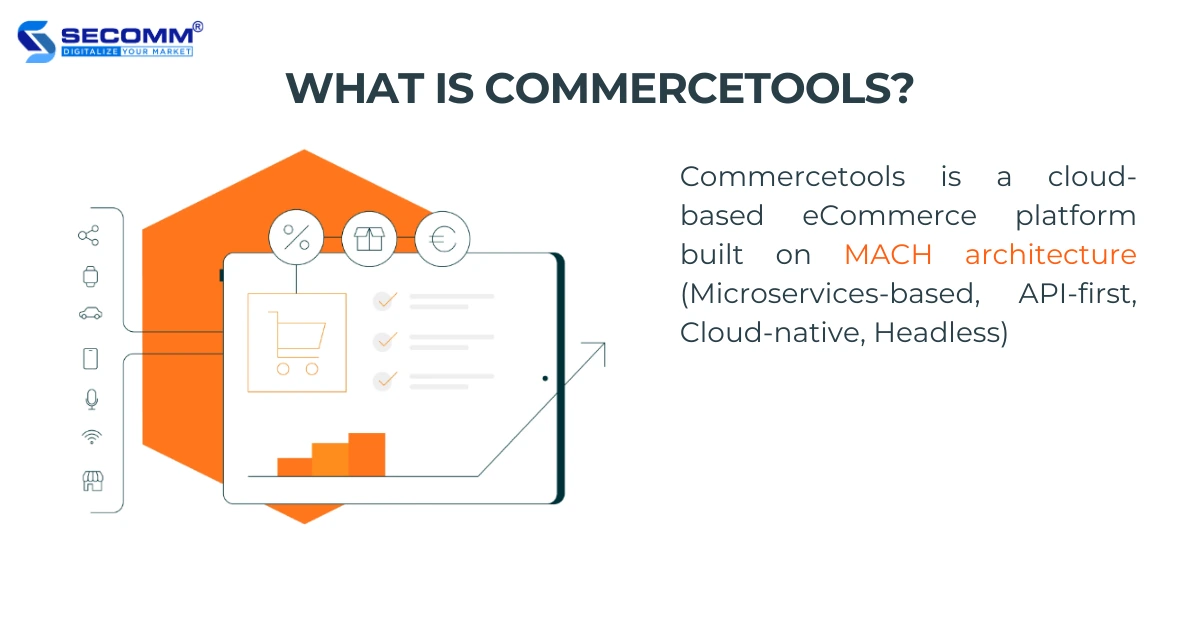
WHAT IS COMMERCETOOLS? 6 IMPORTANT PROS AND CONS OF COMMERCETOOLS
Table of Contents
Selecting the right platform to build an eCommerce website is always the first and foremost step in entering the billion-dollar market of online business.
According to Builtwith, there are more than 200 eCommerce platforms for building websites, with popular ones like Magento, WooCommerce, Shopify, and Wix leading the pack. Among them, there is one platform that many enterprise-level businesses favor, and that is Commercetools.
Since September 2021, Commercetools has raised a total of $308.1 million through six rounds of funding. In 2022, the platform achieved a net revenue milestone of $39.1 million, demonstrating its growth potential in the eCommerce industry.
What is Commercetools?
This is a cloud-based eCommerce platform built on MACH architecture (Microservices-based, API-first, Cloud-native, Headless), allowing you to tailor your eCommerce experience to fit the exact needs of your business and customers.
Beyond this, Commercetools is the creator of Headless Commerce solution, which enables you to customize and intercharge the backend and frontend without affecting each other.
Due to years of investment in eCommerce technology, it has been recognized as a ‘Leading platform’ by reputable consulting firms such as Gartner Magic Quadrant, Forrester B2C Commerce Solutions Wave™, and IDC MarketScape: Headless Digital Commerce.
Some well-known brands that are using the platform include Audi, BMW, Volkswagen, Qantas, and more
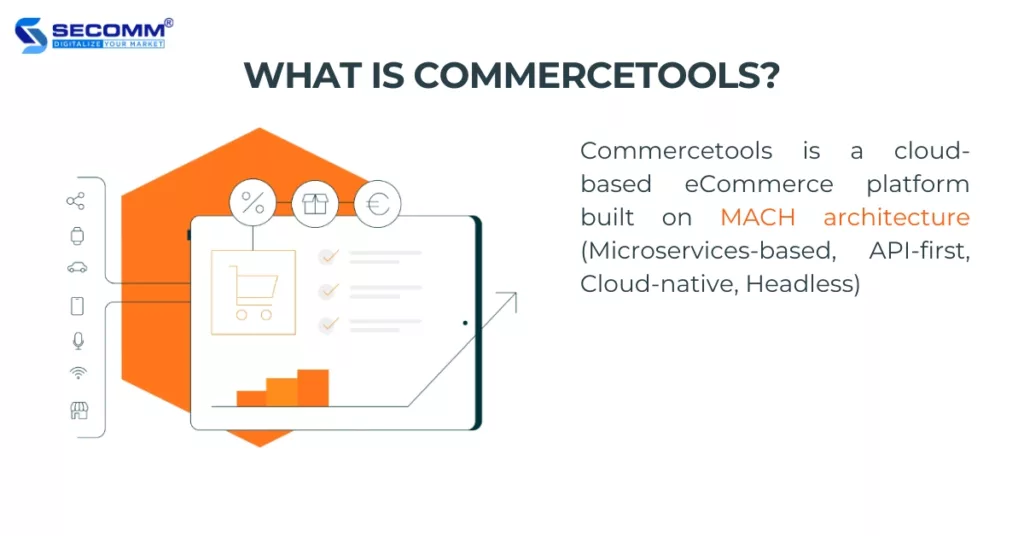
How does Commercetools work?
Microservices-based
Microservices-based is a software development architecture where applications are divided into smaller and independent components. In an eCommerce system, each microservice takes responsibility for a specific function and can undergo independent development, deployment, and management, separate from other microservices.
The Microservices-based architecture enhances flexibility and scalability, enabling developers and admins to easily maintain and update system components without affecting other parts.
This approach allows Commercetools to deploy frontend and backend components independently, resulting in faster, more reliable, and responsive performance compared to traditional approaches.
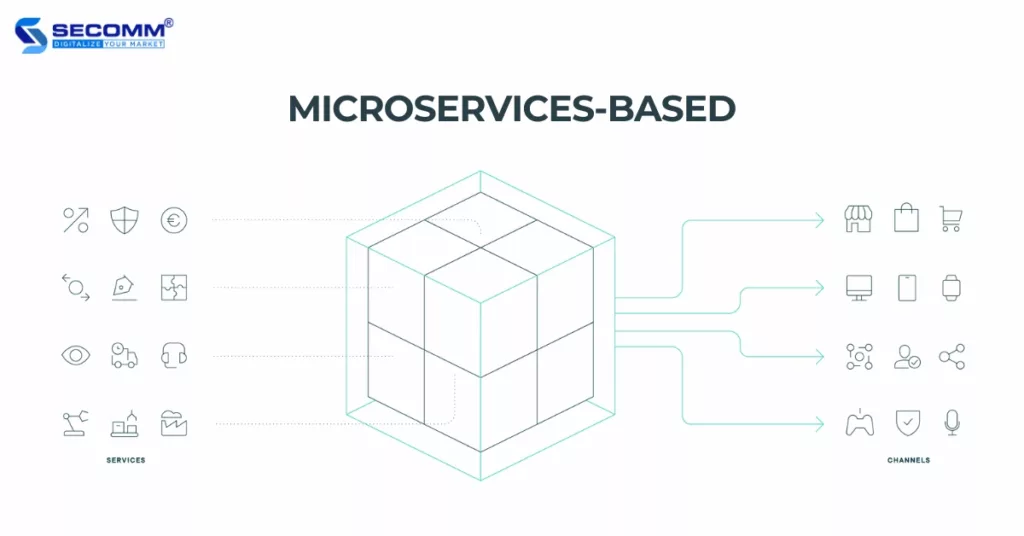
API-first
API-first is a software design approach that focuses on building Application Programming Interfaces (APIs) before developing an eCommerce system. Instead of developing the system first and then building corresponding APIs, API-first requires developers to define the necessary APIs upfront and then use these APIs to develop the entire eCommerce system.
This approach enhances system flexibility and scalability, reduces development time and ensures the compatibility and interaction between various functionalities.
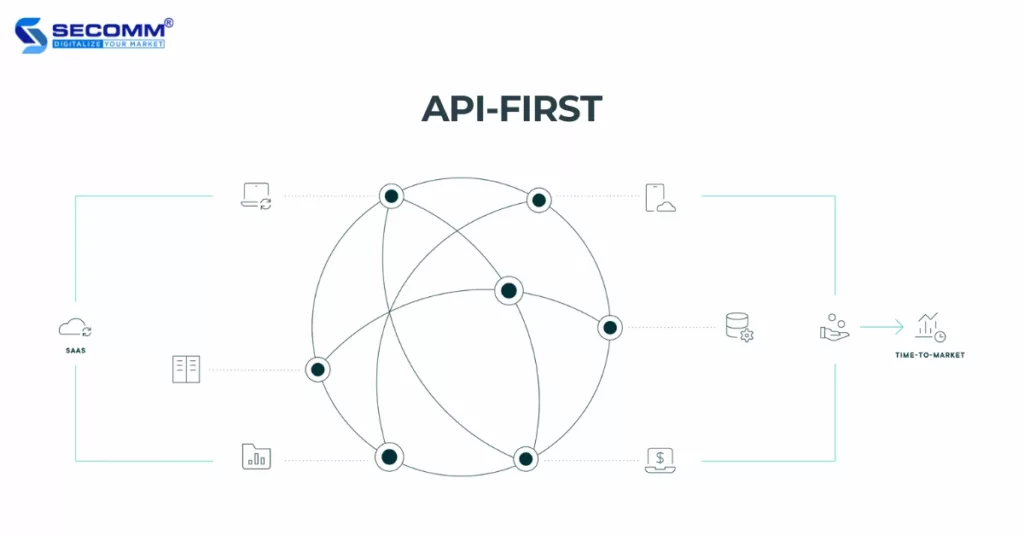
Currently, Commercetools provides over 300 separate APIs that you can use to build your eCommerce website.
Cloud-native
Cloud-native is a development and deployment architecture designed to leverage the cloud features such as flexibility, availability, security, and automation.
This architecture typically involves using distributed applications, microservices, automation and integrating extensions to achieve high readiness and scalability.
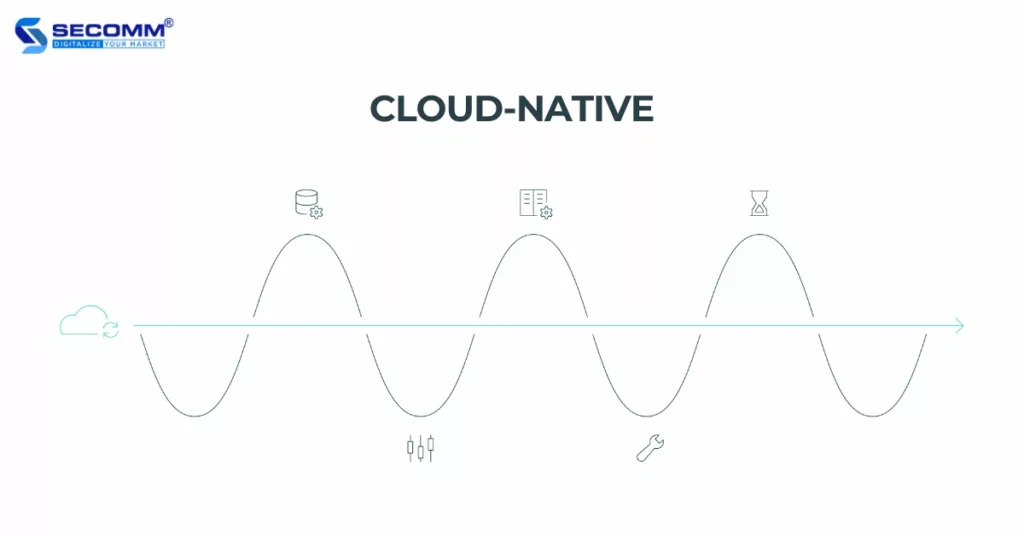
Commercetools leverage a cloud-native approach hosted on Google Cloud and Amazon Web Services (AWS), both well-known brands are widely used in certified data centers across Europe, the US, and APAC (Asia-Pacific).
Headless
Headless Commerce is an architecture where the user interface (UI) and the backend are decoupled and operate independently. In headless architecture, the UI is designed solely to focus on displaying content and interacting with users, while the backend is responsible for handling business logic, data storage, and providing APIs to interact with other applications.
The architecture provides high flexibility and scalability, allowing developers and admins to focus on a specific part of the system without having to change the entire architecture. It also enhances the application diversity and compatibility, as different UI software can be used to display content for users.
As a pioneer in Headless Commerce technology, Commercetools offers an open and decoupled environment that enables unlimited customization across all eCommerce channels.
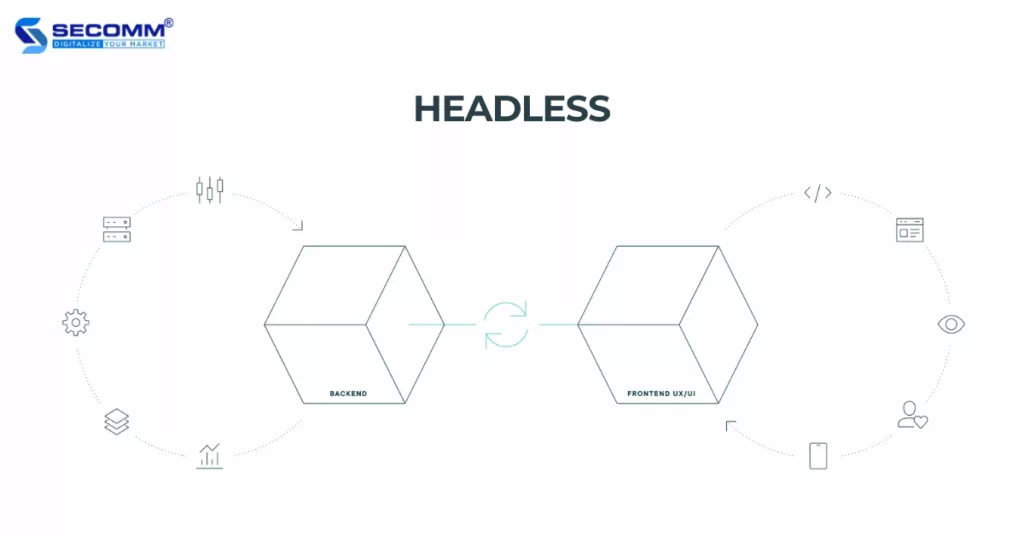
The pros of Commercetools
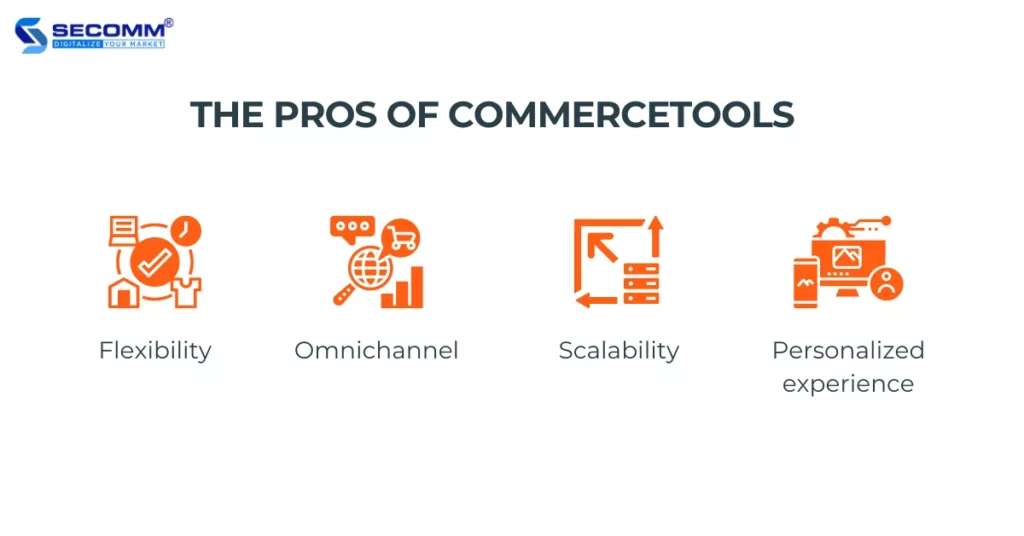
Flexibility
Commercetools has its ability to be flexible with the API architecture, making it compatible with any system and app. This allows you to easily integrate and expand your eCommerce system according to your specific needs.
Omnichannel
Commercetools supports Omnichannel including eCommerce websites, mobile apps, eCommerce marketplaces, social platforms, brick-and-mortar stores and more. This enables you to reach customers across multiple channels, boosting your conversion rates and revenue.
Scalability
Because Commercetools is built on MACH architecture, it has an ability to flexibly scale by adding or removing distinct functions as needed. This facilitates easy adaptation to the ever-changing market trends.
Personalized experience
Commercetools provides you with a personalization feature to improve your customer experience. This way, you can segment your customers based on their behaviors and preference, then offer them personalized promotions or product recommendations.
The cons of Commercetools
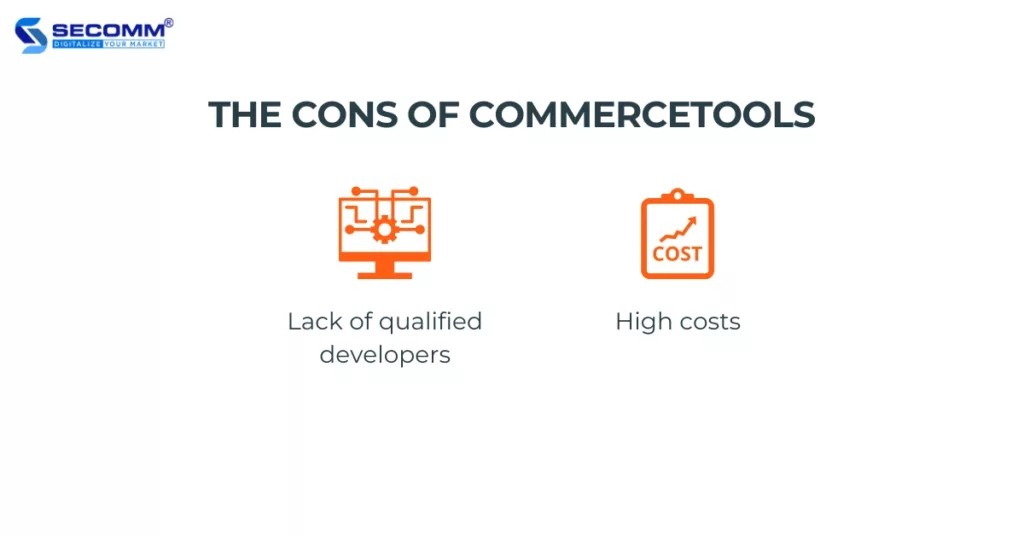
Lack of qualified developers
Commercetools is a highly customizable eCommerce platform, which requires a team of technical-skilled developers to deploy and maintain the eCommerce system.
Moreover, Commercetools is a relatively new platform compared to other popular ones like Shopify, Magento, WooCommerce, and more, so there may be fewer experienced agencies and developers available for you to choose from.
High costs
The cost of using Commercetools is quite high and will depend on your business’s total revenue, along with the development cost and the cost of integrating third-party plugins or apps.
If your business has a maximum annual revenue of around 100,000,000 USD, you would have to pay approximately 120,000 USD as an annual licensing fee for using Commercetools.
Commercetools is a platform that extensively applies advanced technologies to help businesses build highly complex eCommerce websites. However, it is primarily suitable for enterprise-level businesses, with substantial budgets to implement their specialized systems.
Related article: Top 10 eCommerce Websites Using Commercetools Platform
With years of experience implementing eCommerce solutions for various businesses around the world such as Changi Airport Group (Singapore), Laybyland (Australia), Vinamilk (Vietnam), Jasnor (Australia), My Market (Hong Kong), and more. SECOMM understands the potential of Commercetools for improving business operations, as well as the impediment involved in the development process.
Contact or call directly our hotline (+842871089908) to the SECOMM hotline for a free consultation.
 2
2

 8,081
8,081

 0
0

 1
1
